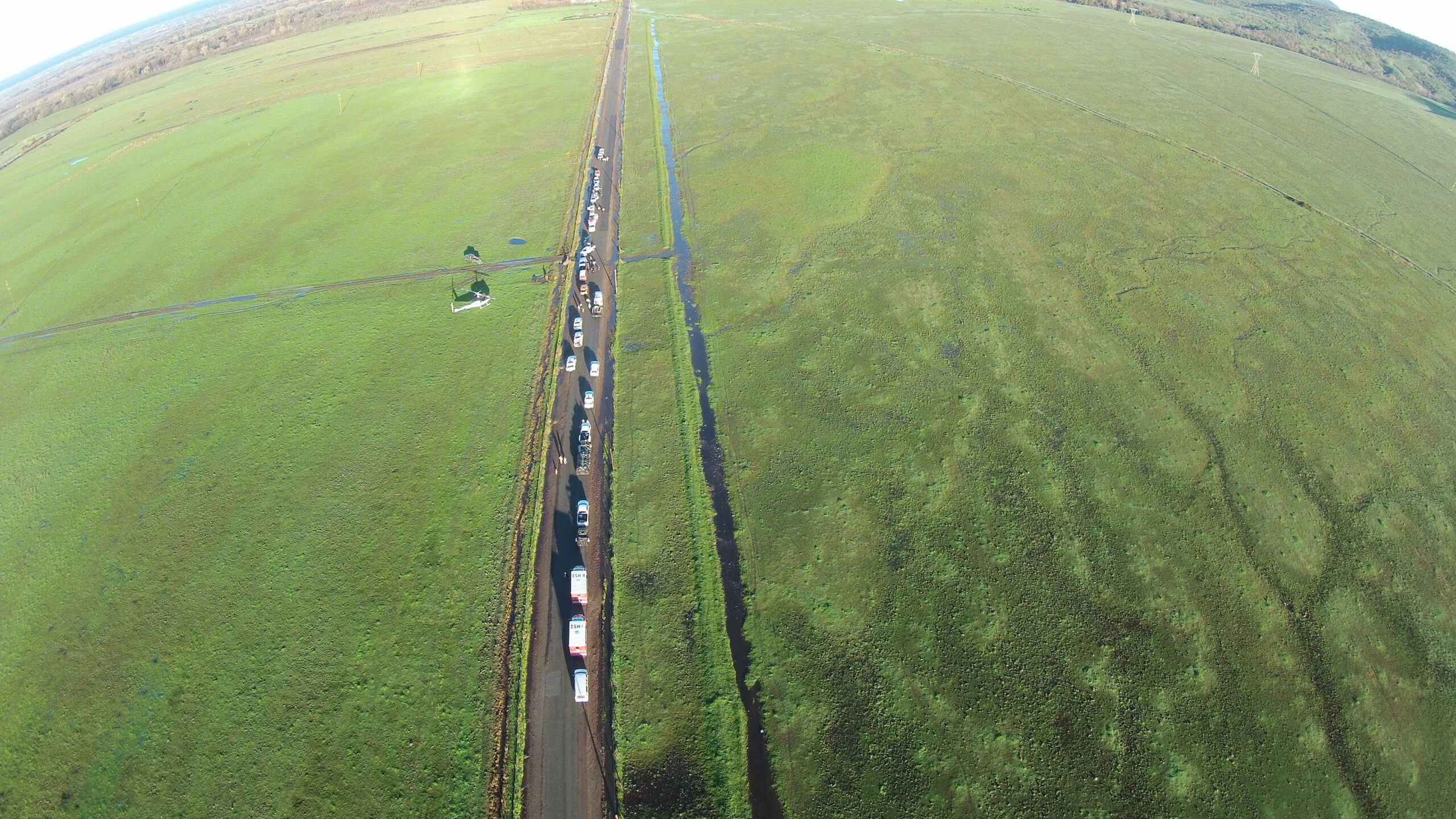
Aerial view of all the vehicles that brought the people that will be going to the job site. Soft mud has prohibited these vehicles from traveling any closer to the job site.
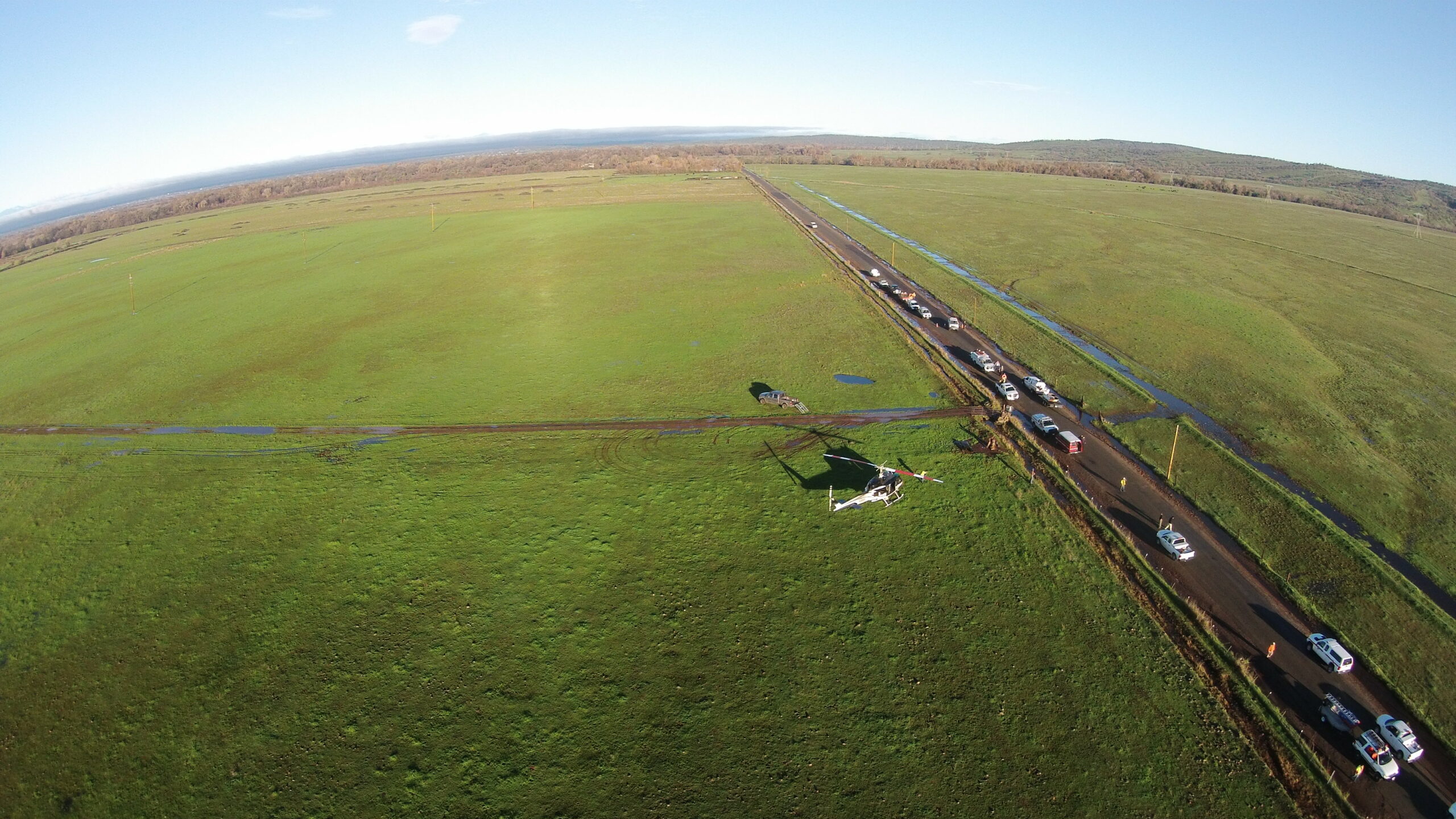
A helicopter is going to be used to transport the two 8ft tall 200ft long AquaDams to the work area.
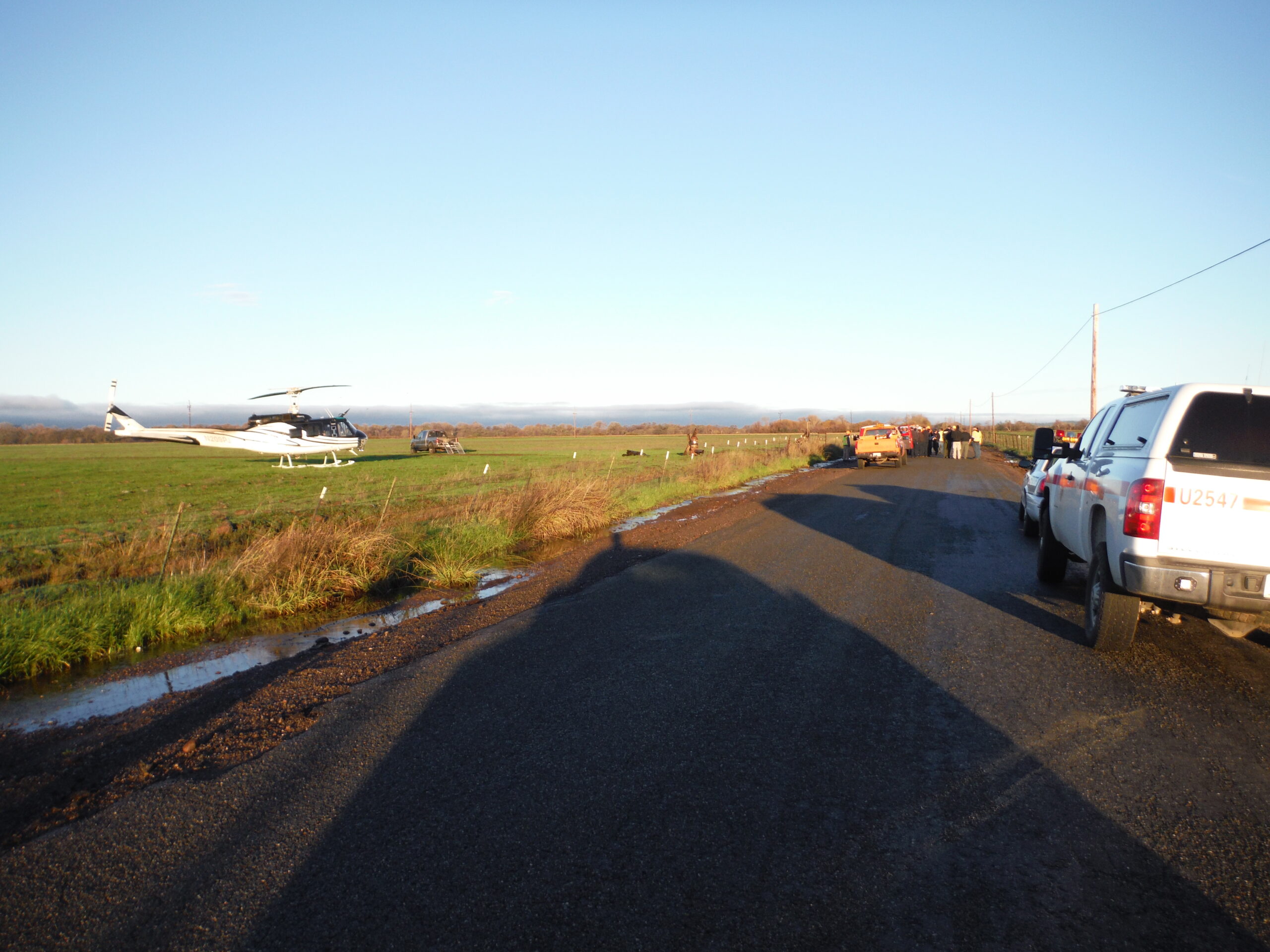
An 8ft tall 400ft long AquaDam® cofferdam system was needed for this project, but due to the lifting constraints of the helicopter the system was made into two units.
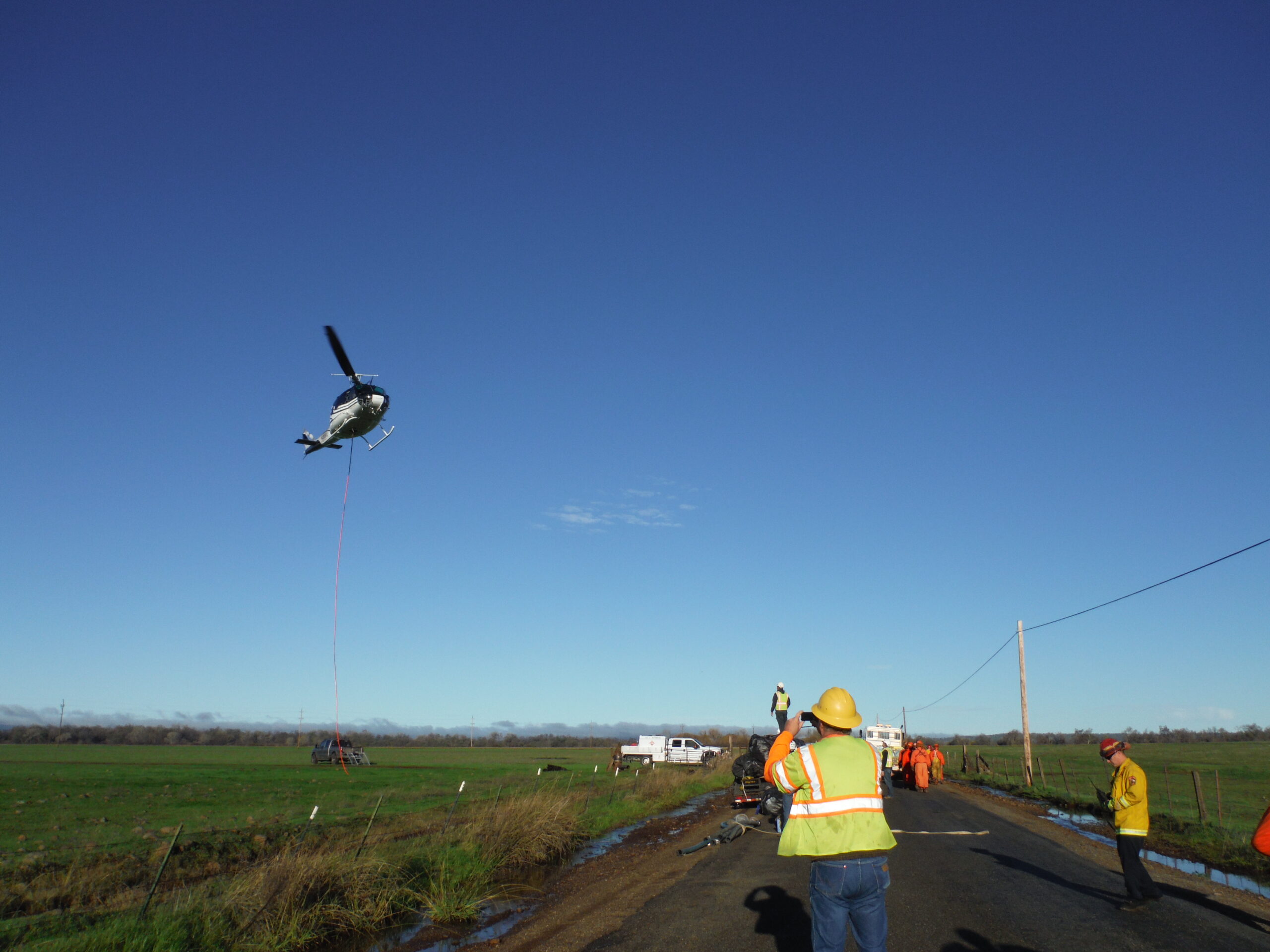
The helicopter is up and ready to start working.
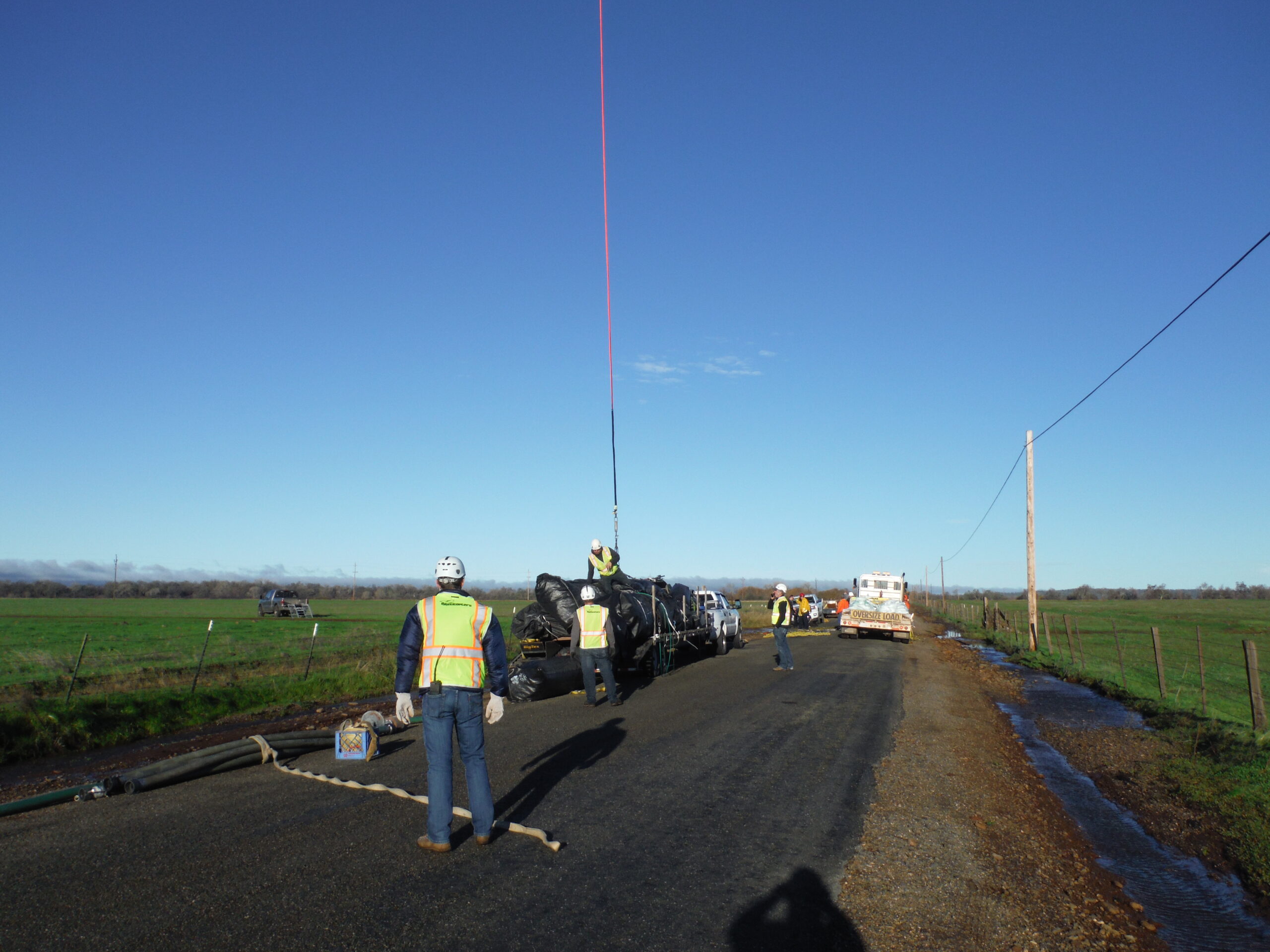
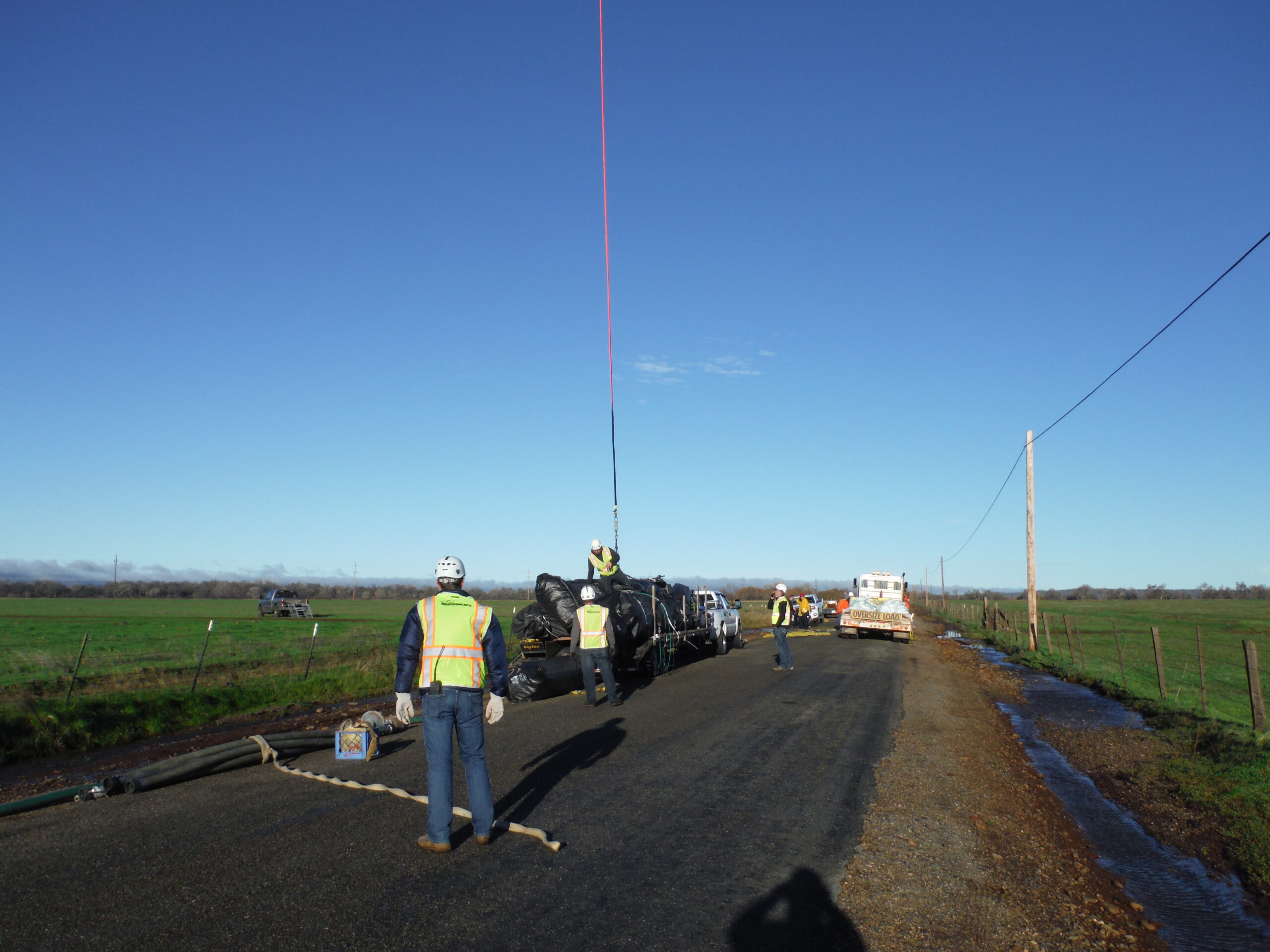
The first AquaDam® is hooked up and ready to be transported to the job site.
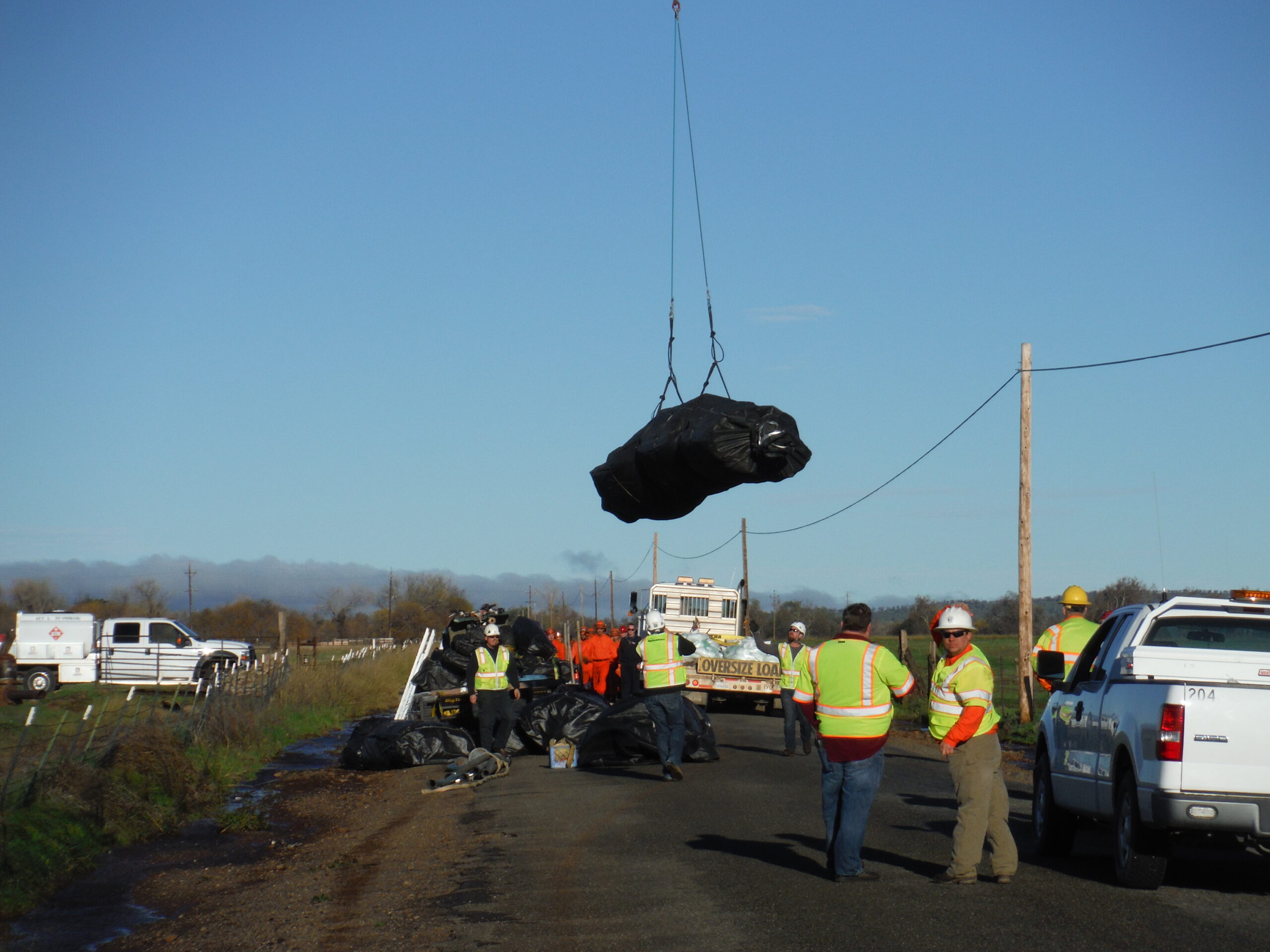
AquaDams typically come rolled up (similar to a carpet roll), with ropes or straps around them for lifting and moving.
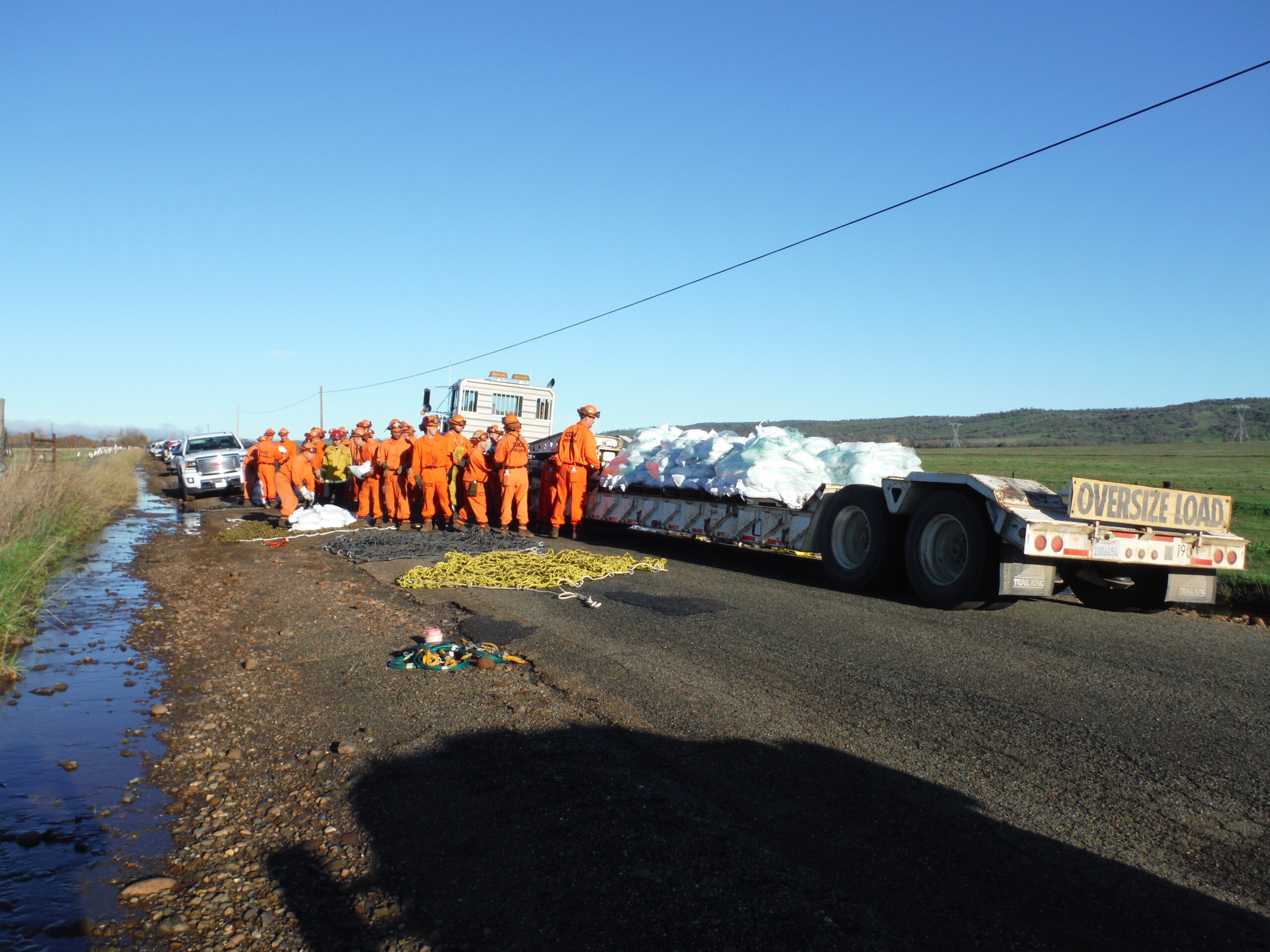
The sandbags were unloaded off the trailer into nets that the helicopter later carried to the job site.
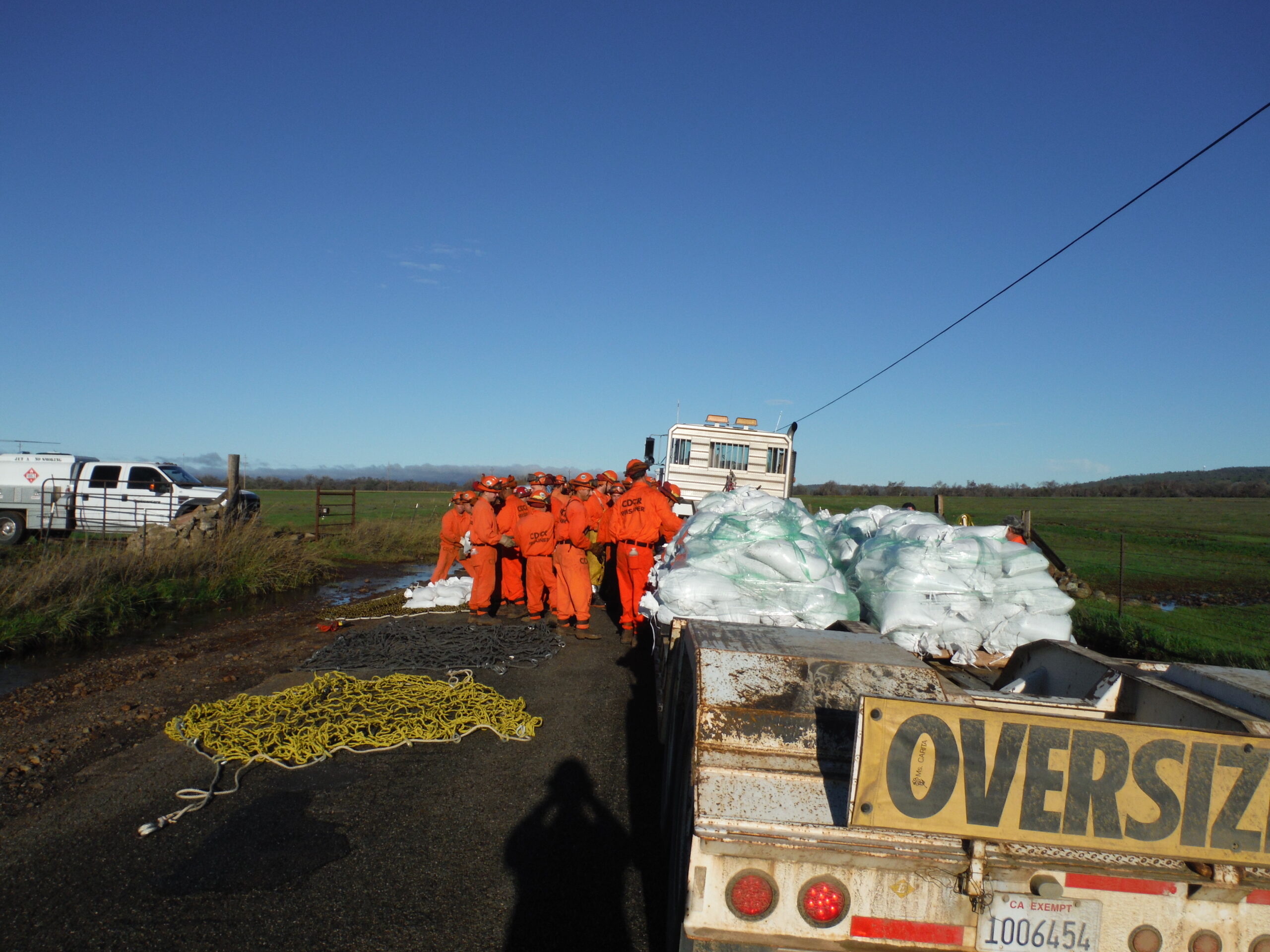
The sandbags were unloaded off the trailer into nets that the helicopter later carried to the job site.
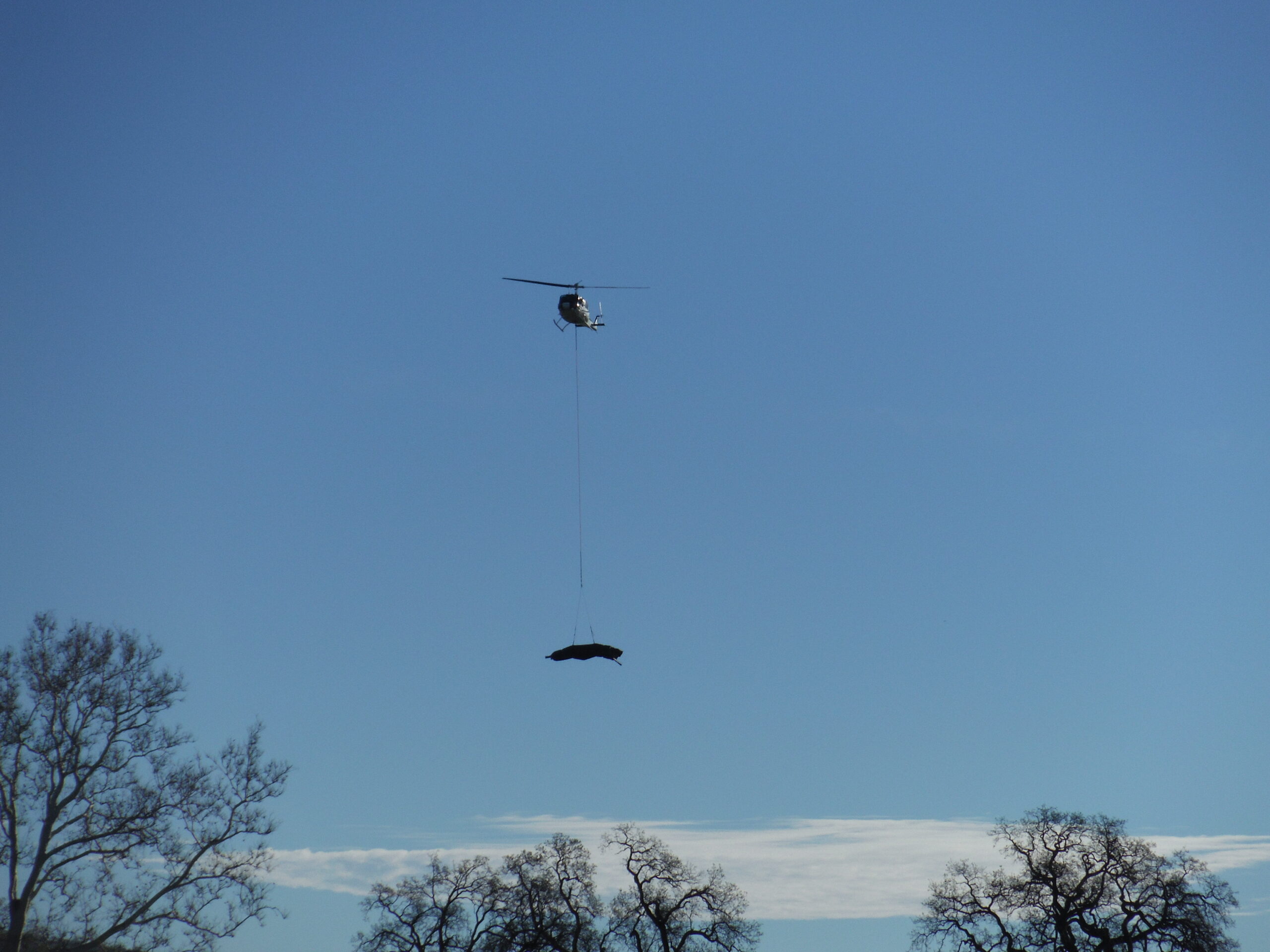
Heavy equipment could not be brought out to the job site due to soft mud, that’s why a helicopter was used.9.) Heavy equipment could not be used on the job site due to very soft mud. The helicopter is bringing in the first 8ft tall 200ft long AquaDam® to the job site where the levee has been breached.
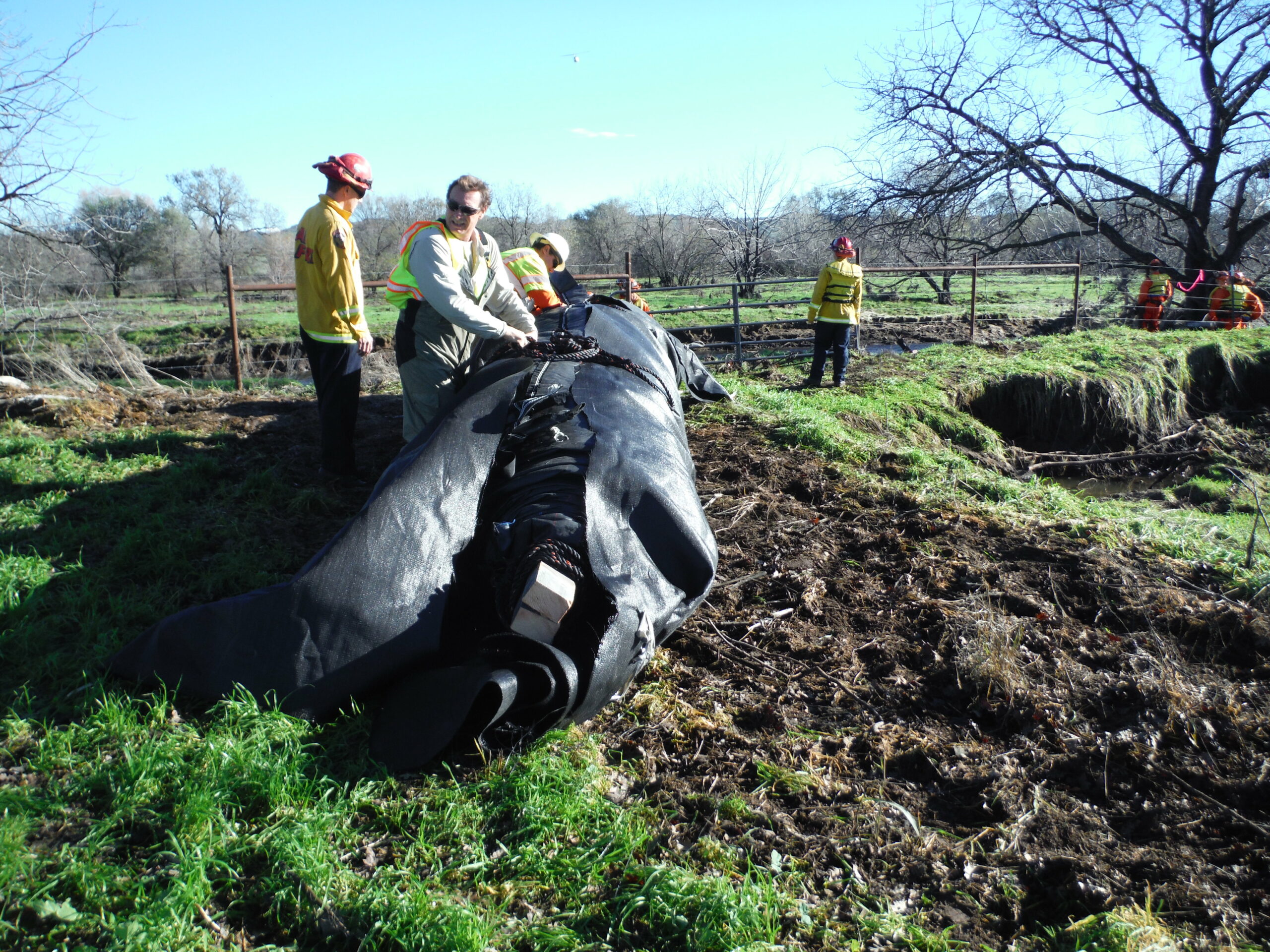
The first AquaDam® is in place, workers now have to remove the ropes and protective cover for the AquaDam.
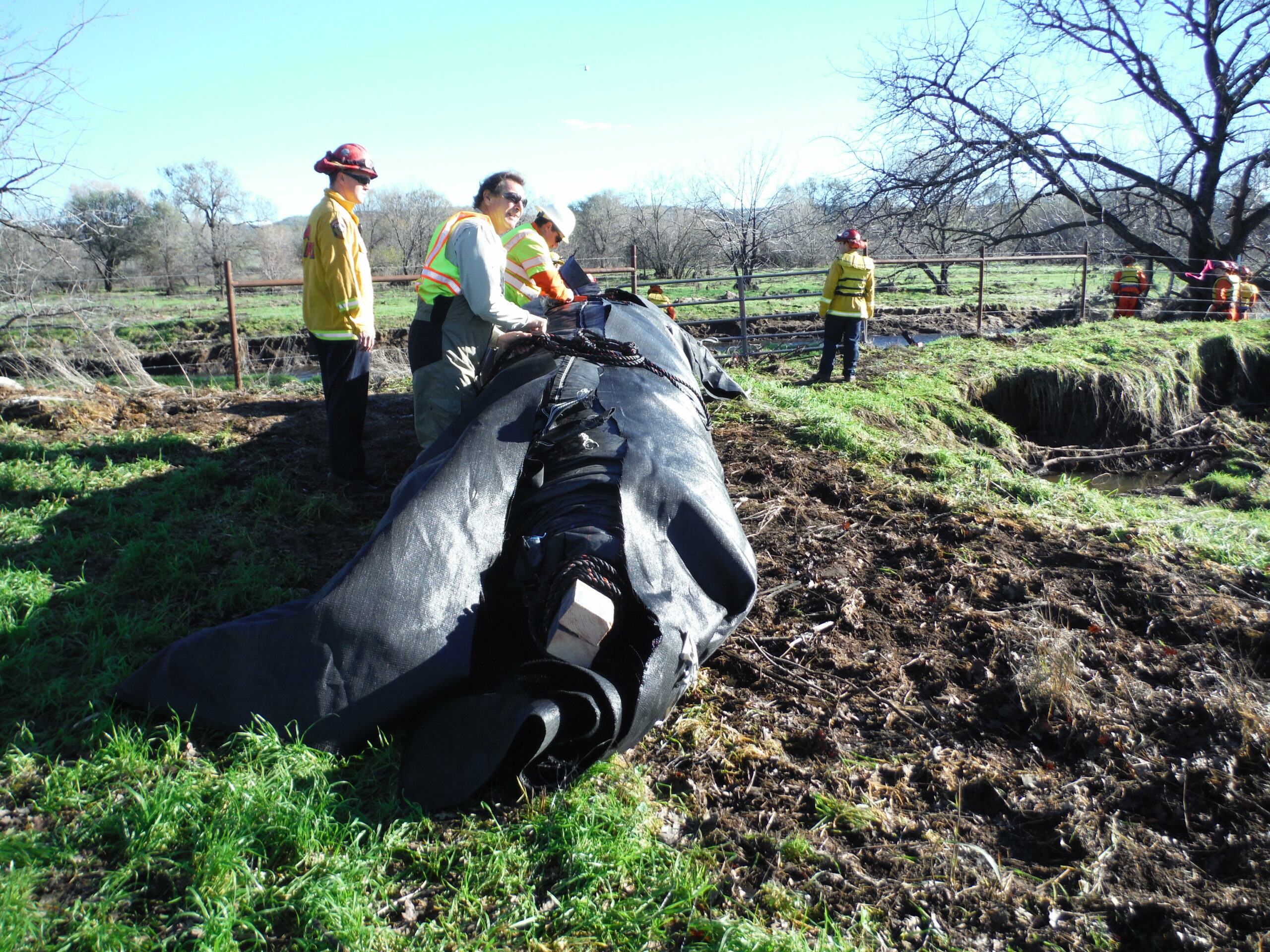
This first AquaDam® had a double closed end (DCE) add-on, due to the lack of a properly elevated starting bank. Additionally, this unit had a connection collar add-on which was used to connect the second AquaDam® to this one.
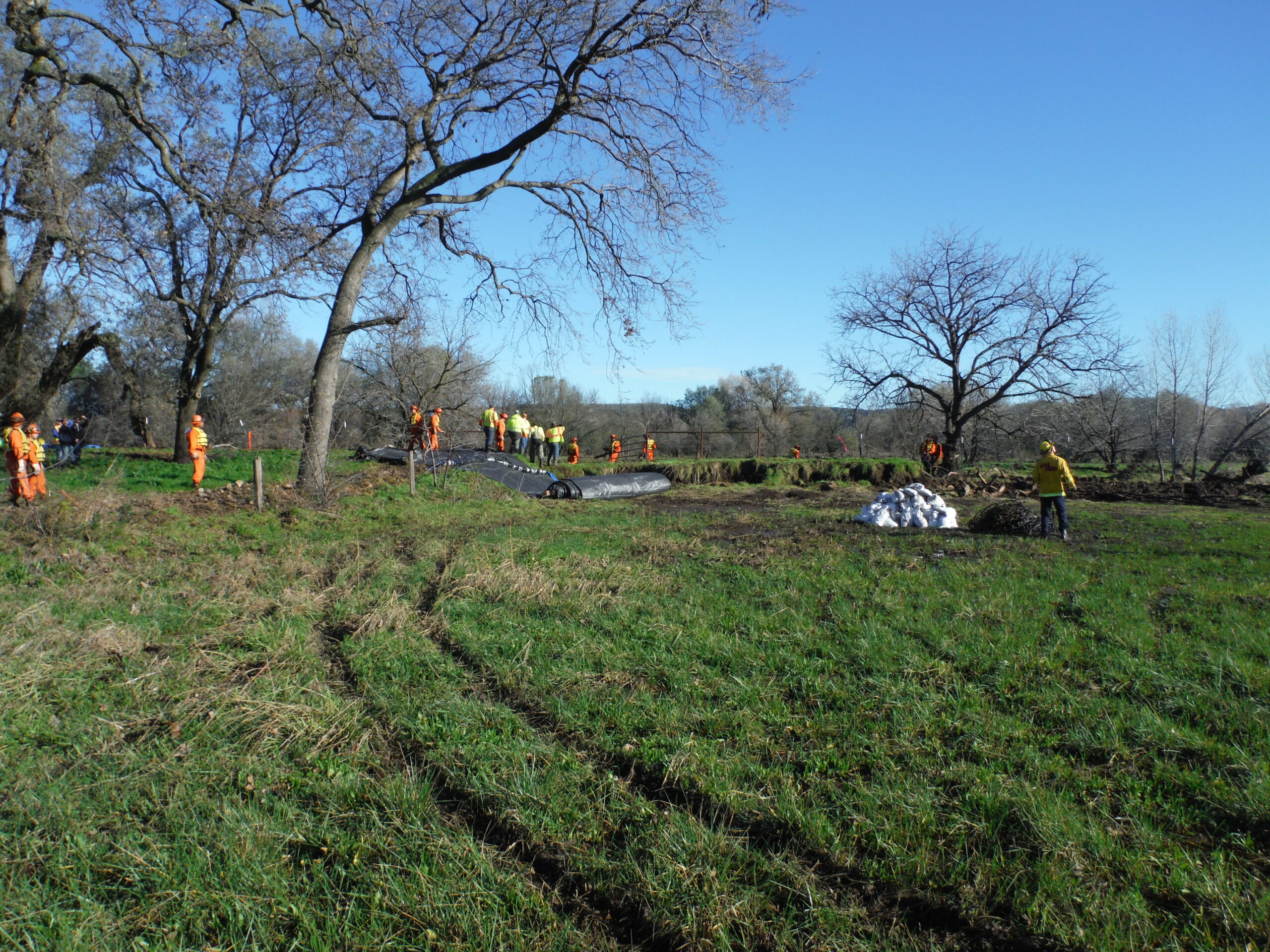
The AquaDam® has been pushed down the slope to expose the fill-tubes so that the workers can connect discharge hoses from pumps to them.
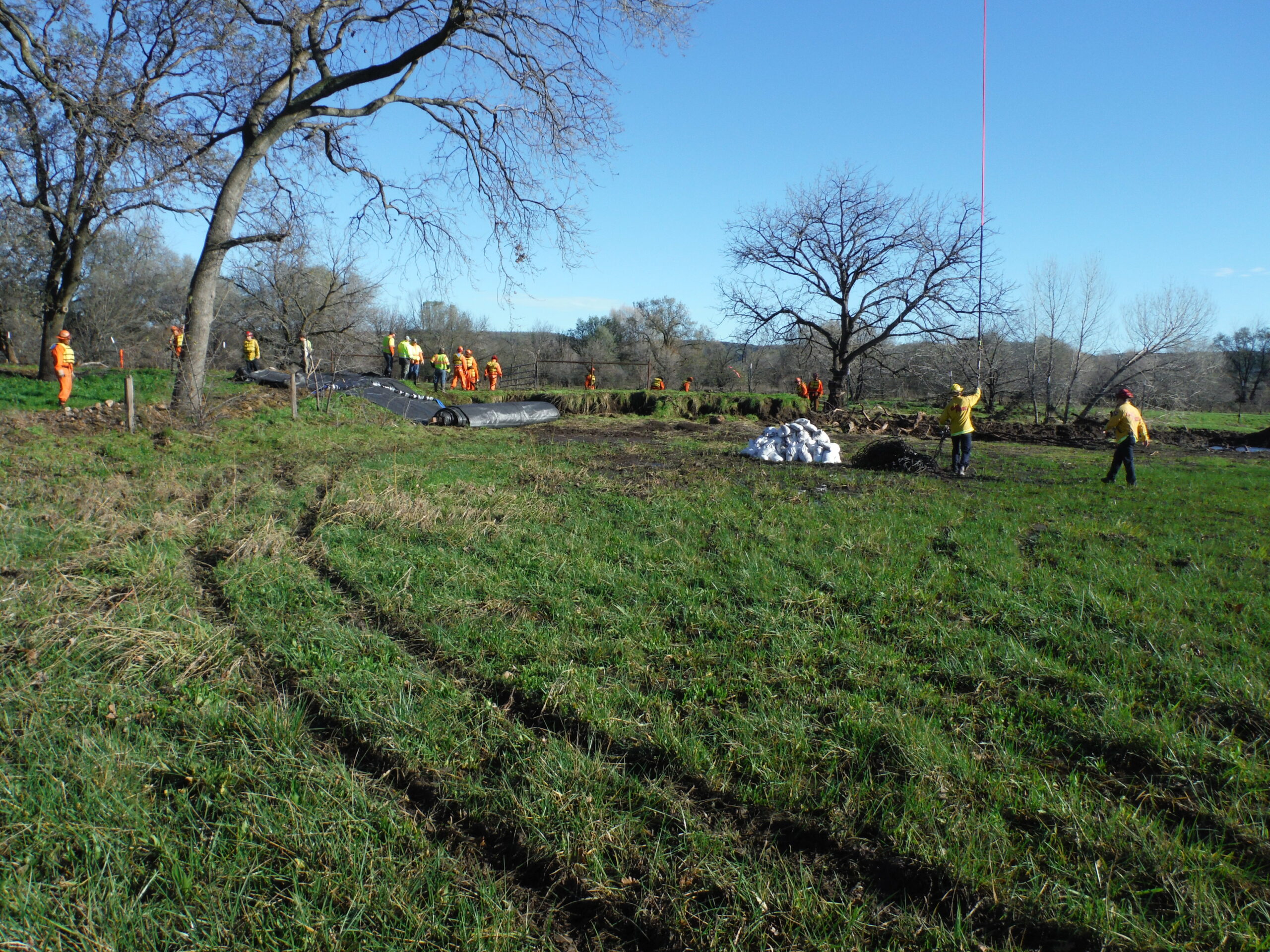
A load of sandbags has now also been dropped off by the helicopter.
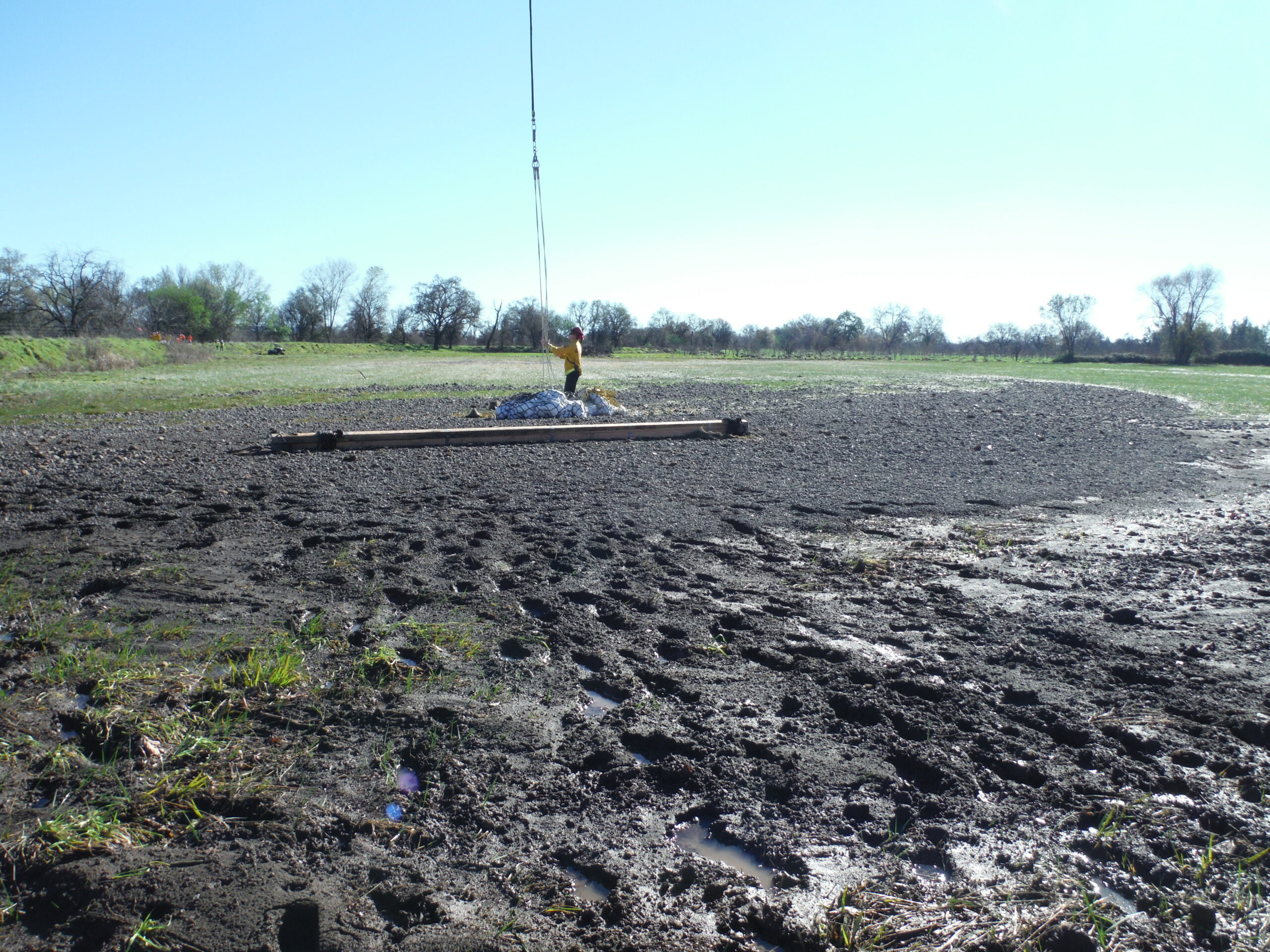
Another load of sandbags has been delivered to the job site.
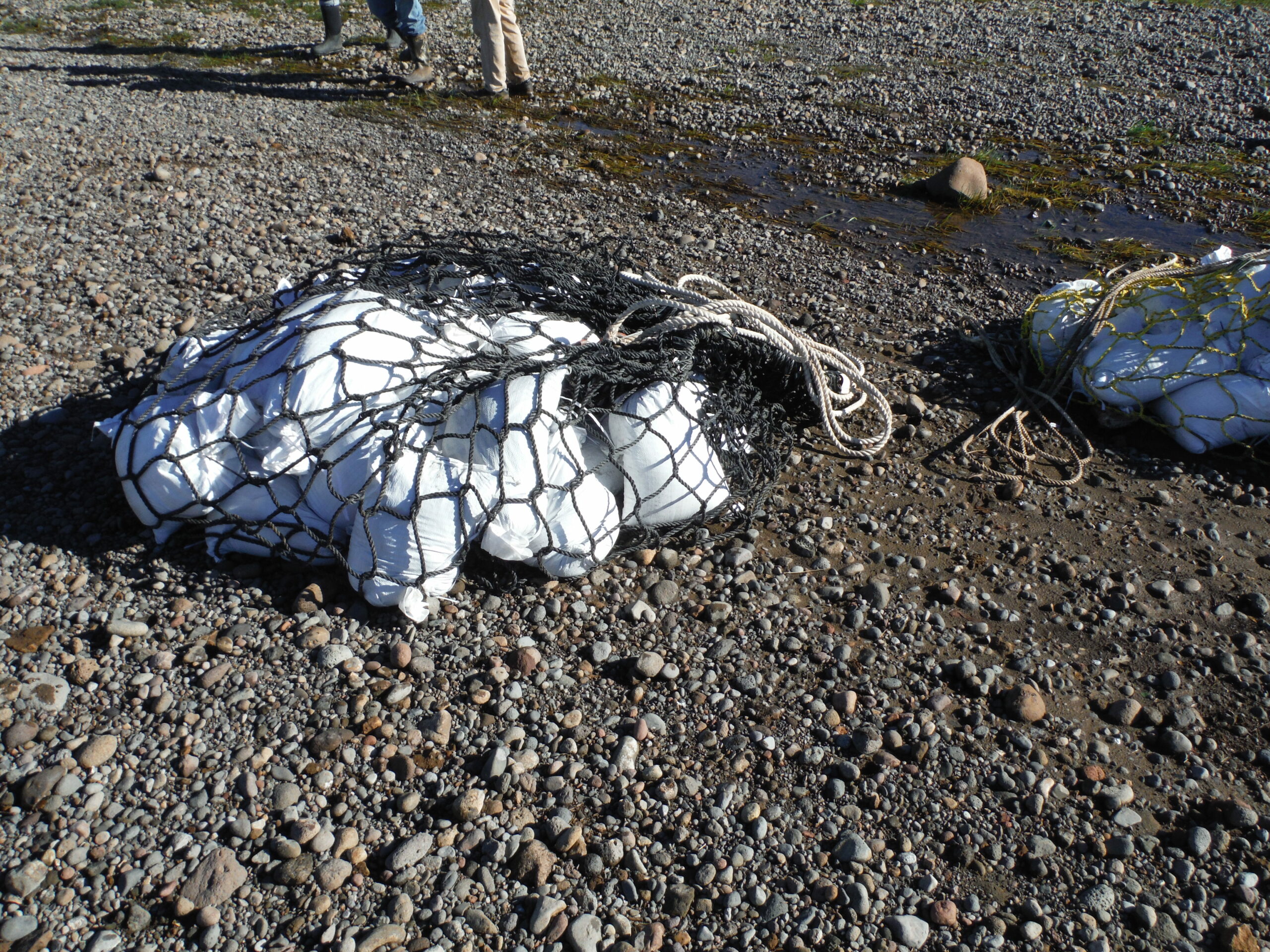
Here is a close up view of one of the nets used to transport the sandbags.
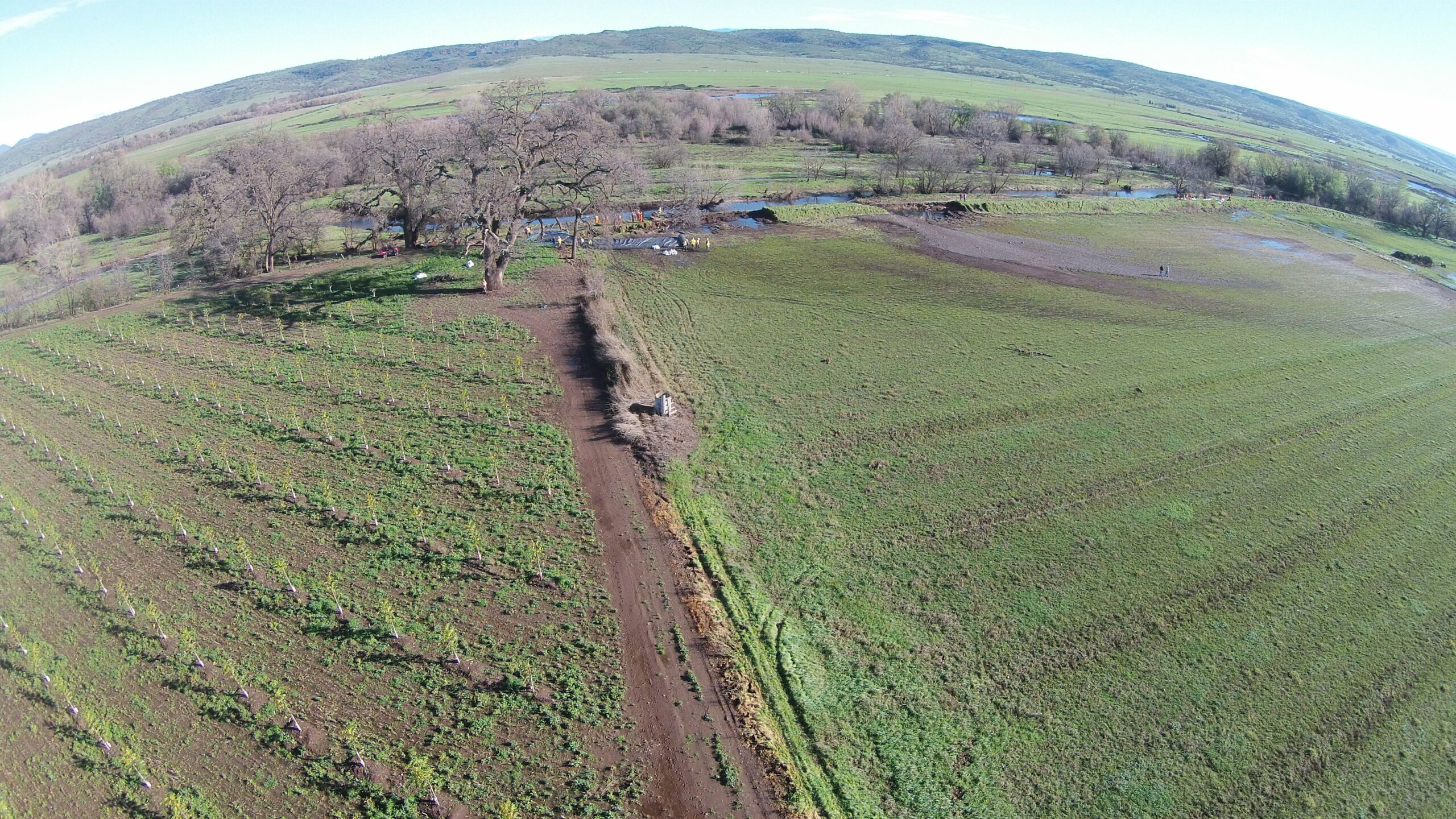
Overview of work area, while the first AquaDam® is being unrolled into place.
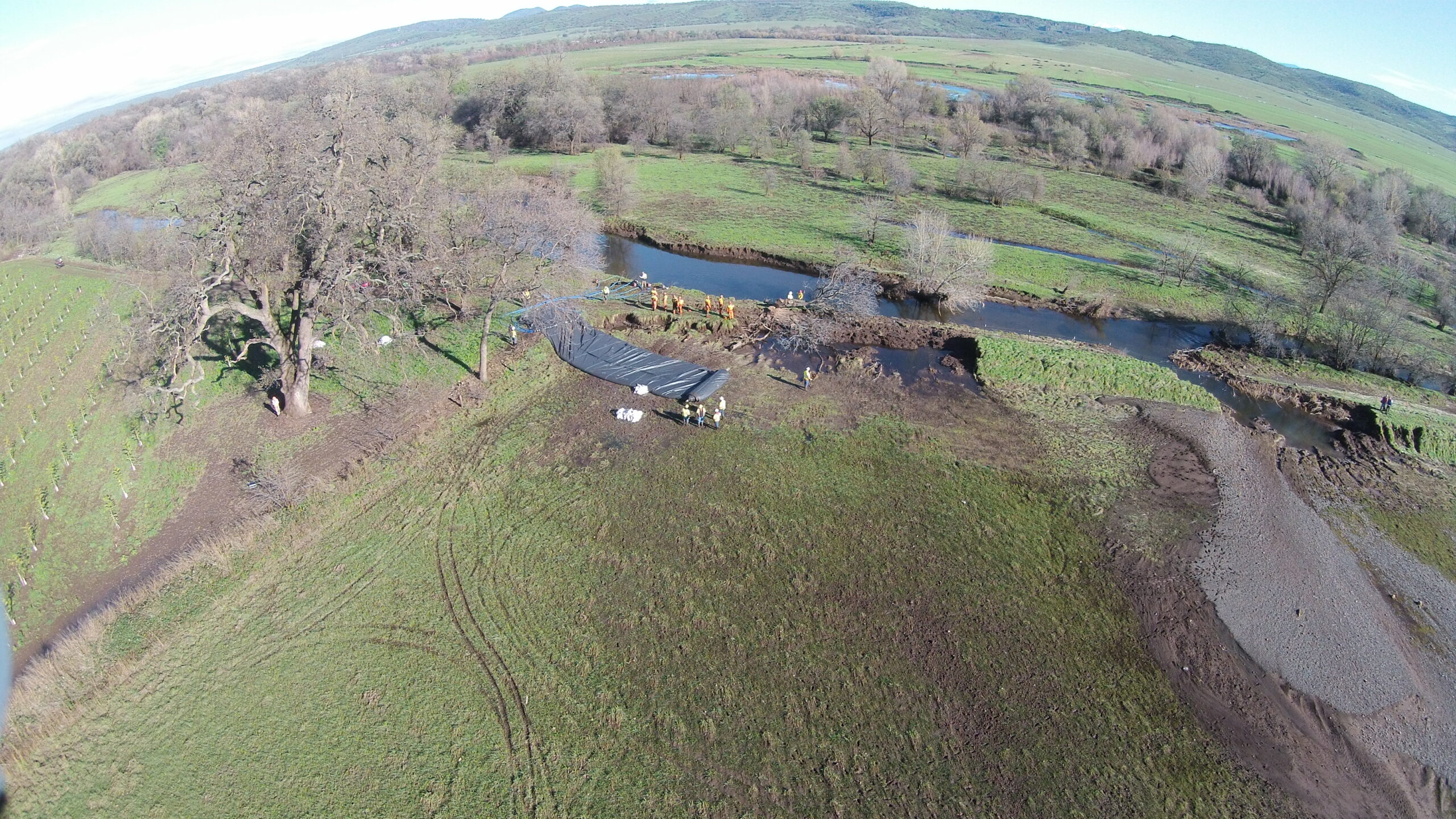
Another view of the workers unrolling the first AquaDam.
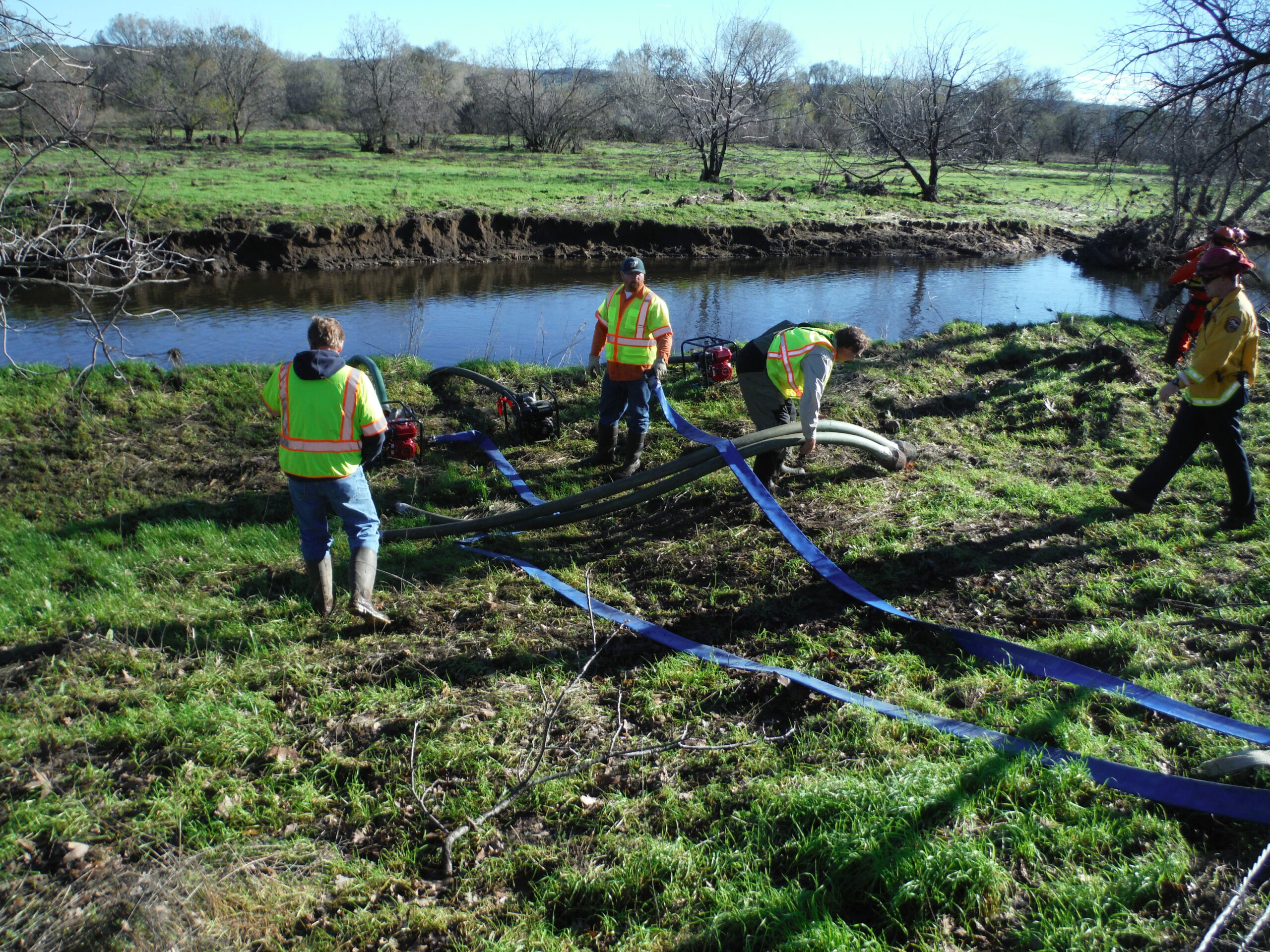
Water pumps with suction and discharge hoses are being placed at a nearby a water source. These pumps, will be used to fill the AquaDams.
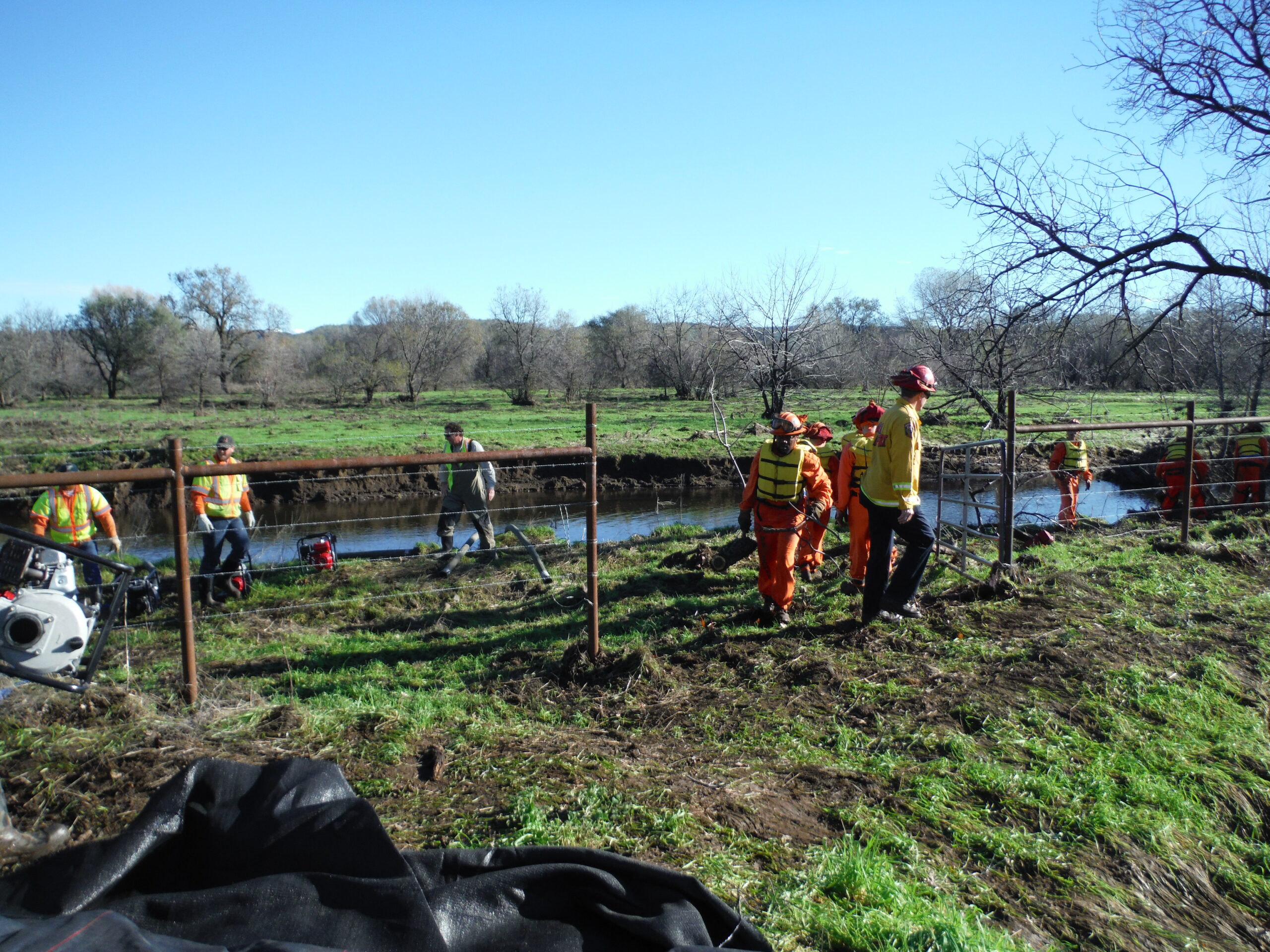
Workers will set up six water pumps total.
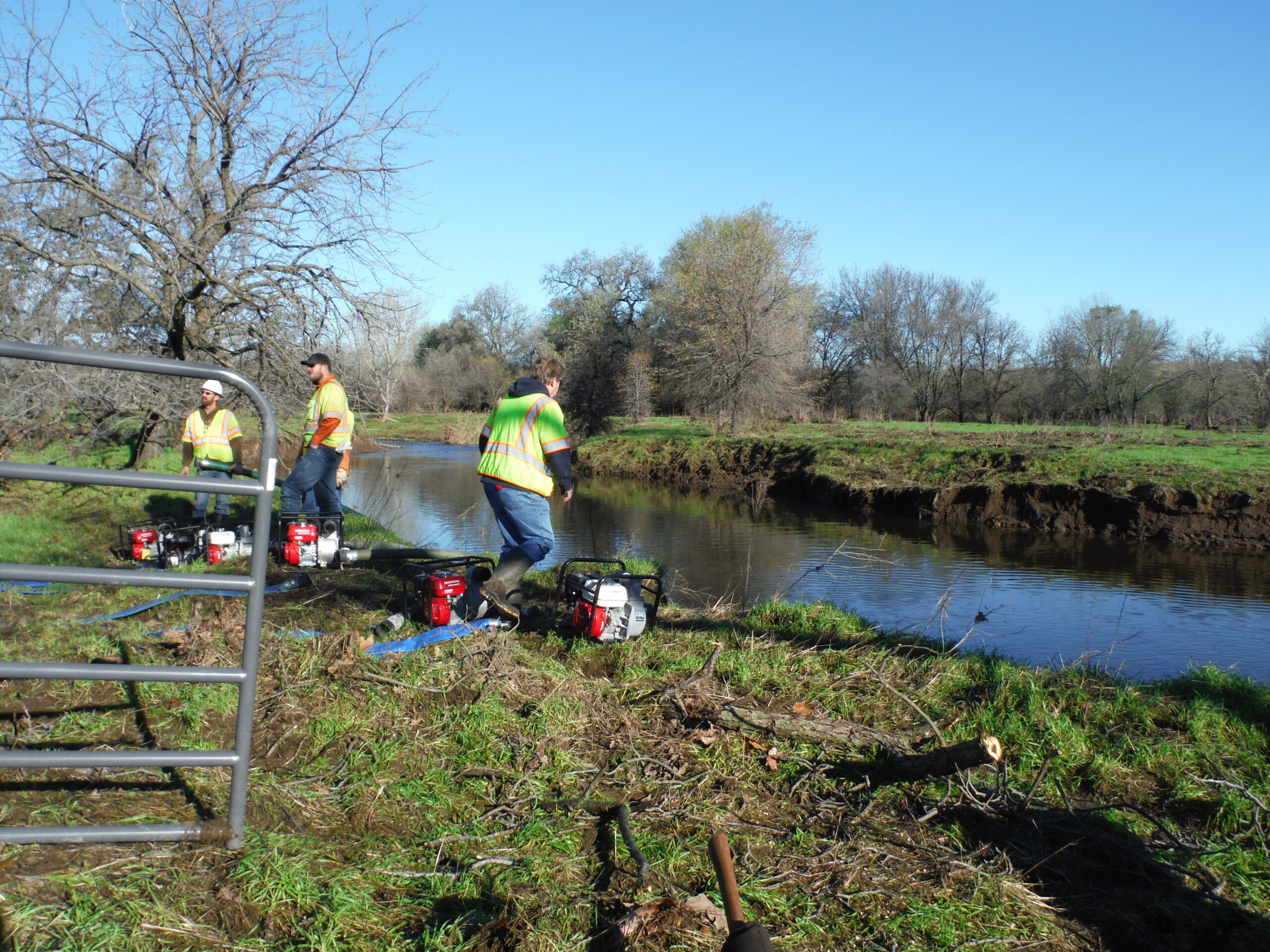
Three water pumps will be connected to discharge hoses that will connect to one fill-tube.
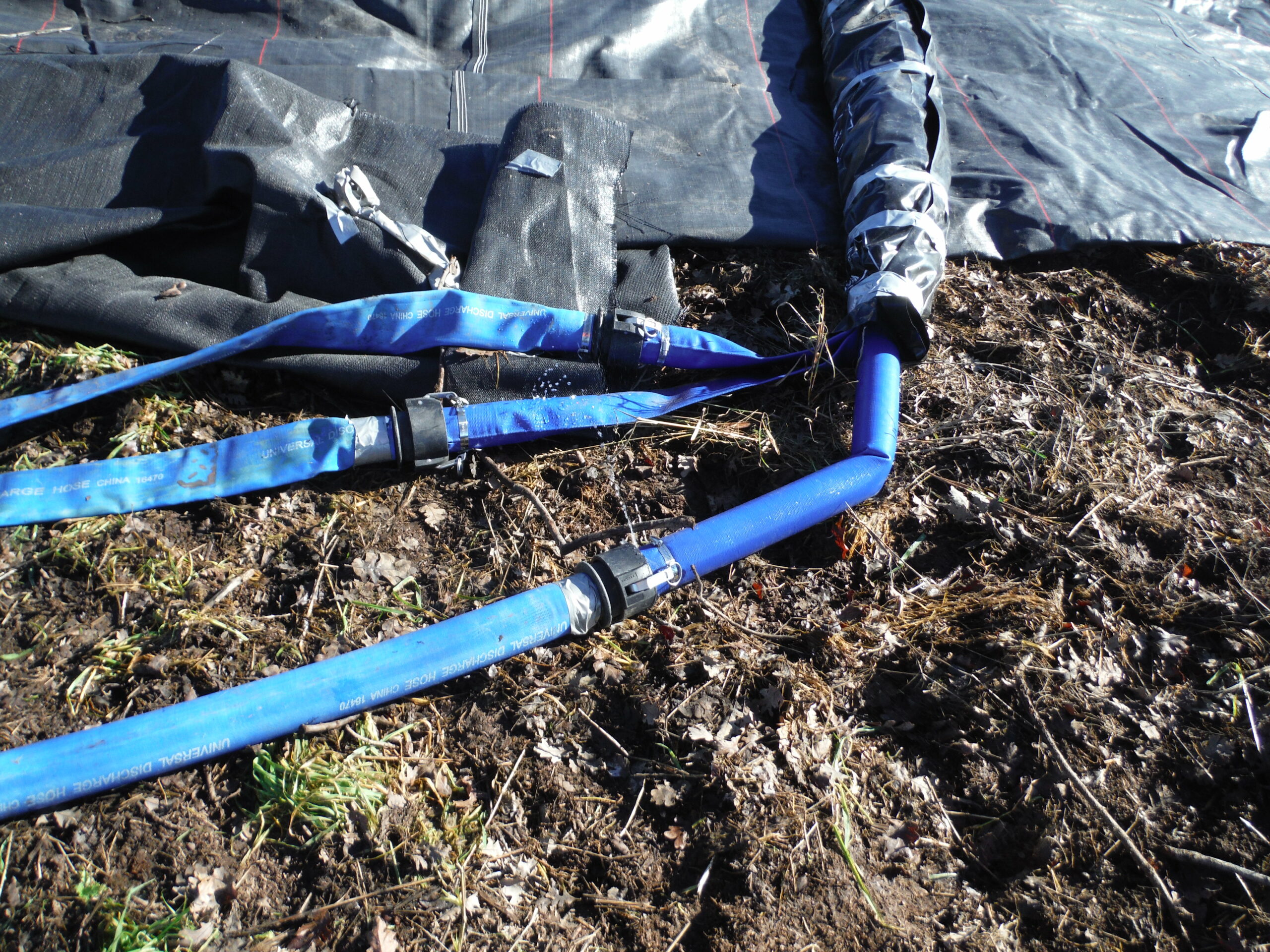
The discharge hoses have been hooked to the AquaDam® and filling is ready to begin.
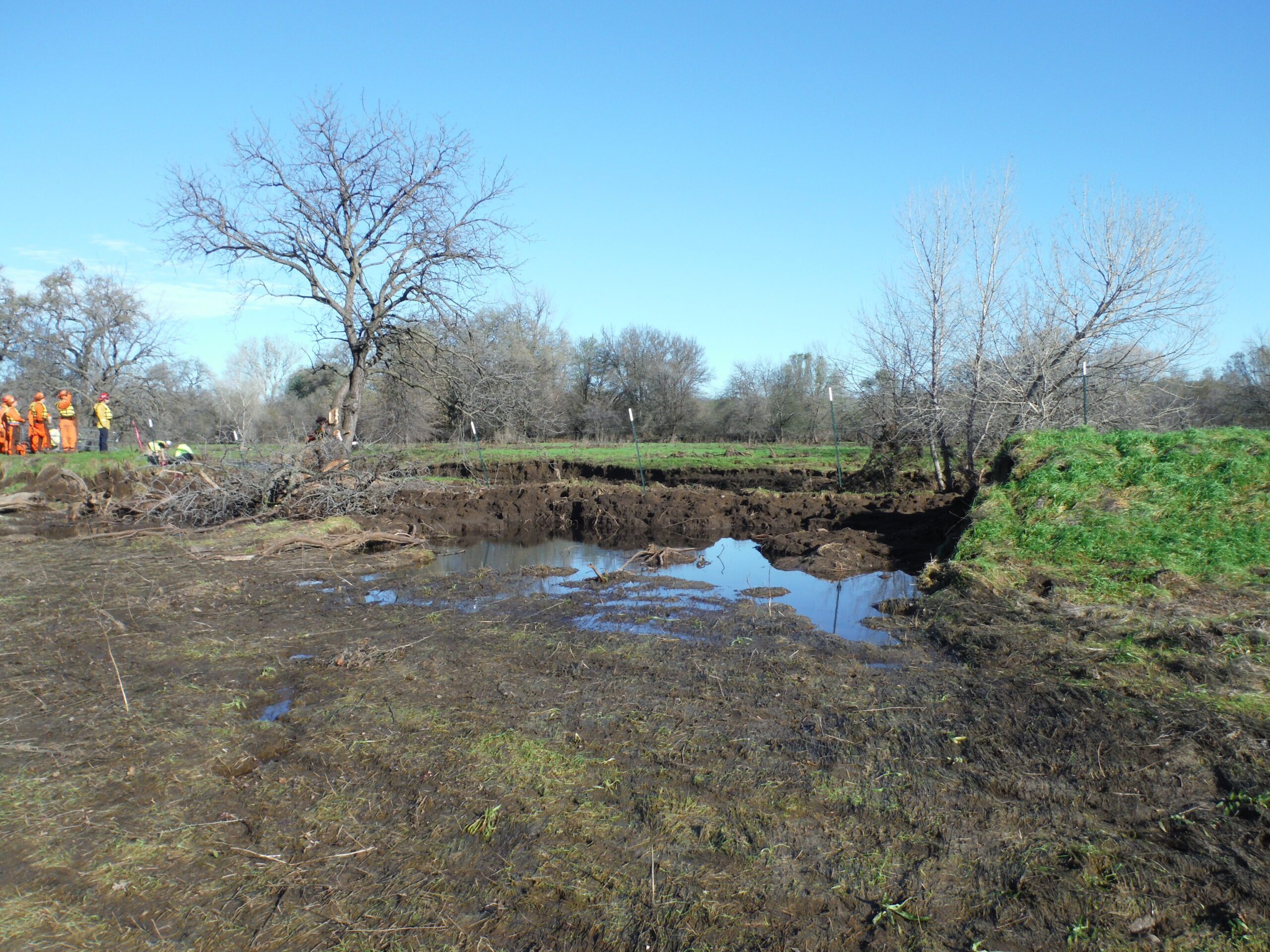
Here we can see a close up of the breached part of the levee, where water washed through it.
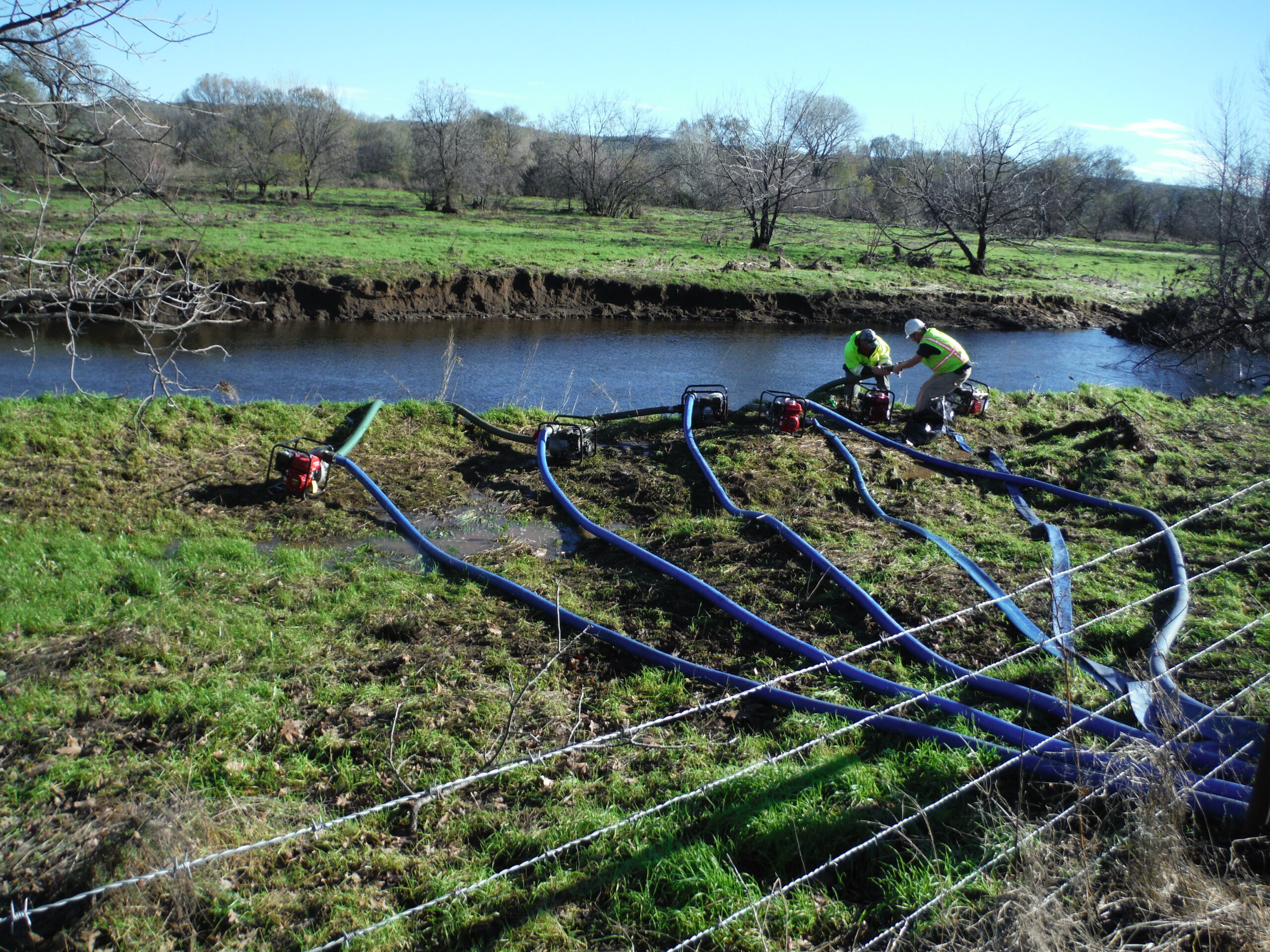
Looks like four out of the six water pumps are up and running.
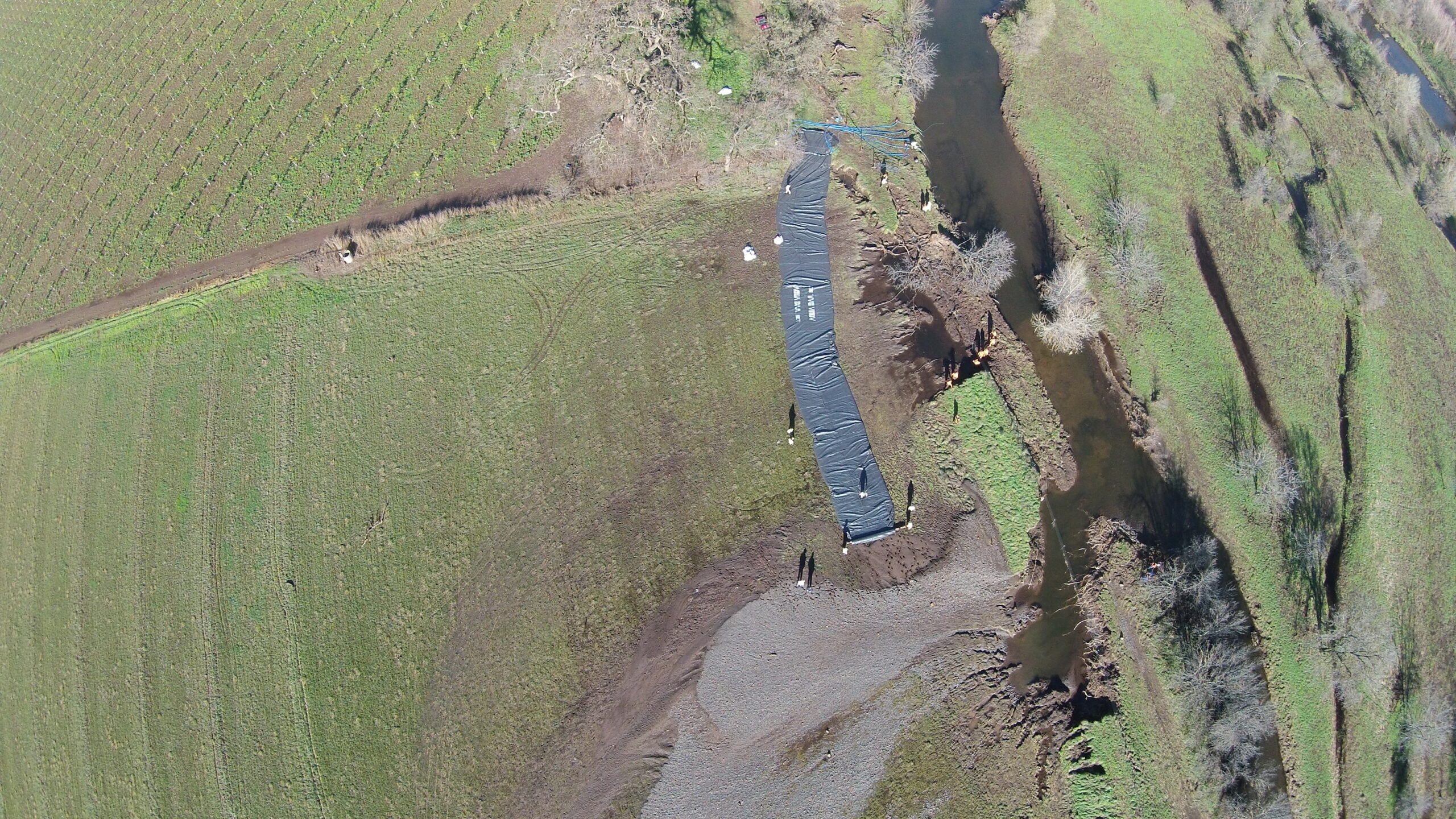
An aerial overview of the first AquaDam® being filled and unrolled.
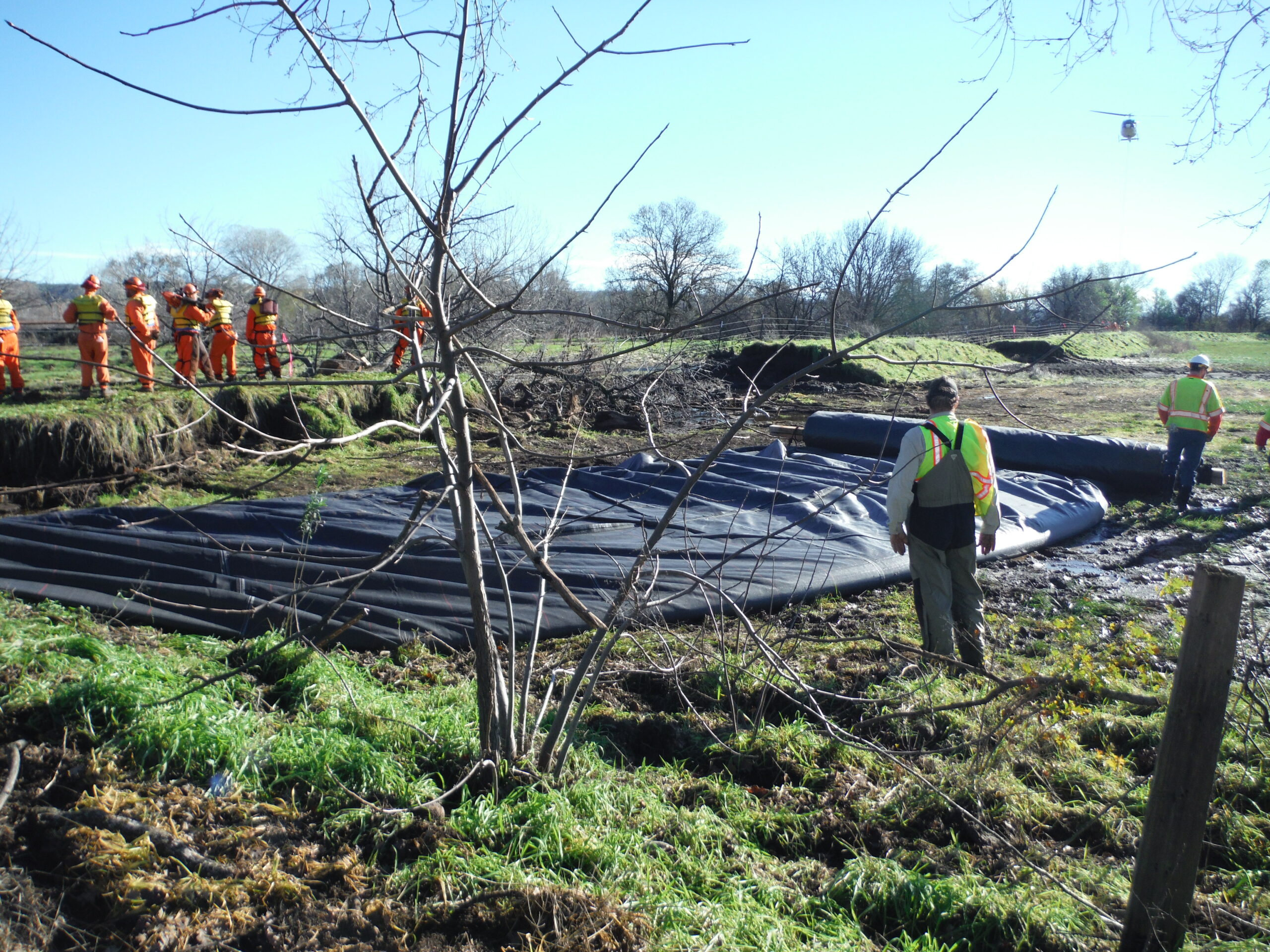
The first AquaDam® after it started to fill.
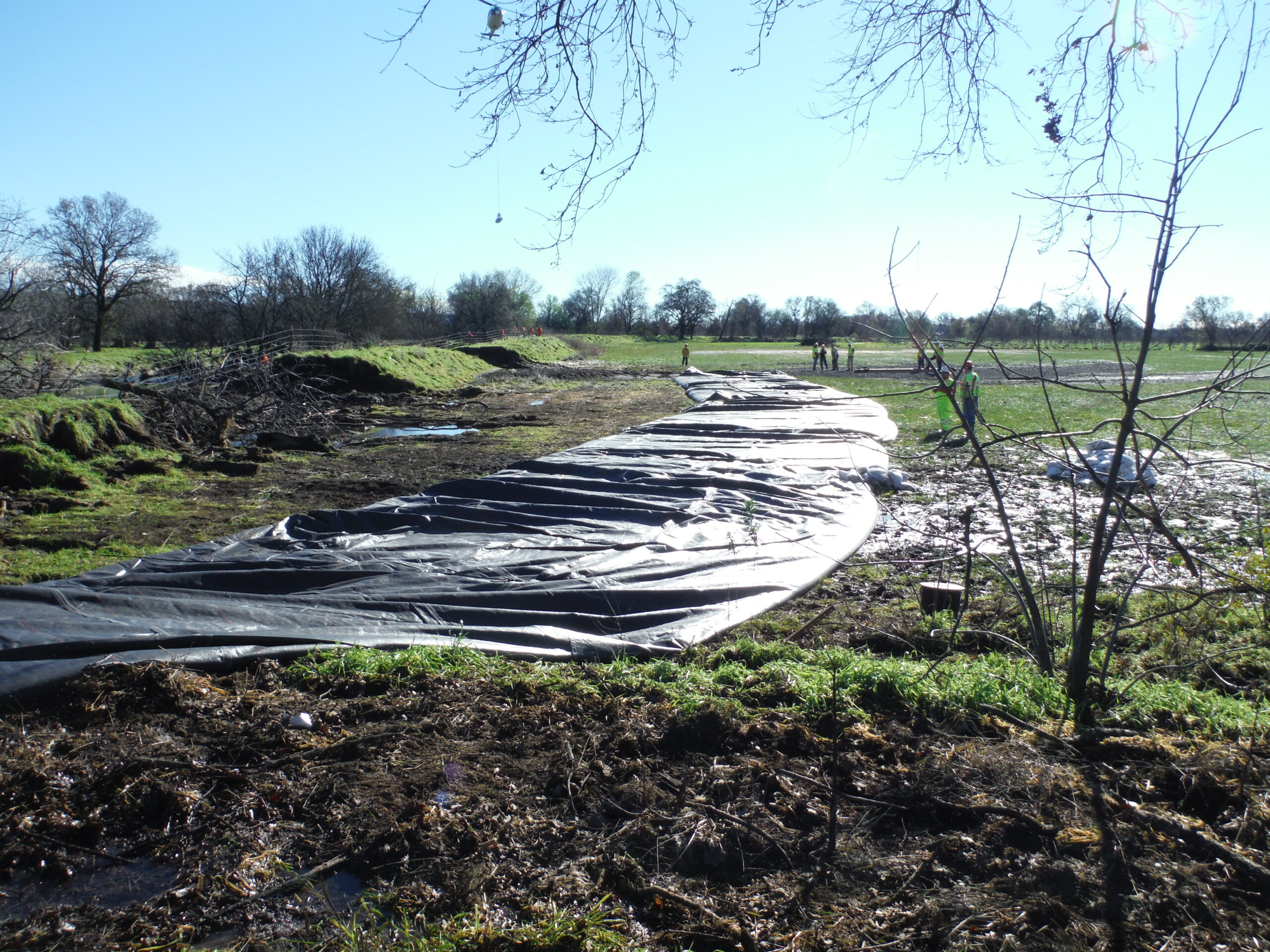
The first AquaDam® has fully unrolled and now it is going to take a couple hours to fill.
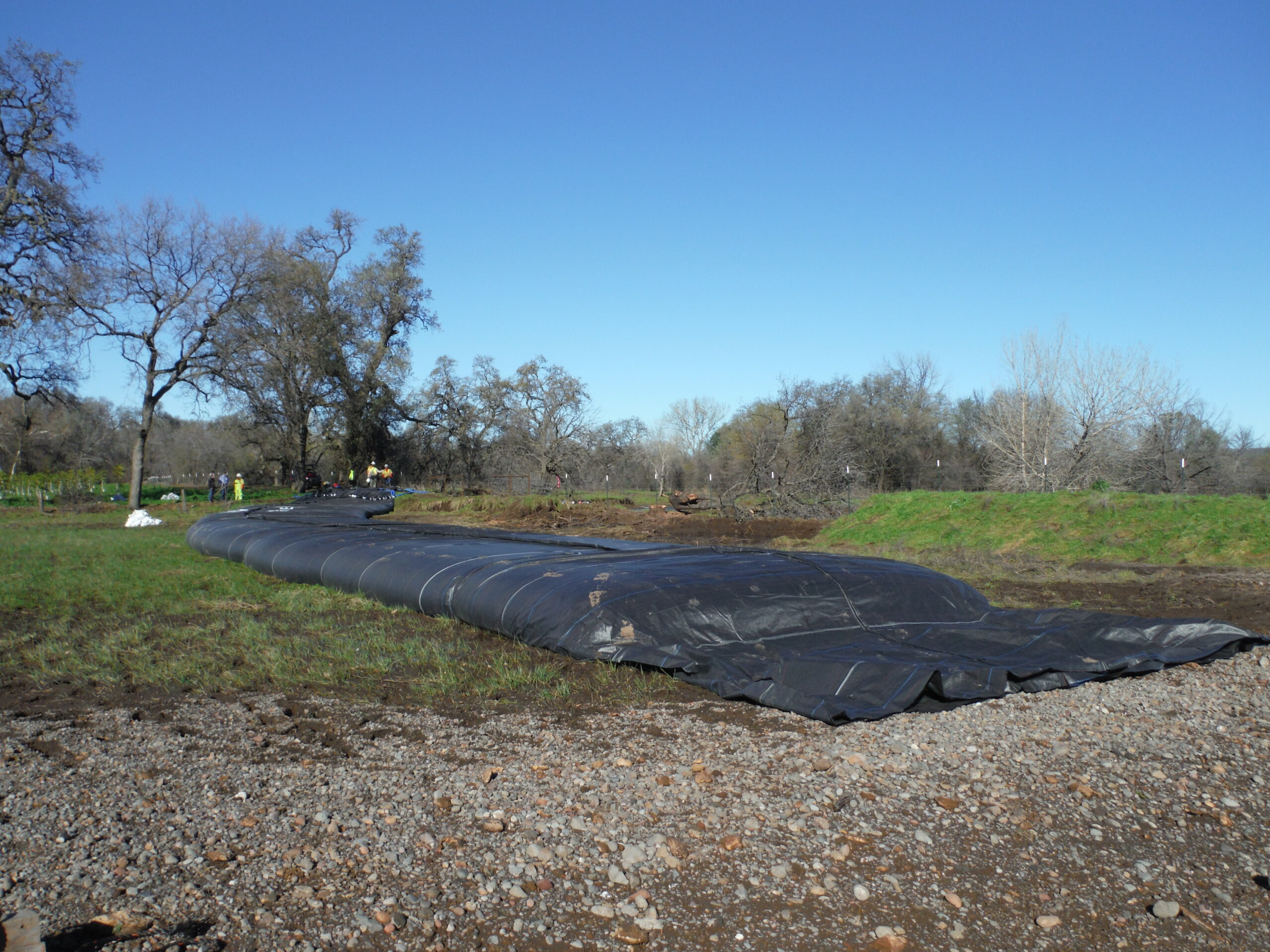
In this photo, the AquaDam® is about 2-3ft high. This AquaDam® has about 5ft more in height to gain, since it has a maximum height of 8ft when fully filled. The loose material on the end is the connection collar add-on, used to connect two AquaDams together.
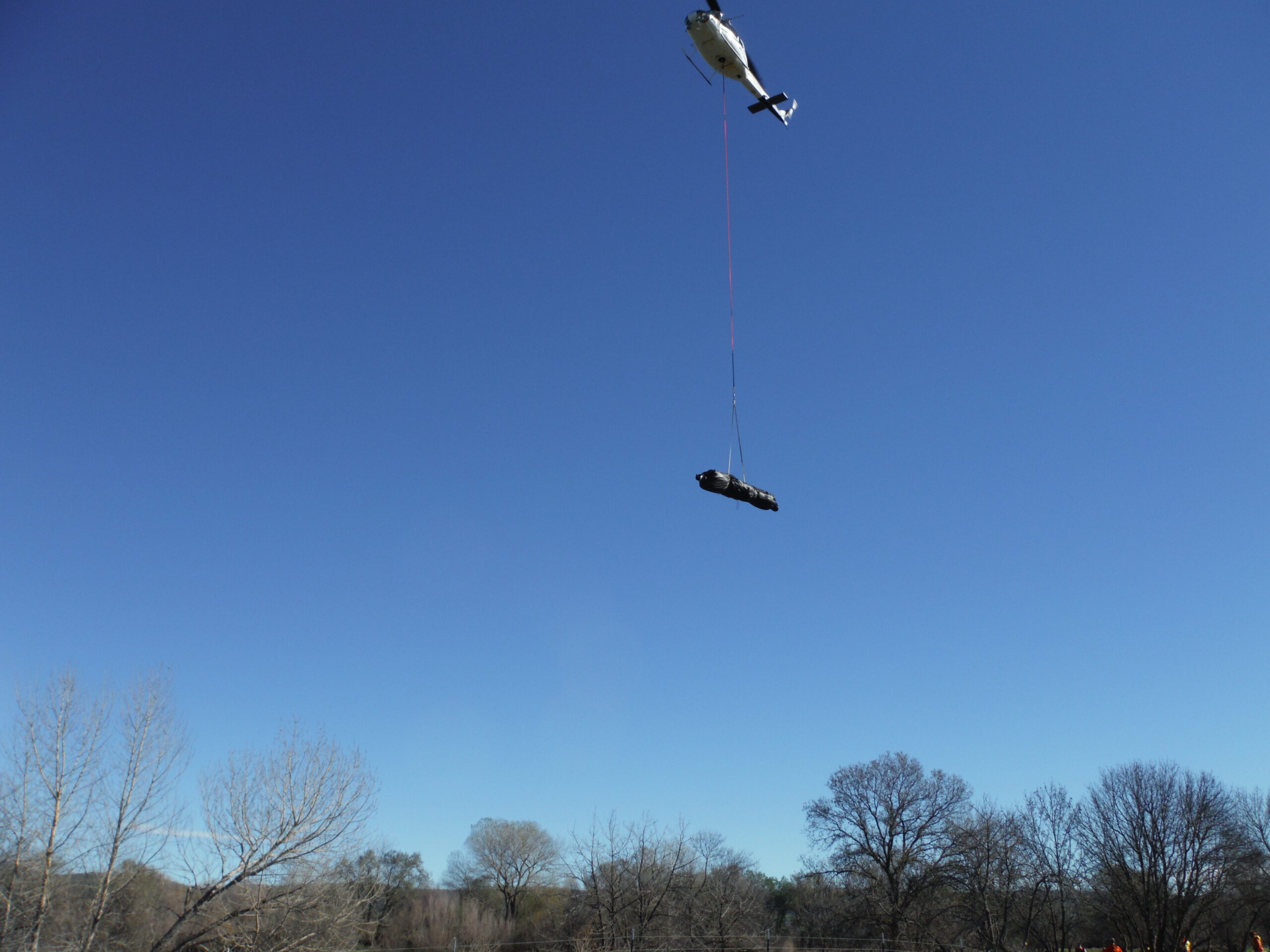
The second AquaDam® is being flown in and will be set in position for unrolling.
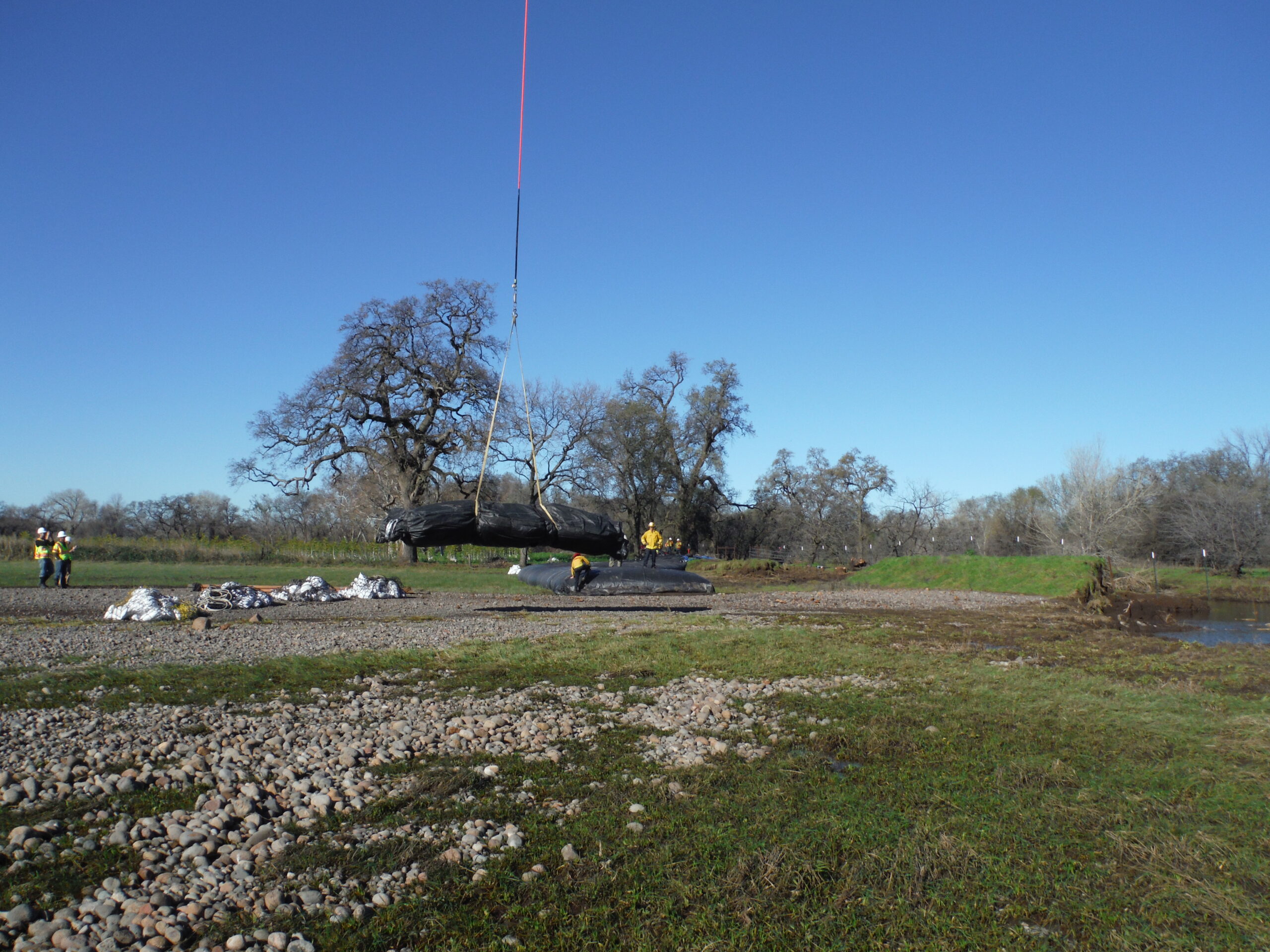
Workers are getting into place to guide the delivery of the second AquaDam.
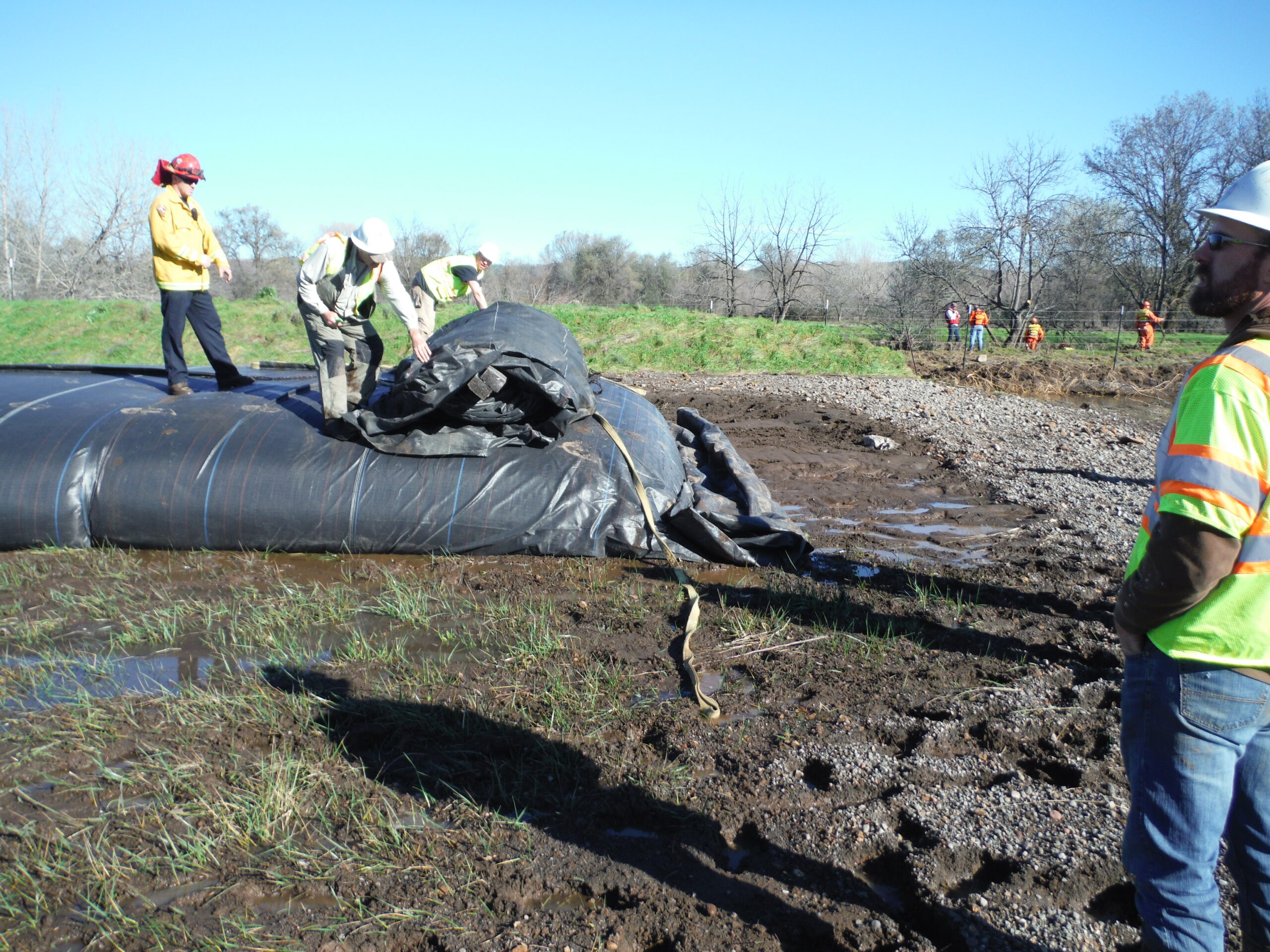
The second AquaDam® was placed on top of the first AquaDam, so that the workers can unroll it easier and expose the fill-tubes.
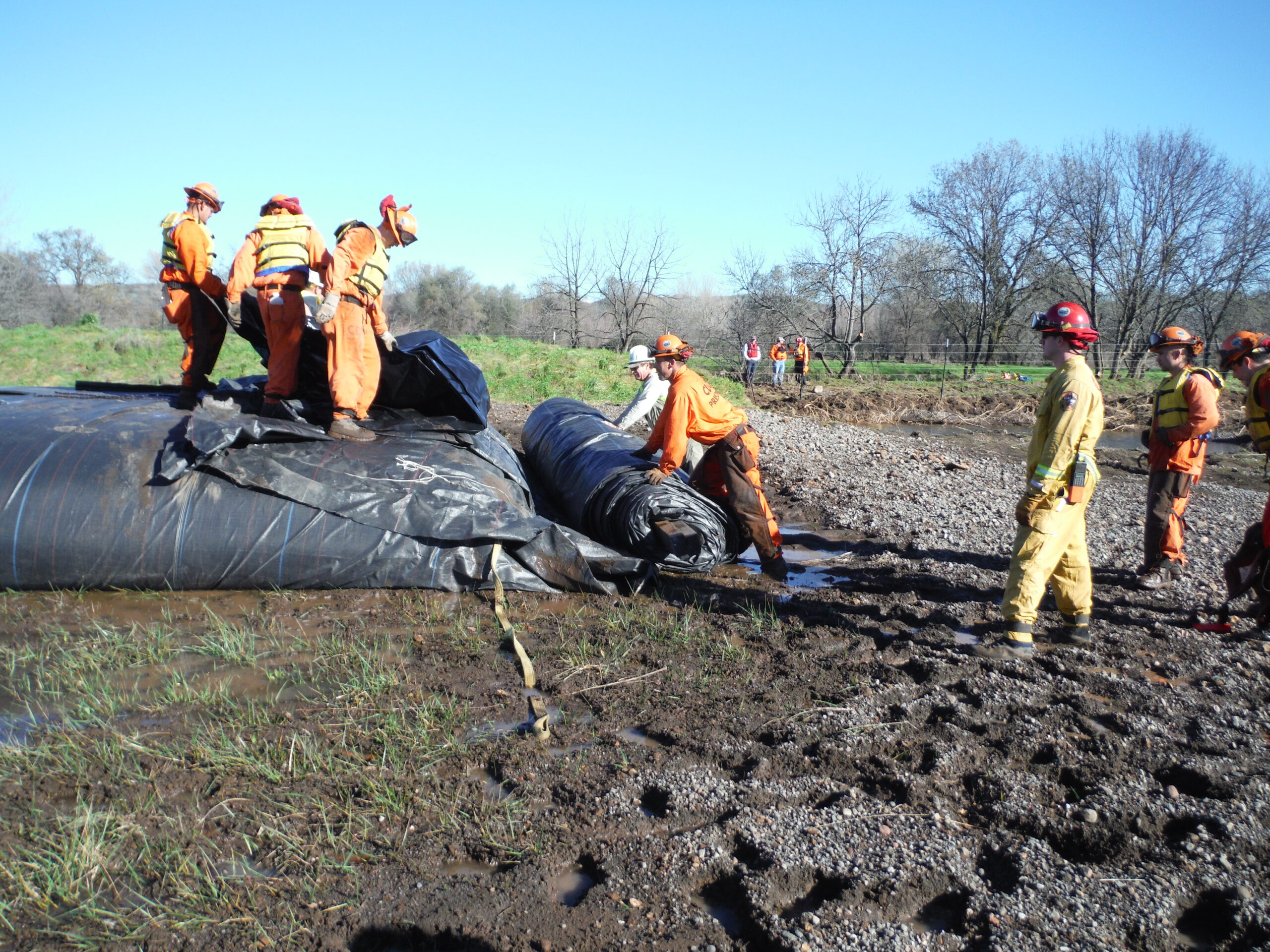
More length will need to be unrolled, so that the connection can be made properly.
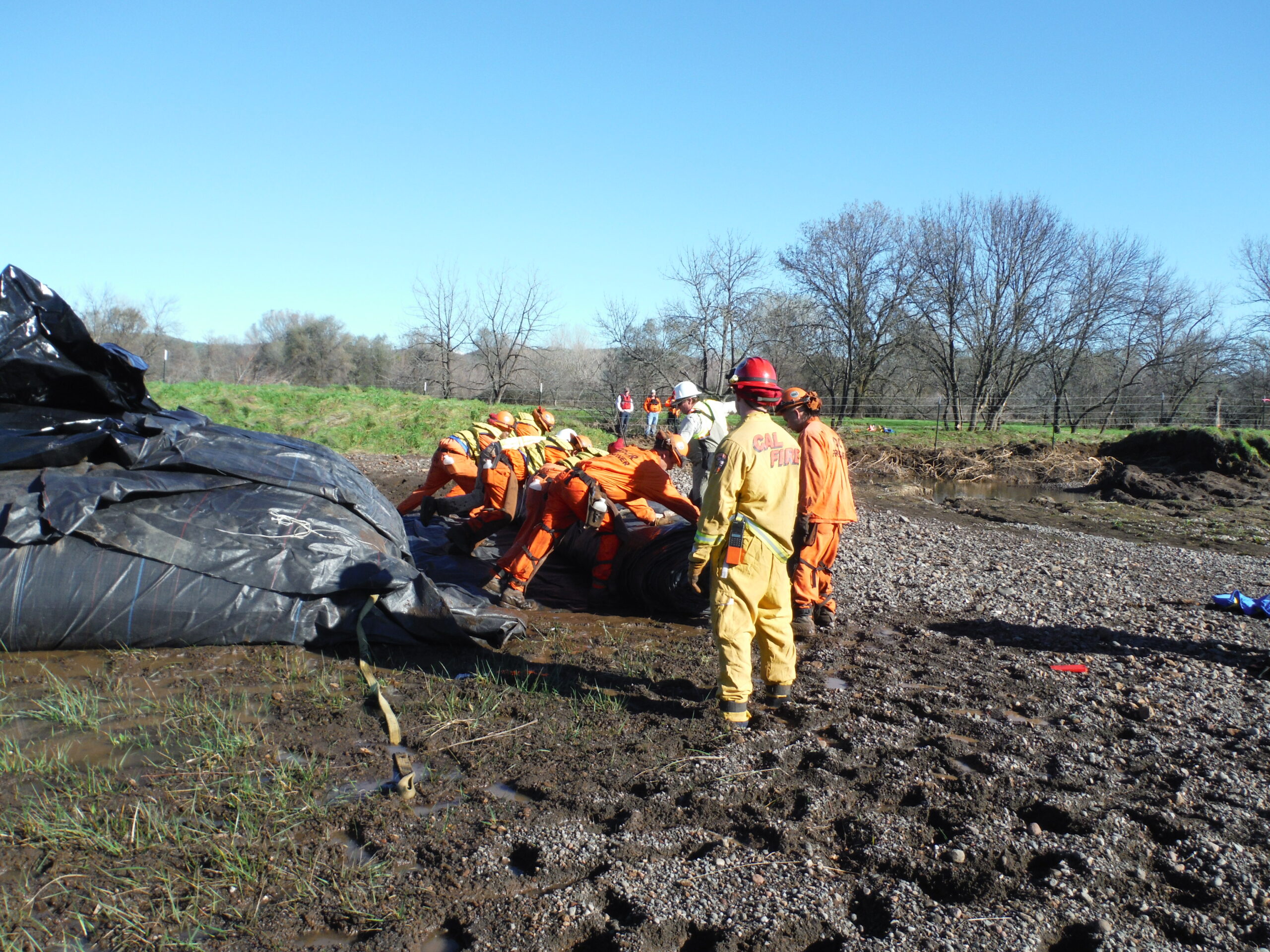
Manual labor was used to unroll the proper footage needed to make the connection.
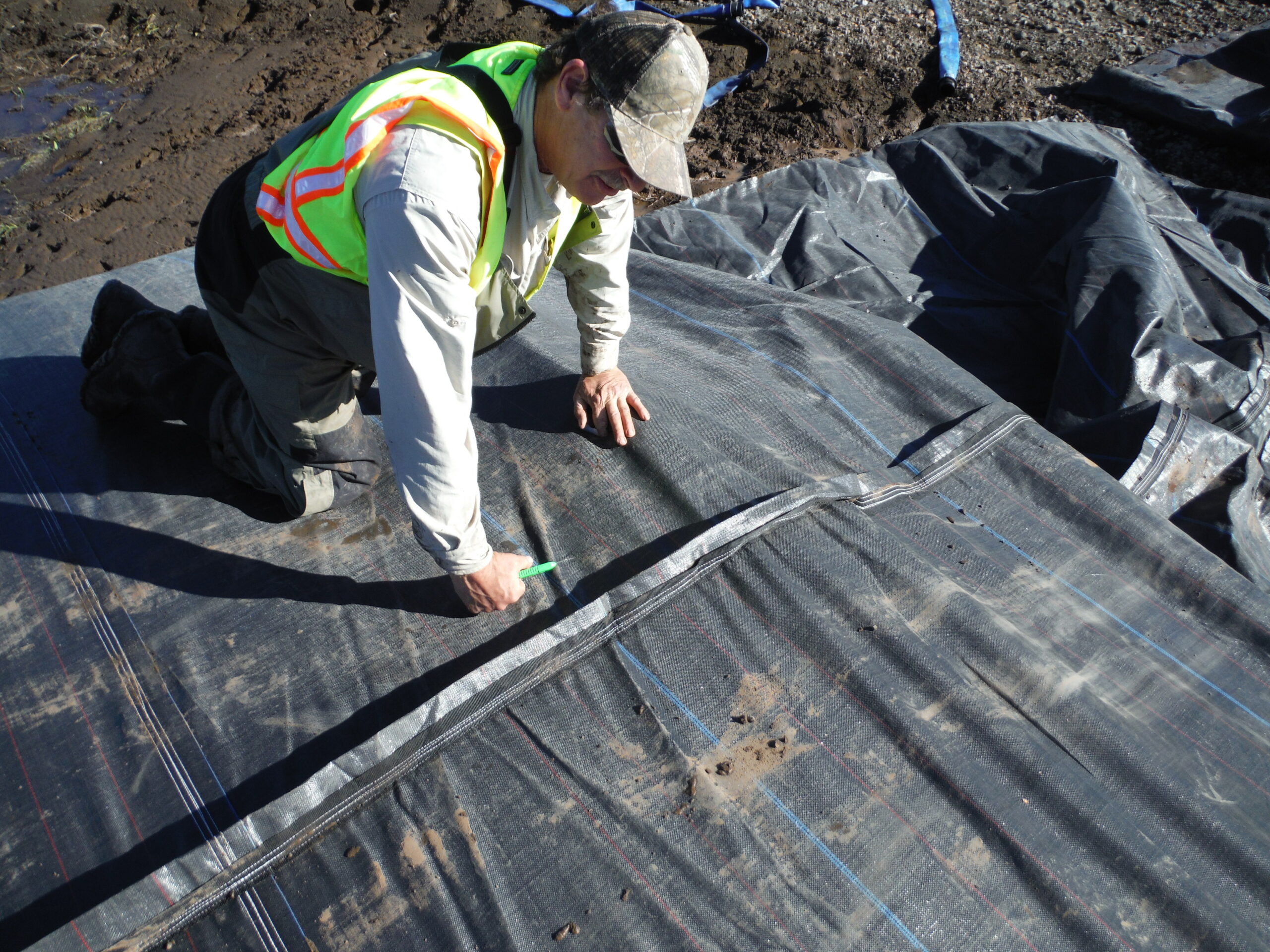
A worker cuts holes in the connection collar of the first AquaDam, for the second AquaDam's fill-tubes to be pulled through. The second AquaDam® is a single closed end (SCE) unit, which requires a starting bank that is greater in height than the maximum height of the AquaDam® along it's given path.
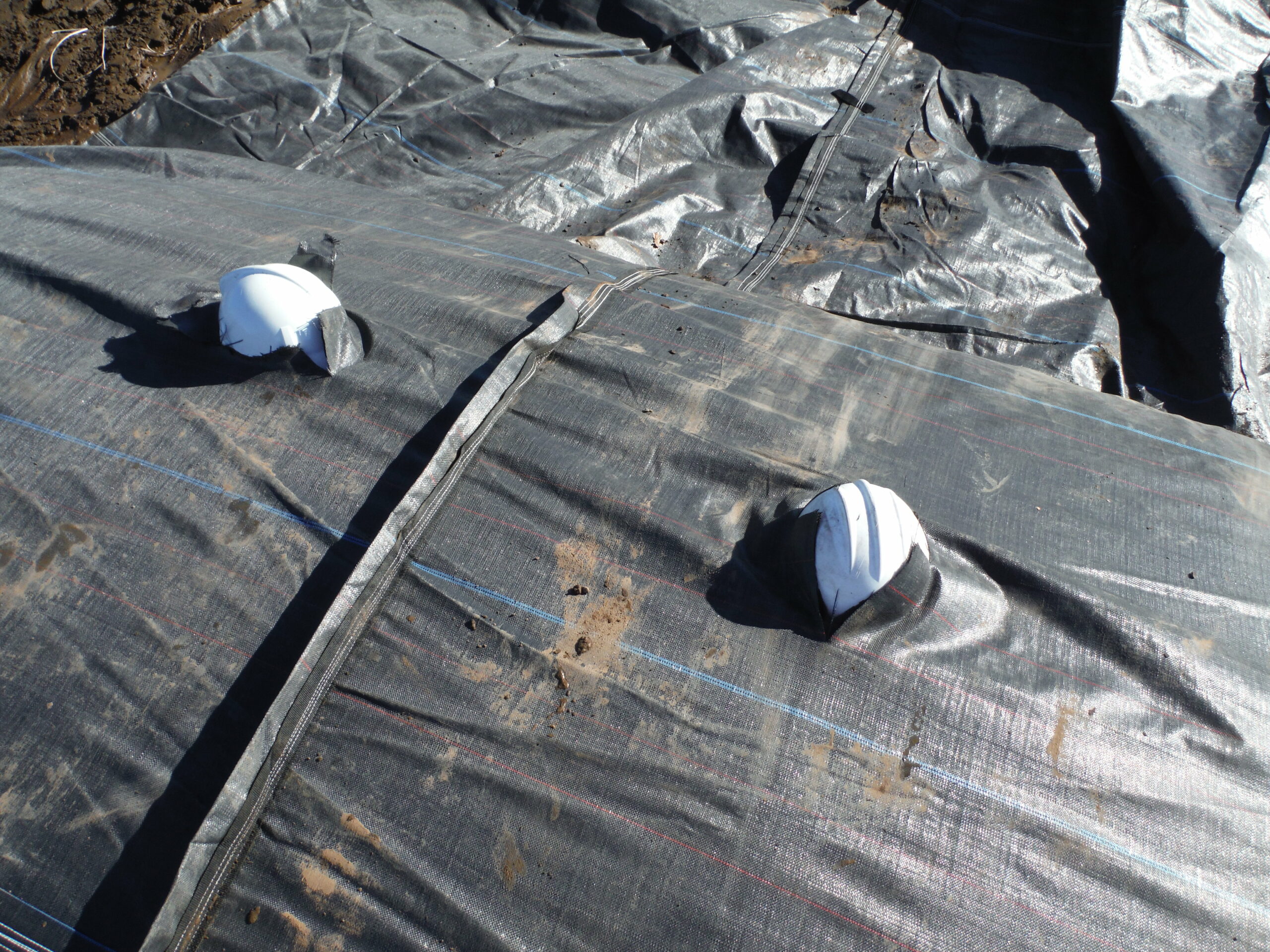
These hard hats worked well as templates for cutting holes to pull the fill-tubes of the second AquaDam® through.
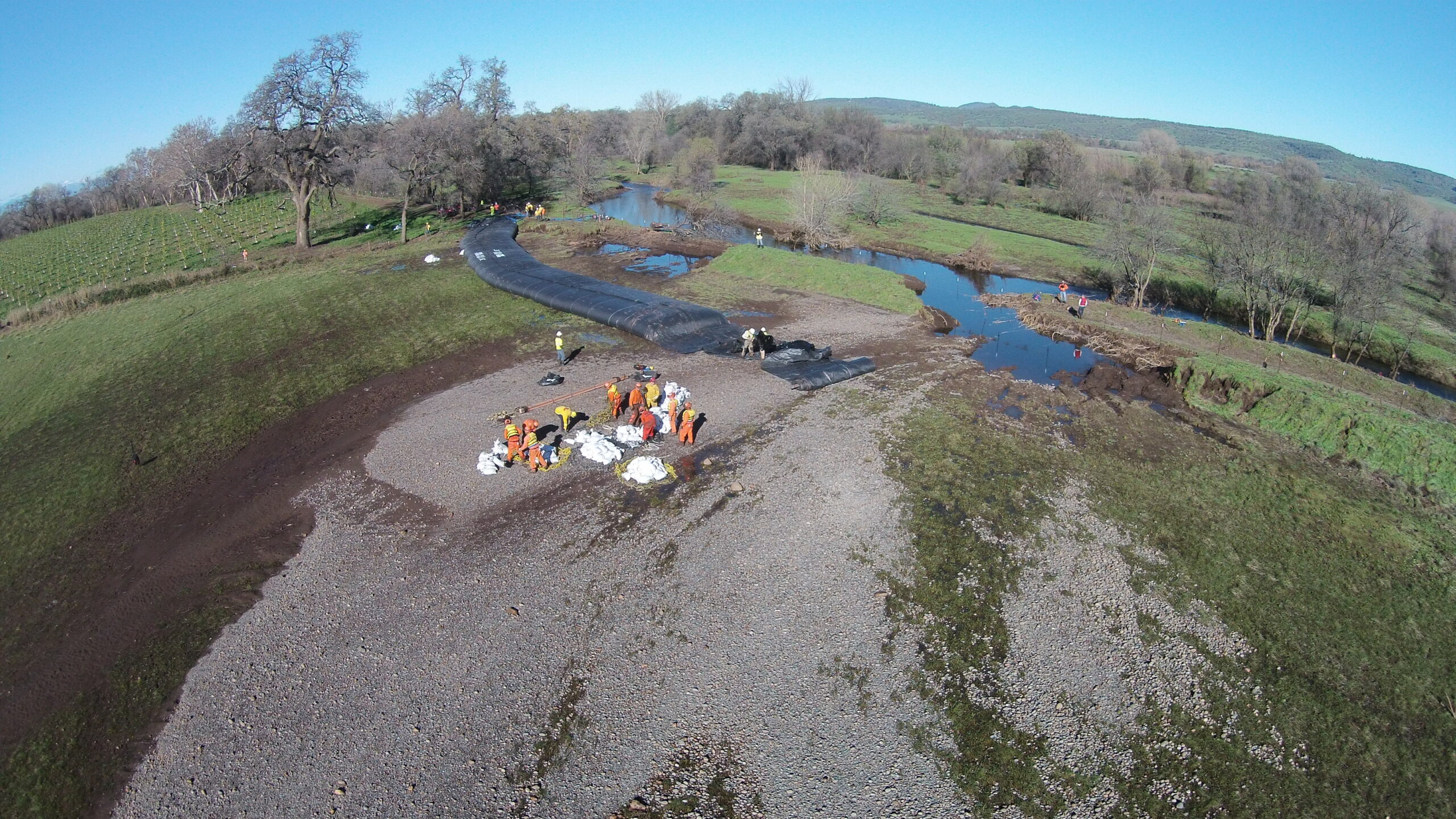
Workers are preparing the fill-tubes of the second AquaDam, prior to them being pulled through the connection collar of the first AquaDam.
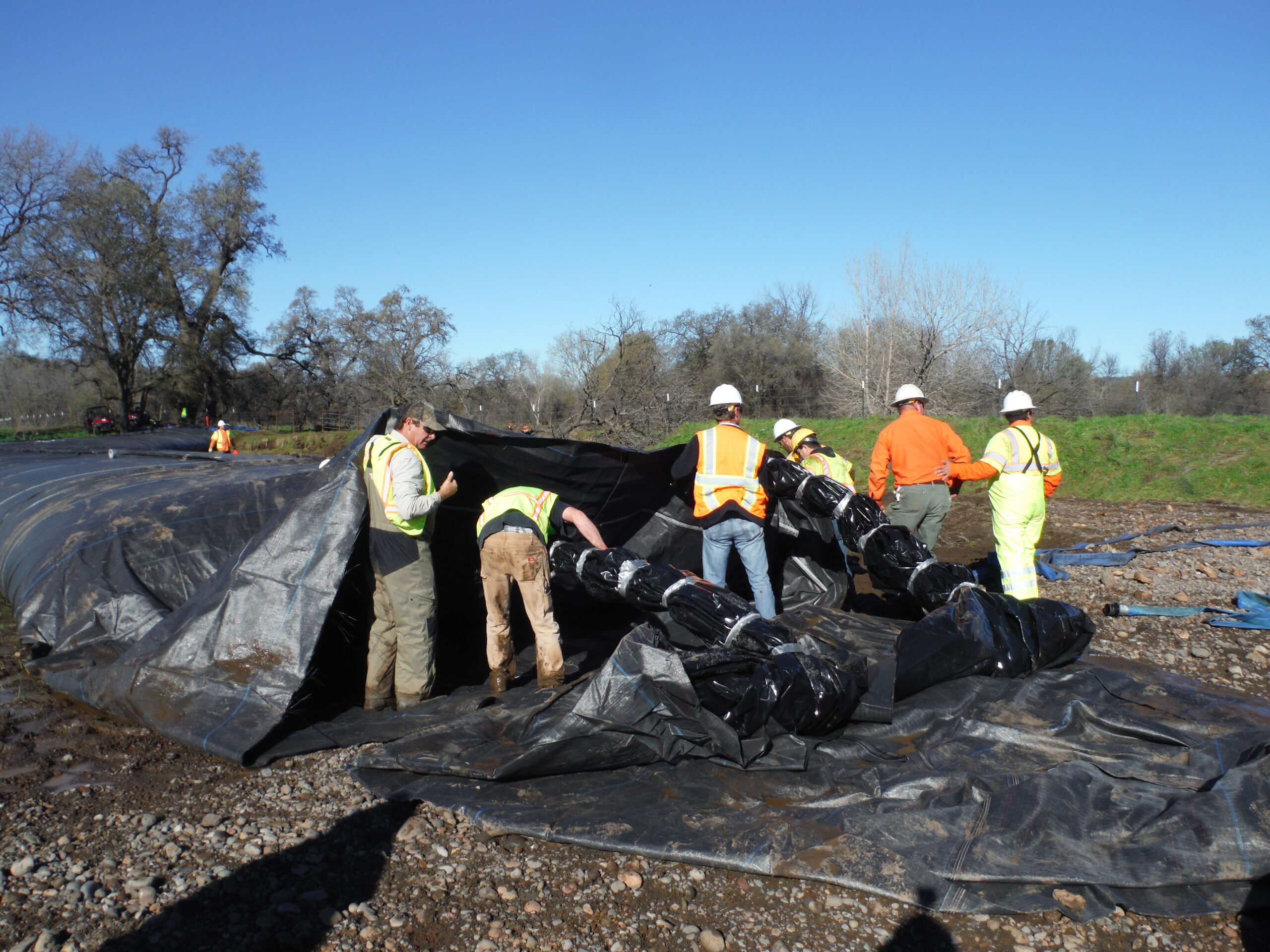
Workers are now feeding the second AquaDam's fill-tubes into the first AquaDam's connection collar. This connection will make the two 200ft long AquaDams act as one 400ft long cofferdam.
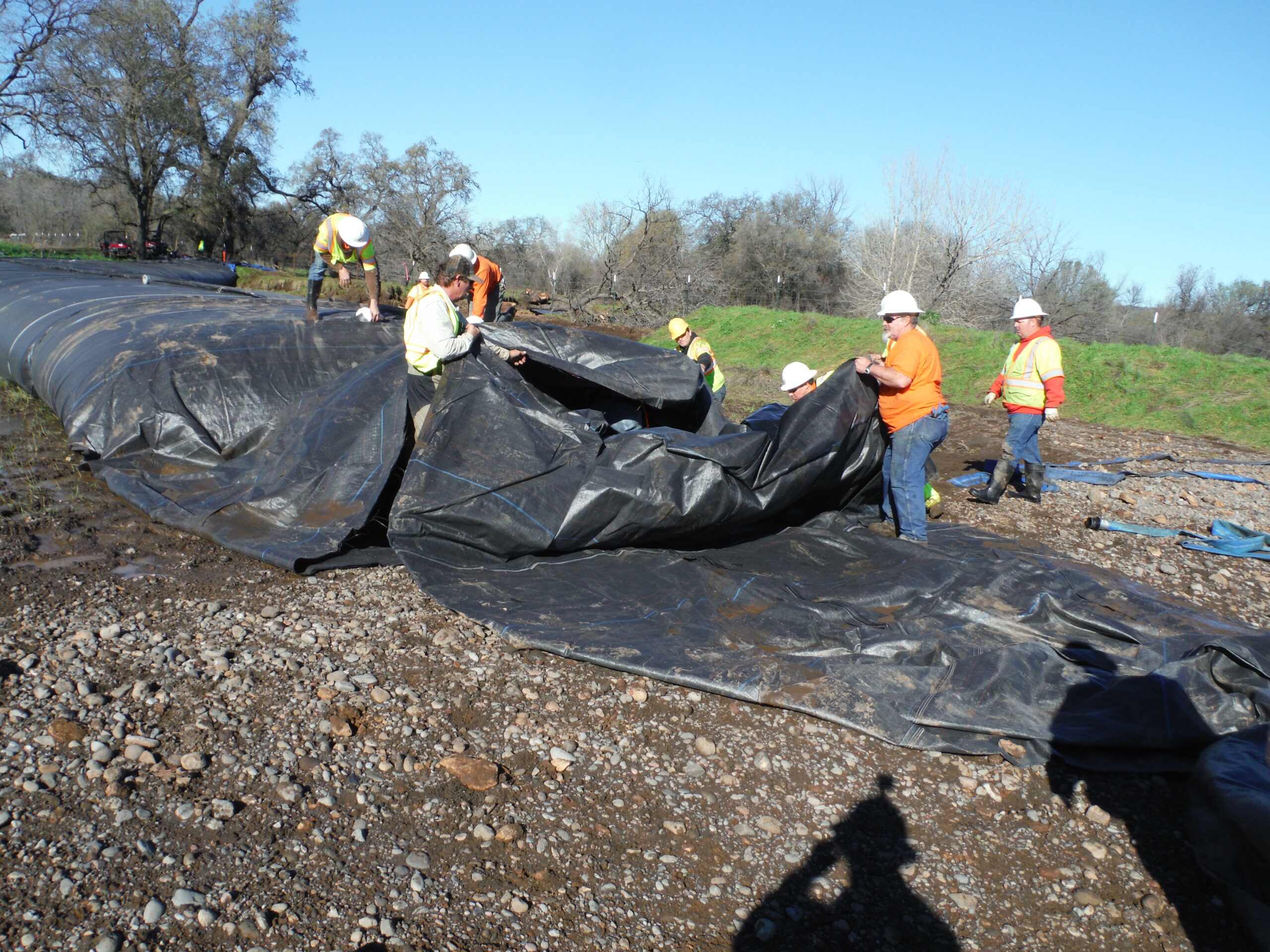
When making a connection like this, it is important that the first AquaDam® not be completely filled yet. With the first AquaDam® only partially filled, there will be more available space to squeeze the second AquaDam® into the collar.
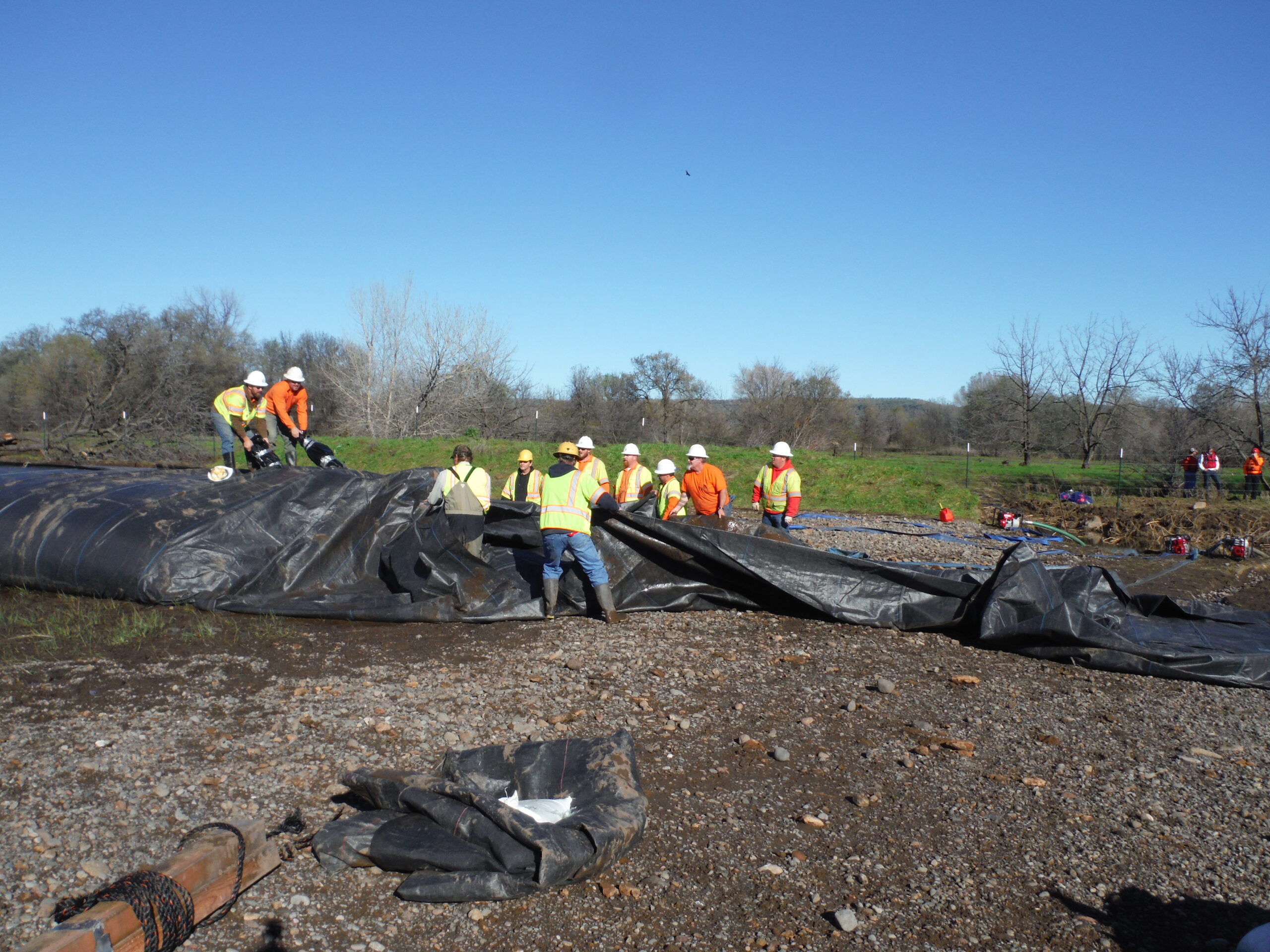
Workers pull the fill-tubes through the holes in the connection collar, while other workers feed the second AquaDam® into the collar.
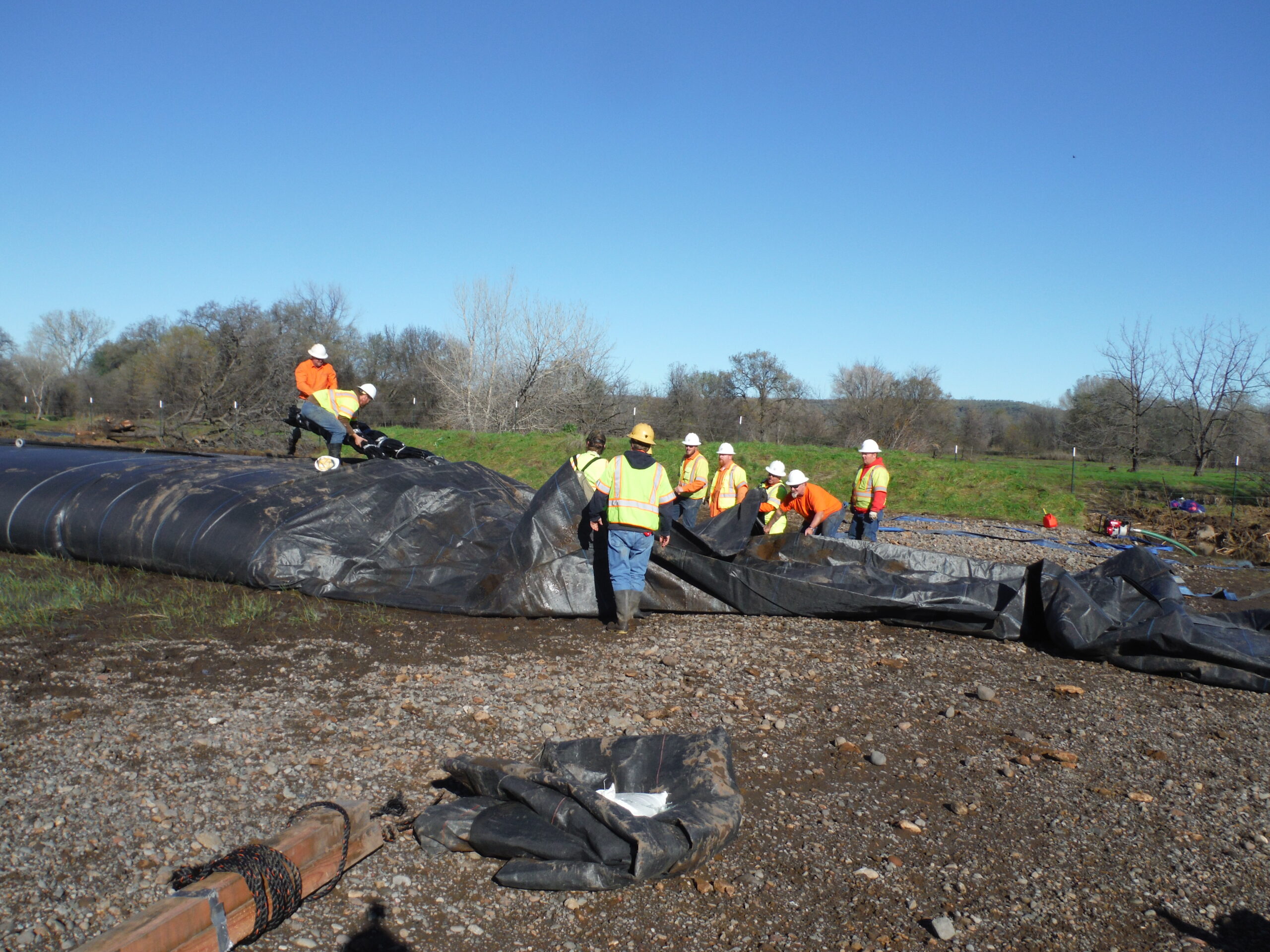
The fill-tubes must be pulled up and out of the holes completely. The starting point of the second AquaDam® must be bloused out on top of the first AquaDam, inside of the connection collar.
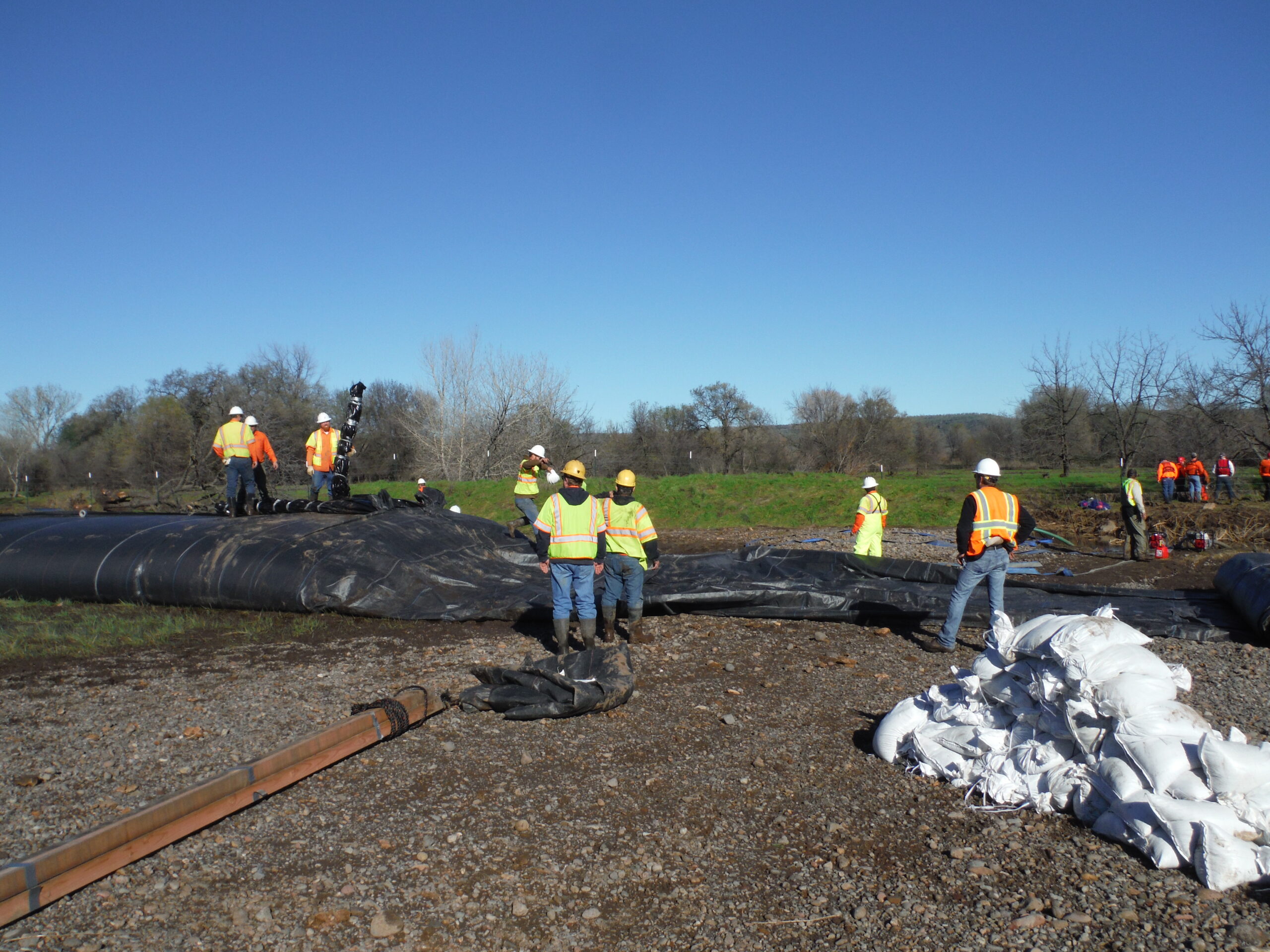
The connection has been made and now the second AquaDam® can be prepared to fill with water.
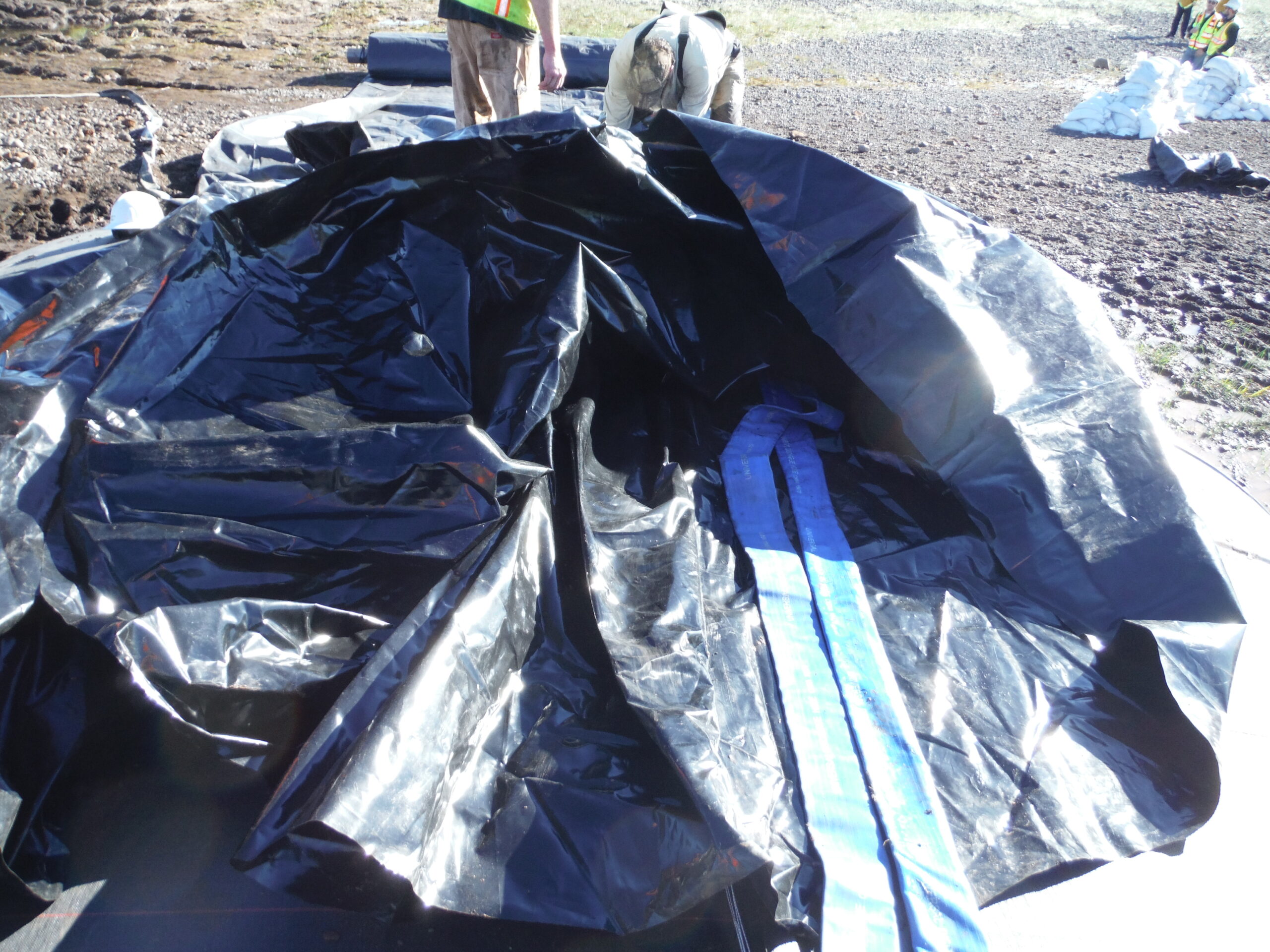
Blue 3in discharge hoses have been placed in the fill-tubes of the second AquaDam.
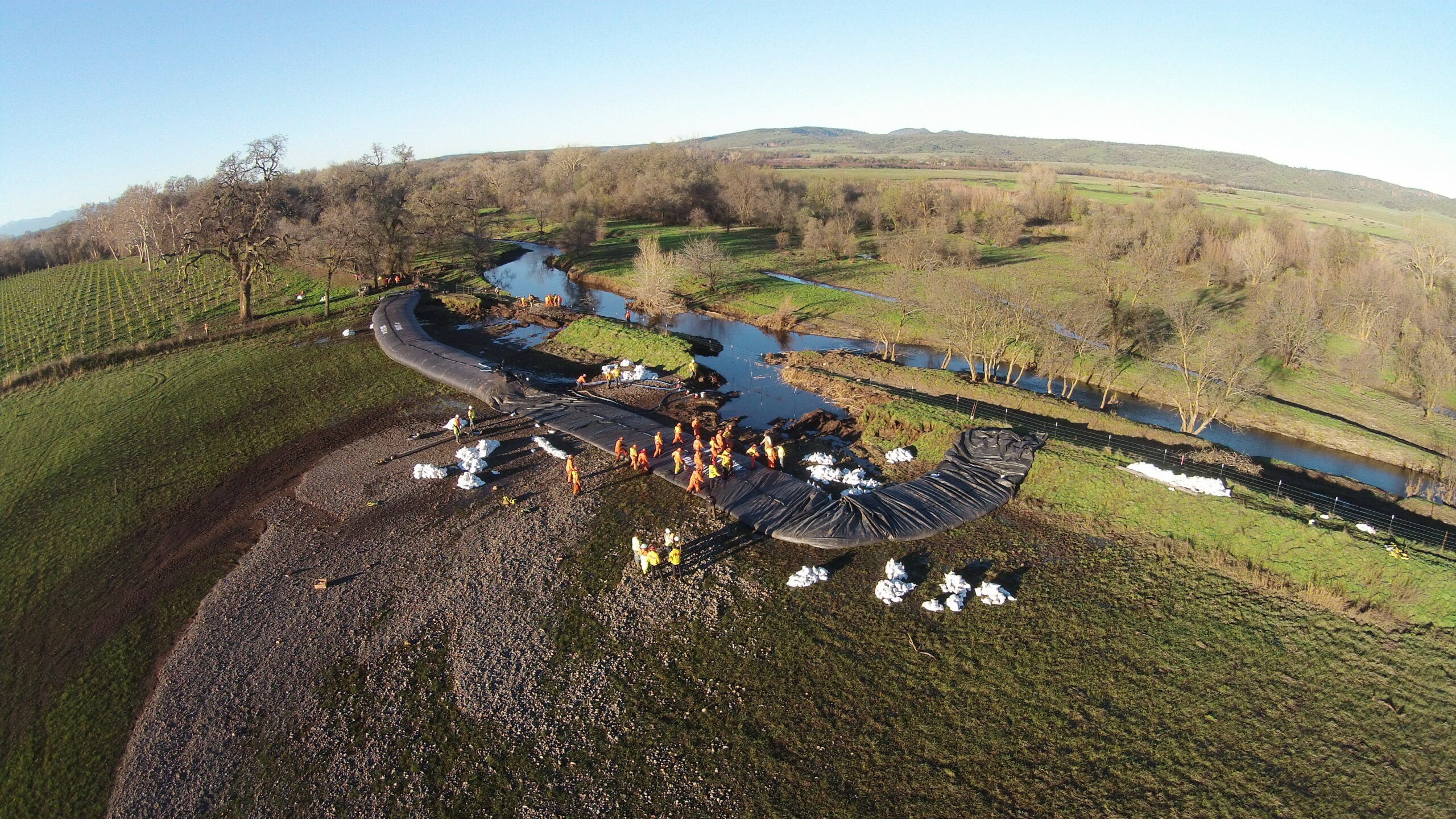
In this photo, the second AquaDam® has been completely unrolled, it is in the proper position, and is filling up.
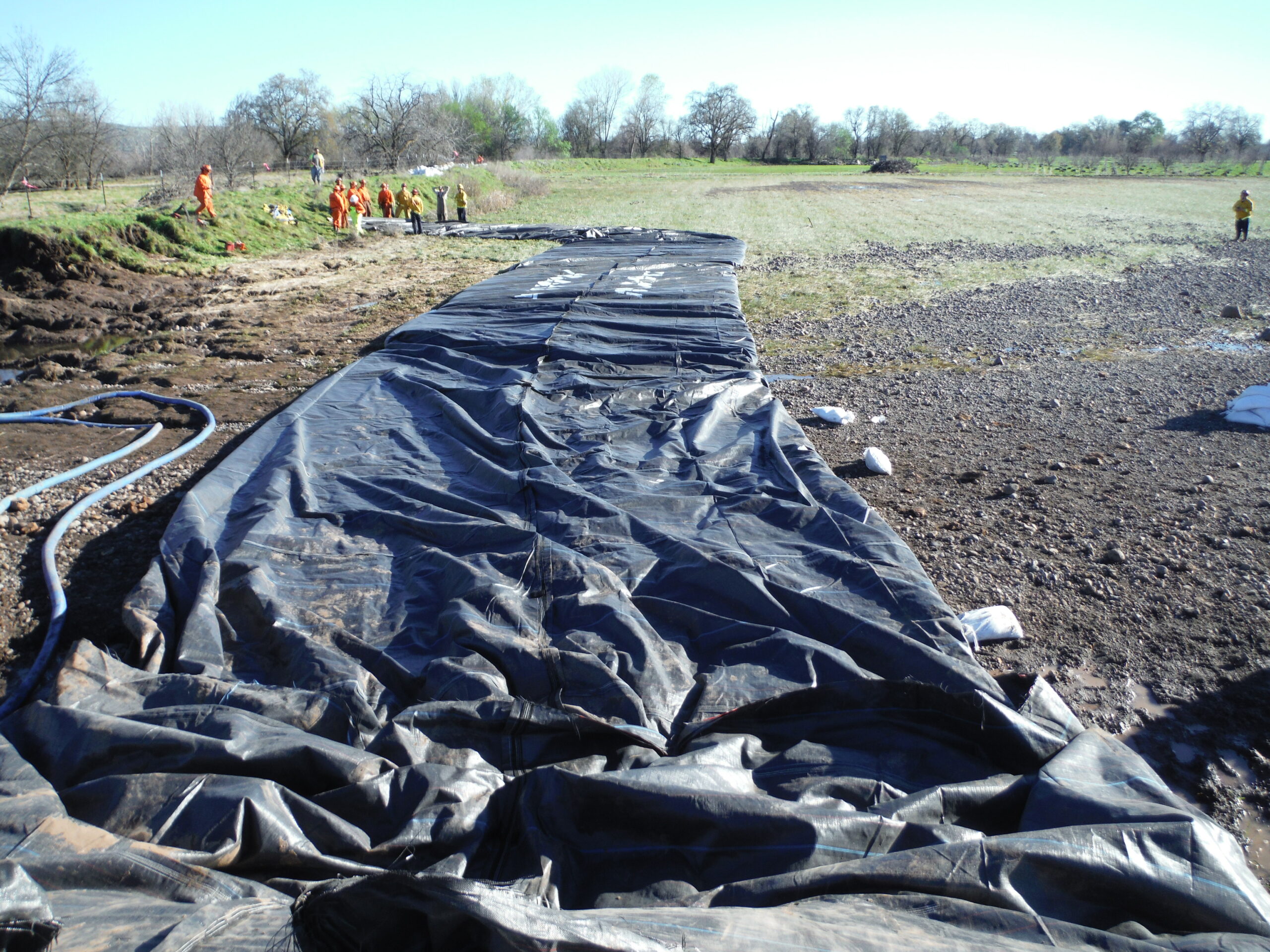
Prior to the second AquaDam® being put into the proper position, the end of the AquaDam® was allowed to unroll up the levee (the ending bank) at an angle. AquaDams work best when the ends dead head into the ending bank.
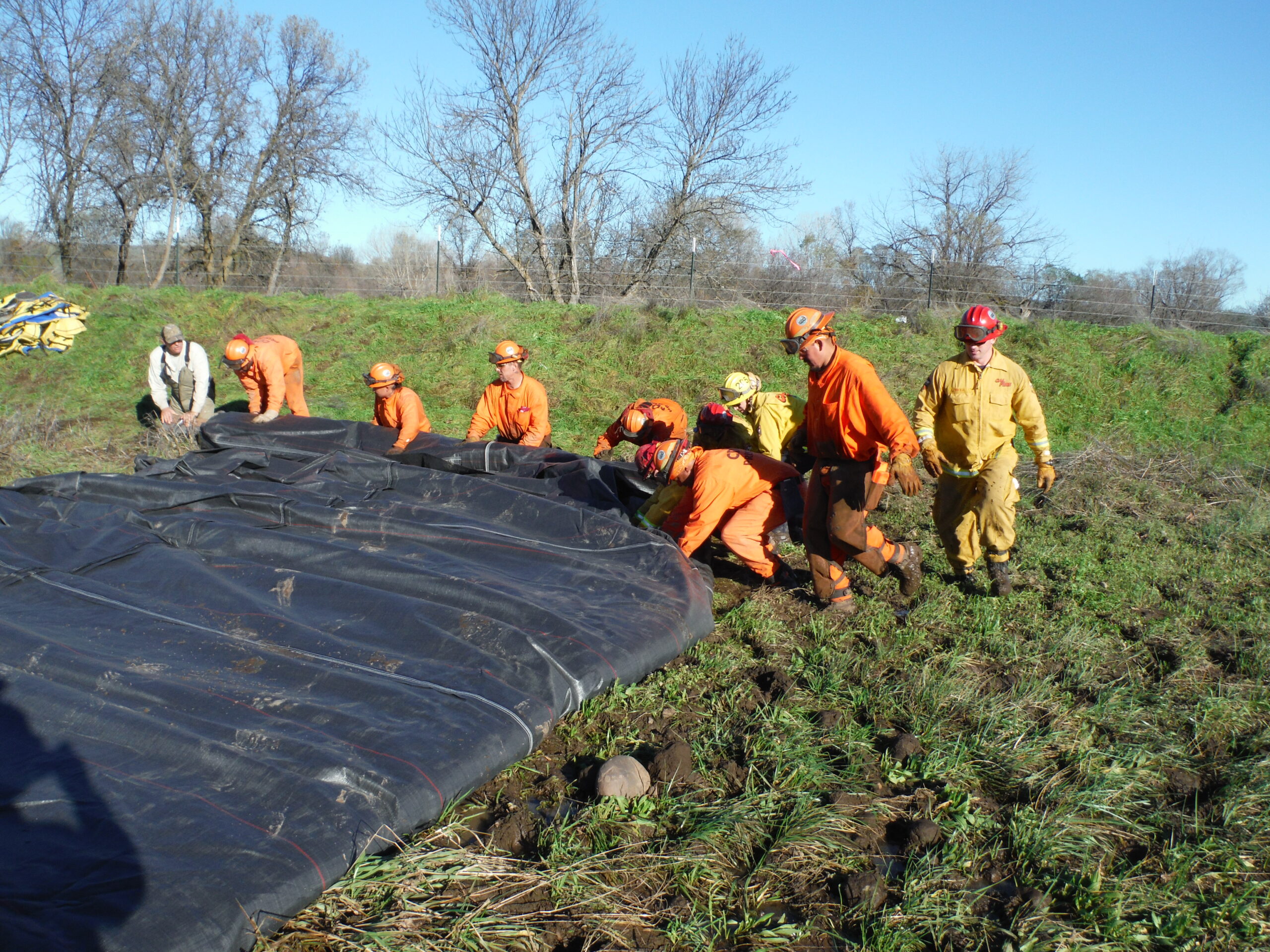
Workers needed to push the water (inside of the second AquaDam) back towards the starting point and simultaneously re-roll the end of the AquaDam.
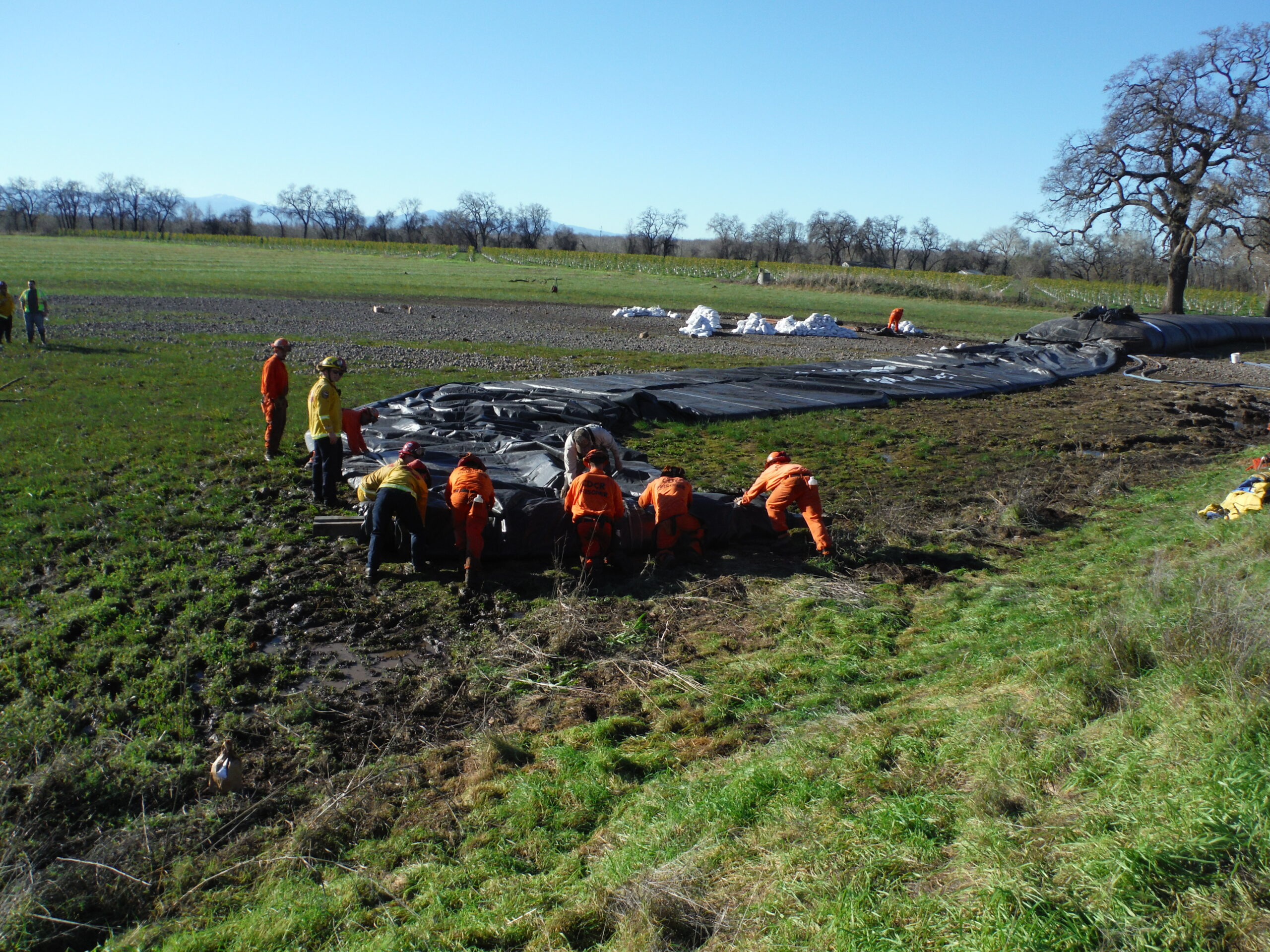
Unfortunately, several feet of the second AquaDam® had to be re-rolled back up so that a proper turn could be made and for the end to marry up to the levee correctly.
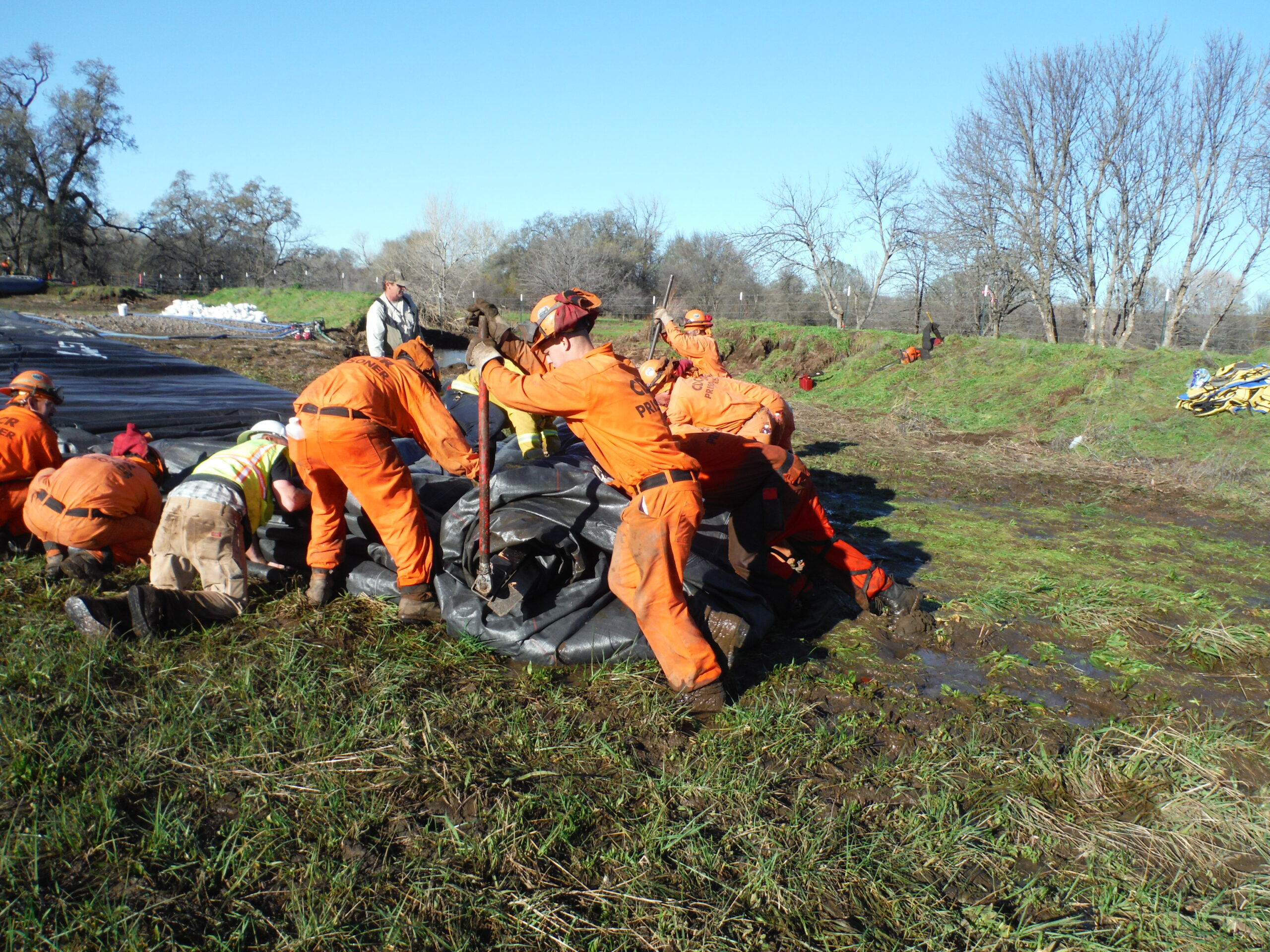
Ratchets and brackets were needed to help re-roll the second AquaDam® better.
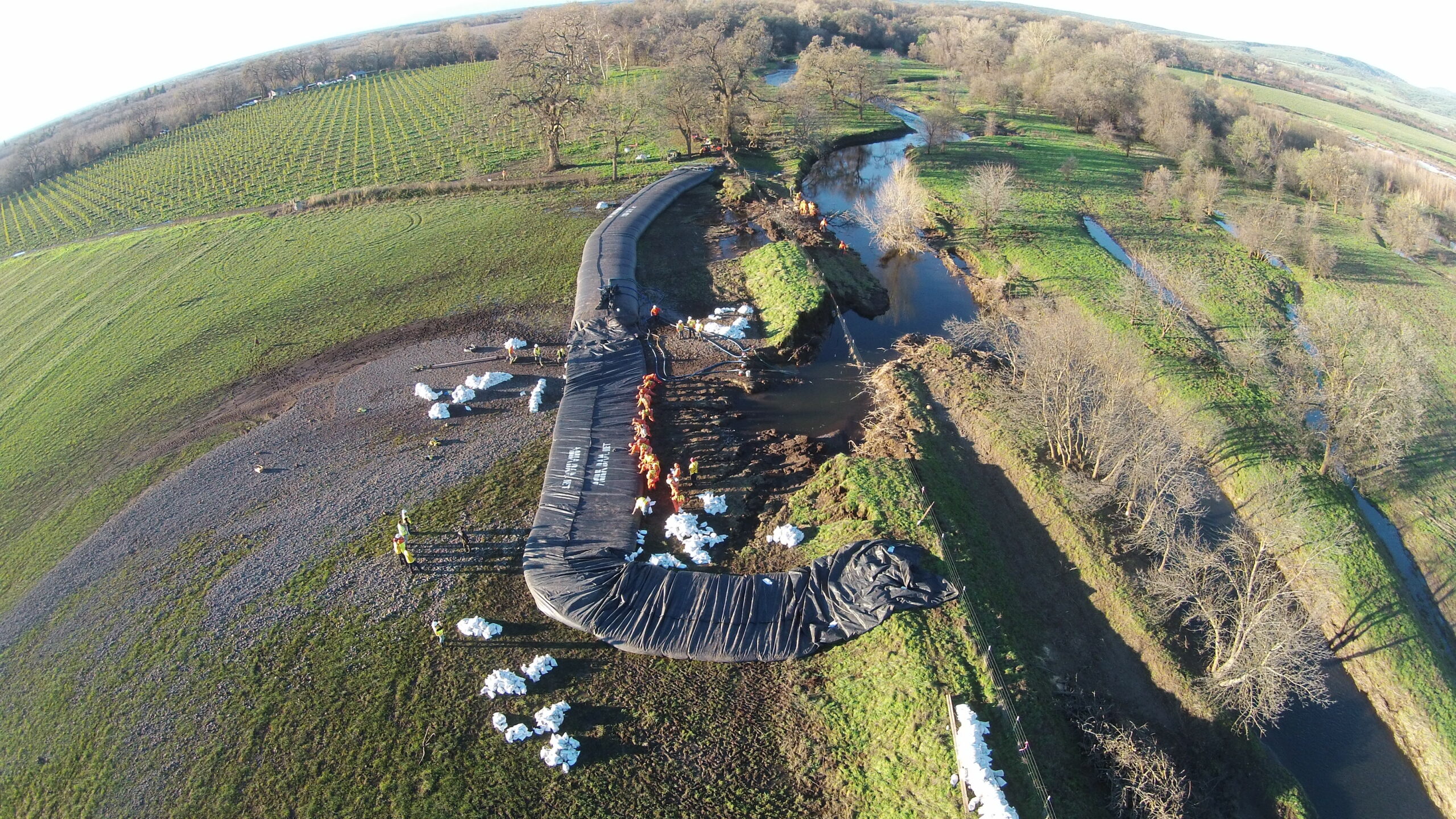
Four water pumps were used to fill the second AquaDam, while the other two pumps finished filling the first AquaDam.
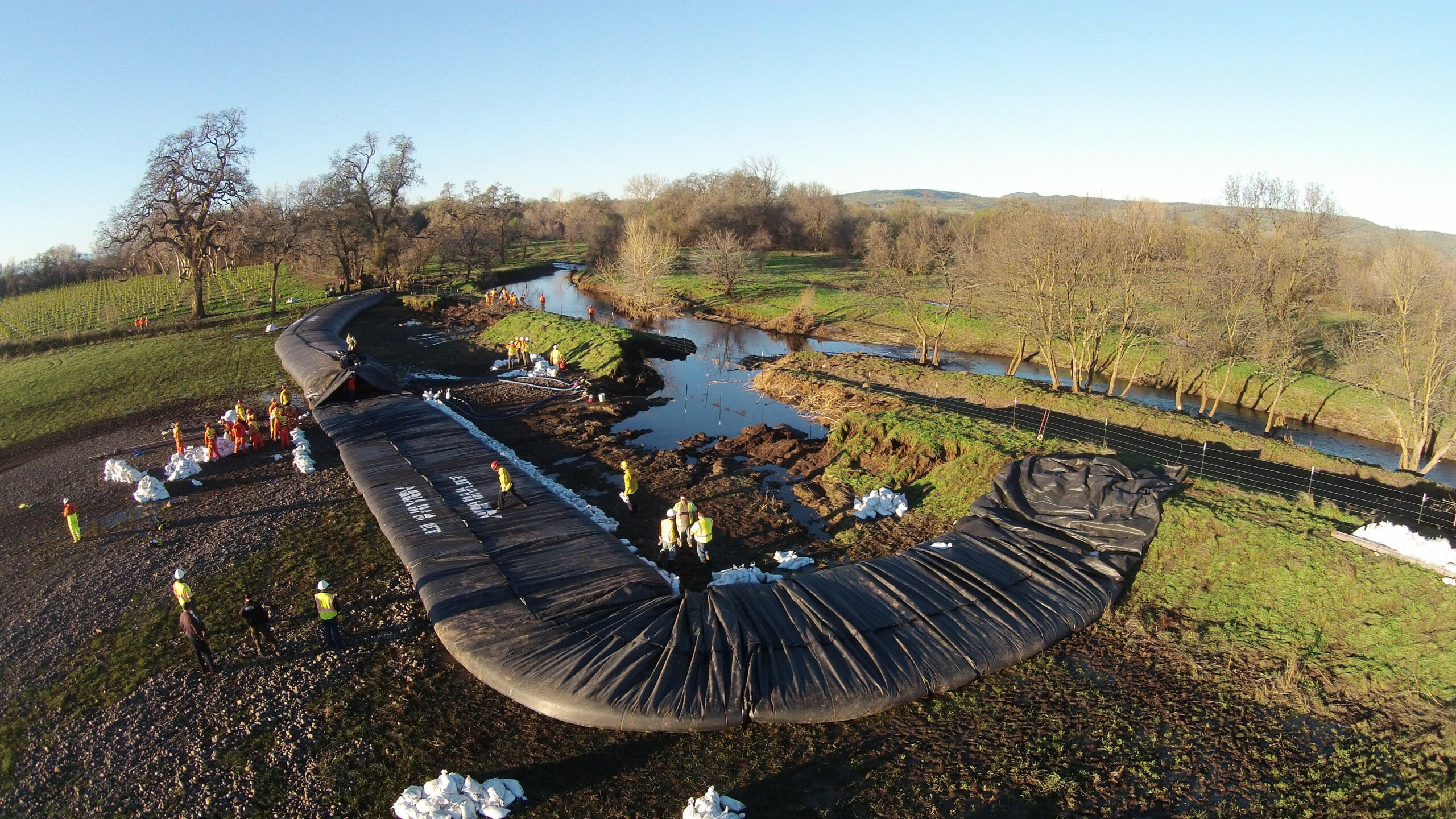
Here is a great view looking upstream of the levee breach.
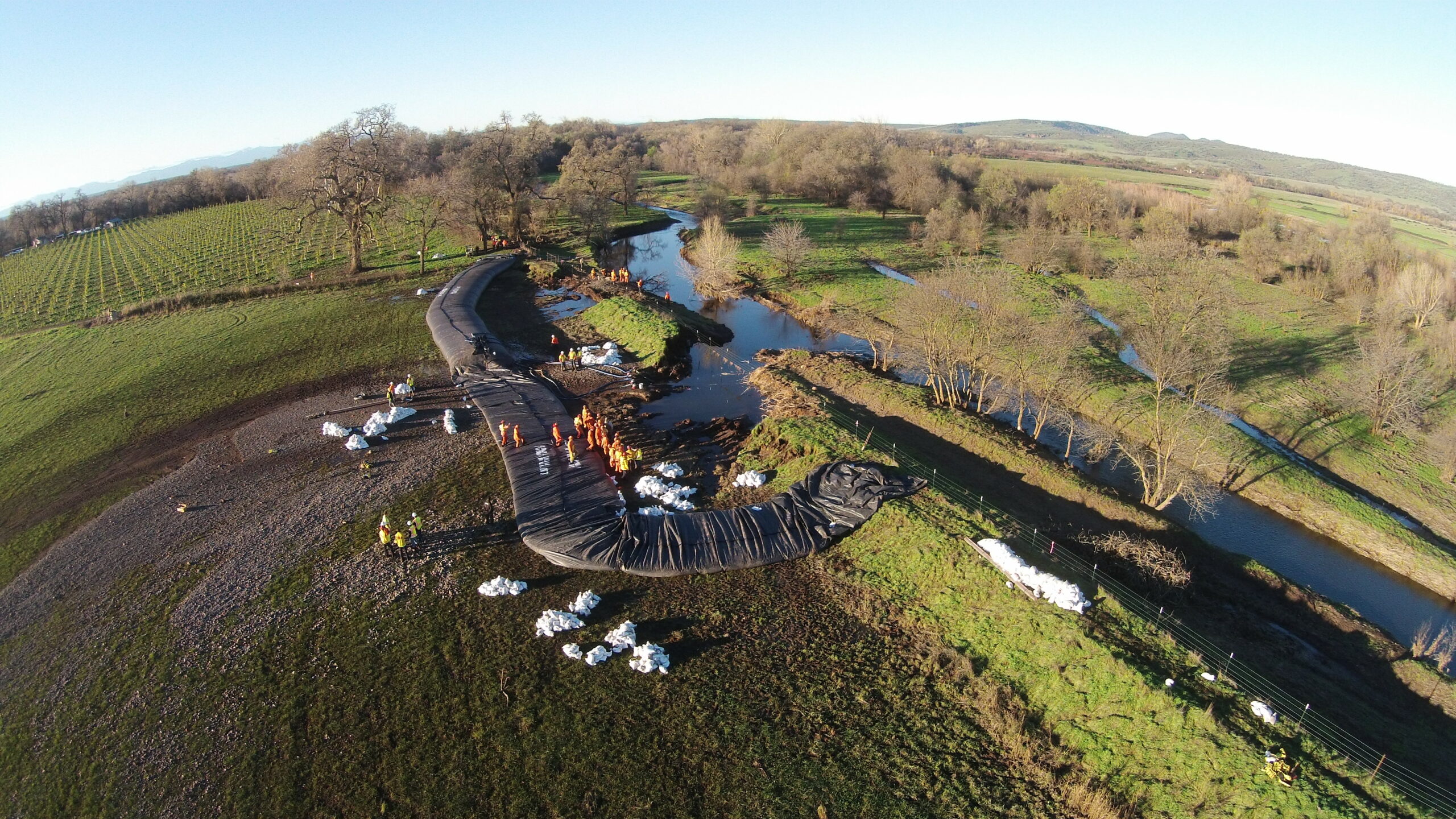
Workers are setting up sandbags to help support the second AquaDam® as it fills.
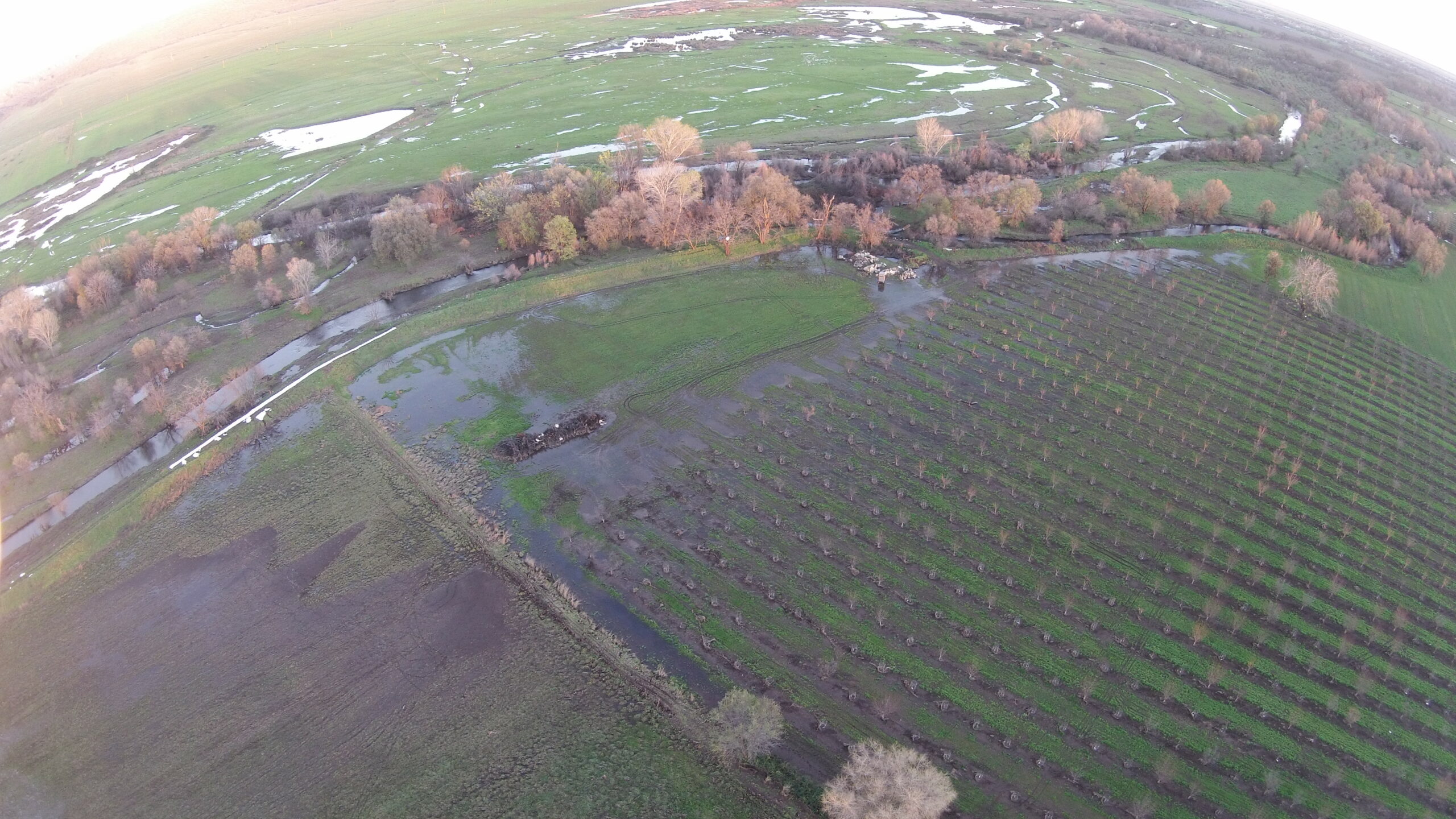
Here is an aerial view showing downstream of the job site.
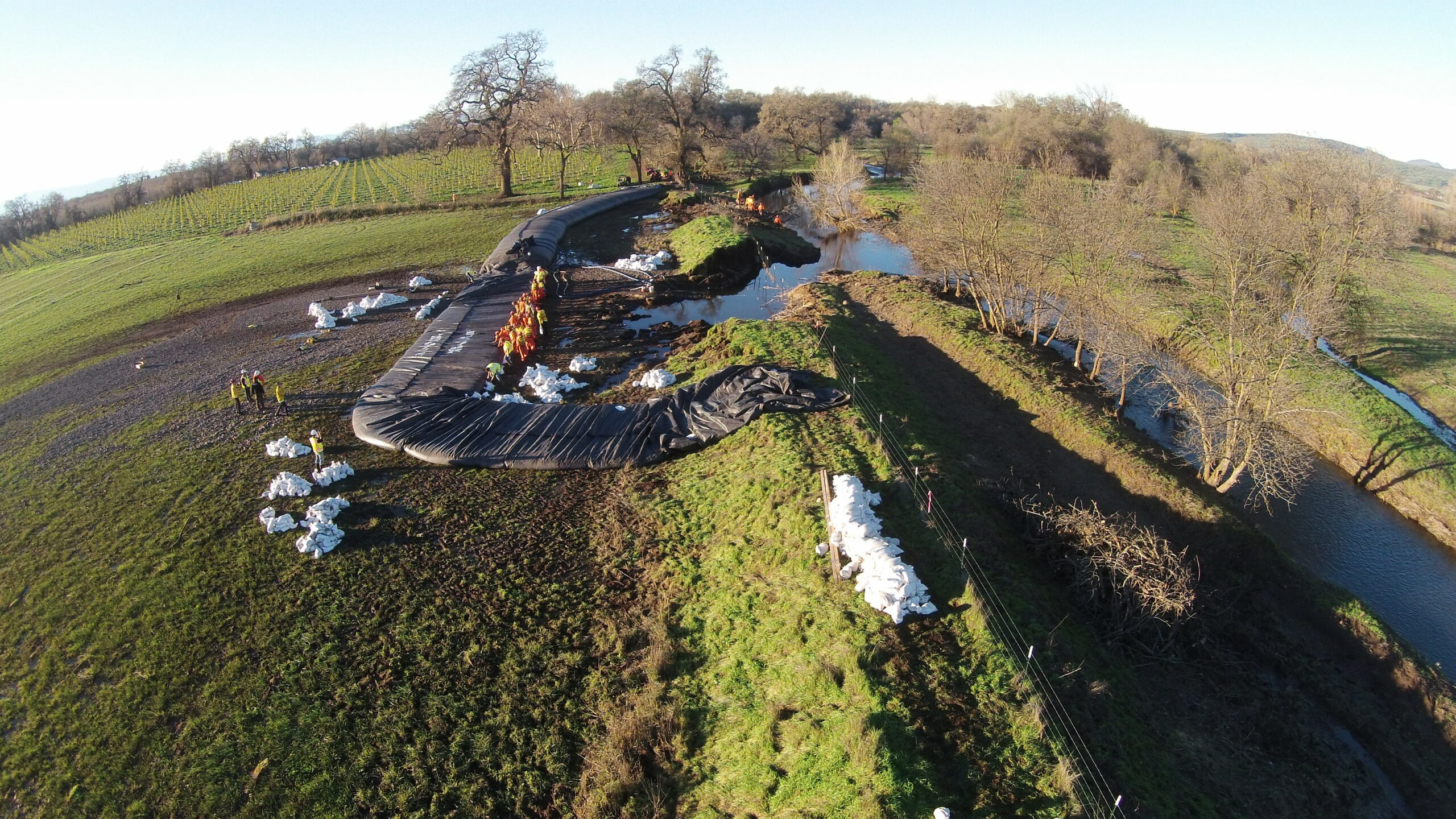
An aerial of the job site looking upstream.
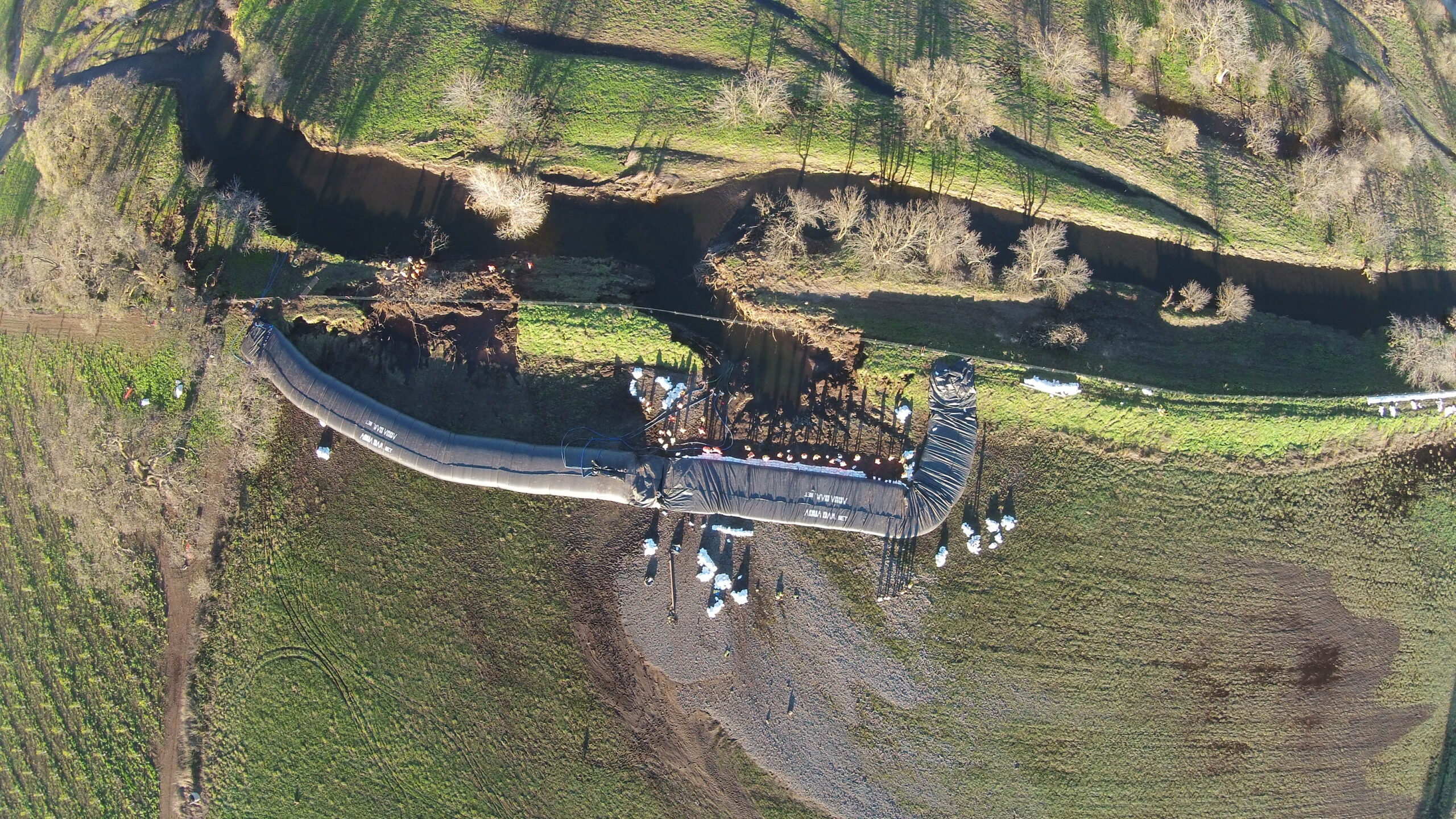
The entire job site with all 400ft of the 8ft tall AquaDam® cofferdam system in place and filling.
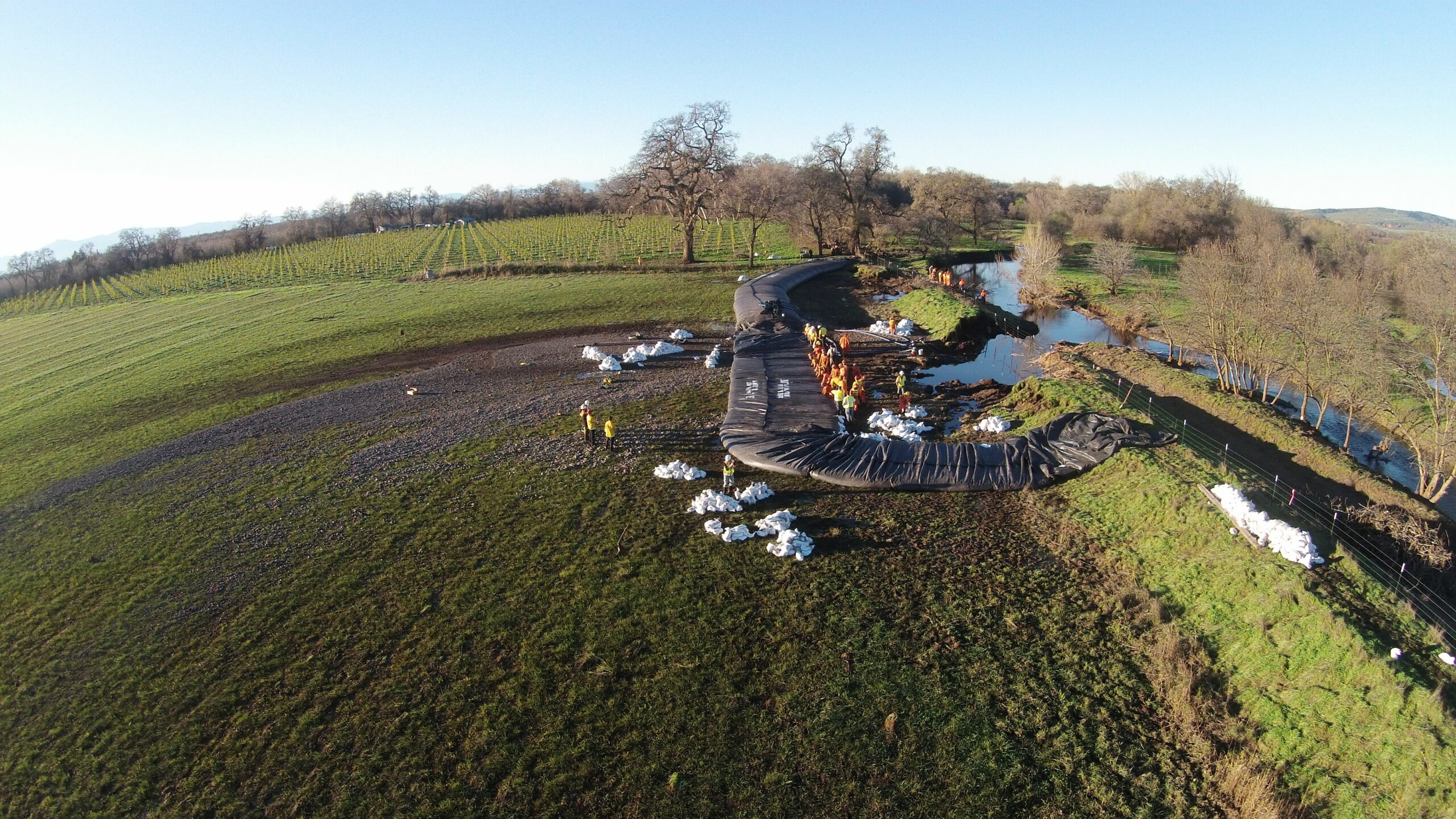
Another photo of the AquaDams filling. These AquaDams will be 17ft wide when they are fully filled. Notice the first AquaDam® is taller and thinner, where as the second AquaDam® is shorter and wider.
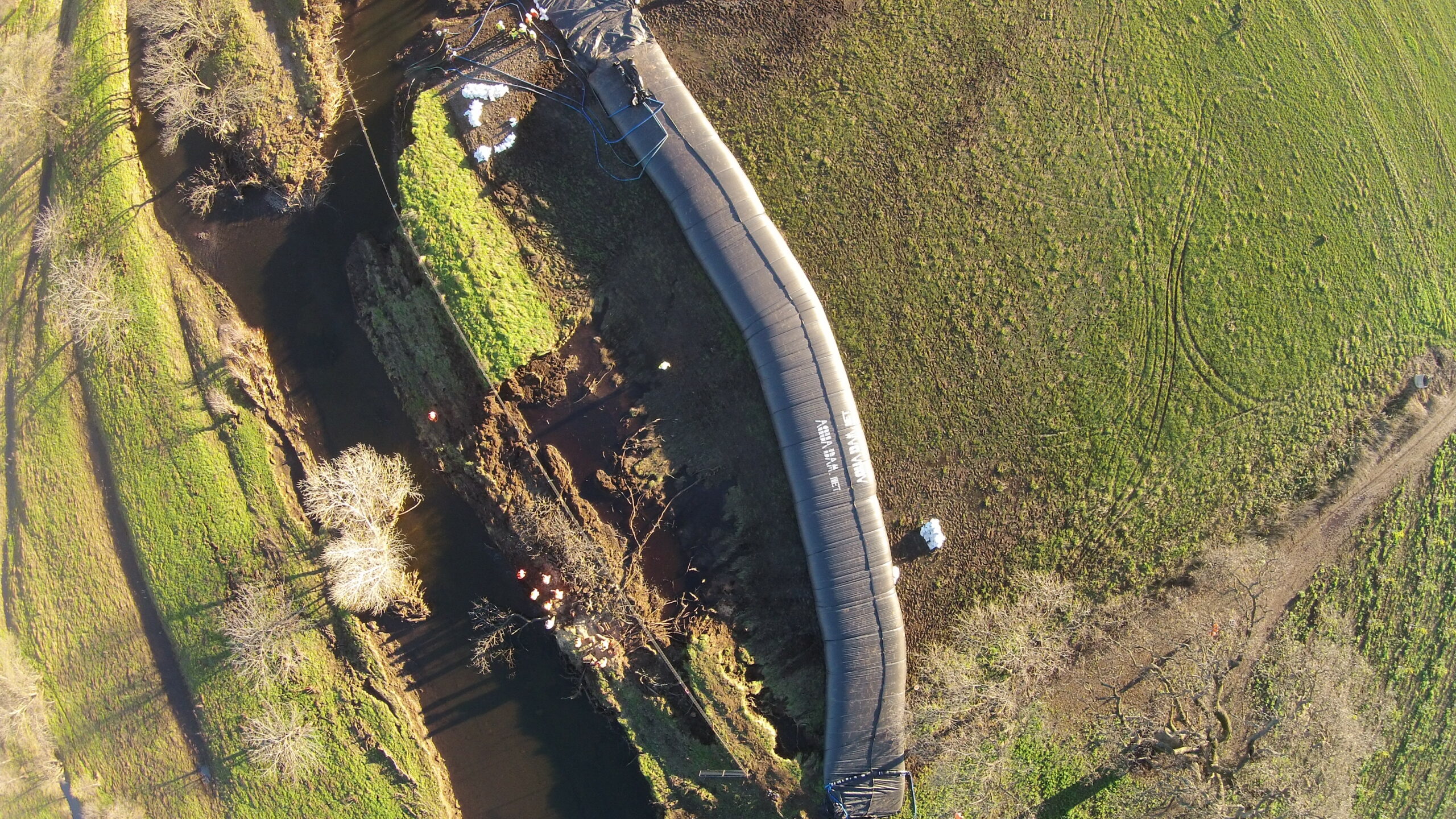
The first AquaDam, which was an 8ft tall 17ft wide (fully filled) 200ft long DCE AquaDam® with a connection collar. The fill-tubes for the first AquaDam® can be seen at the bottom of the picture.
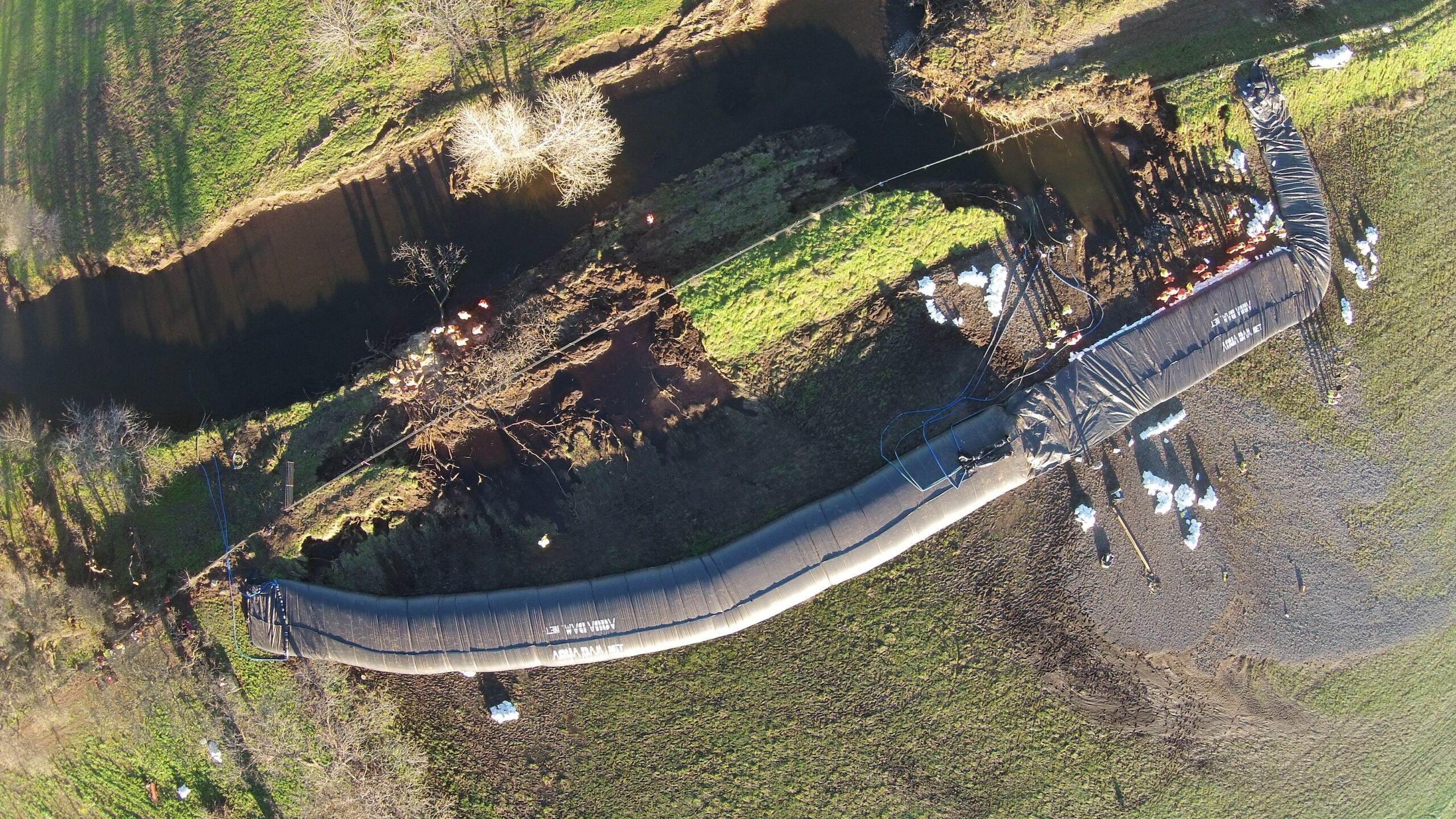
A great photo of the two breaches in the levee that will need to be repaired.
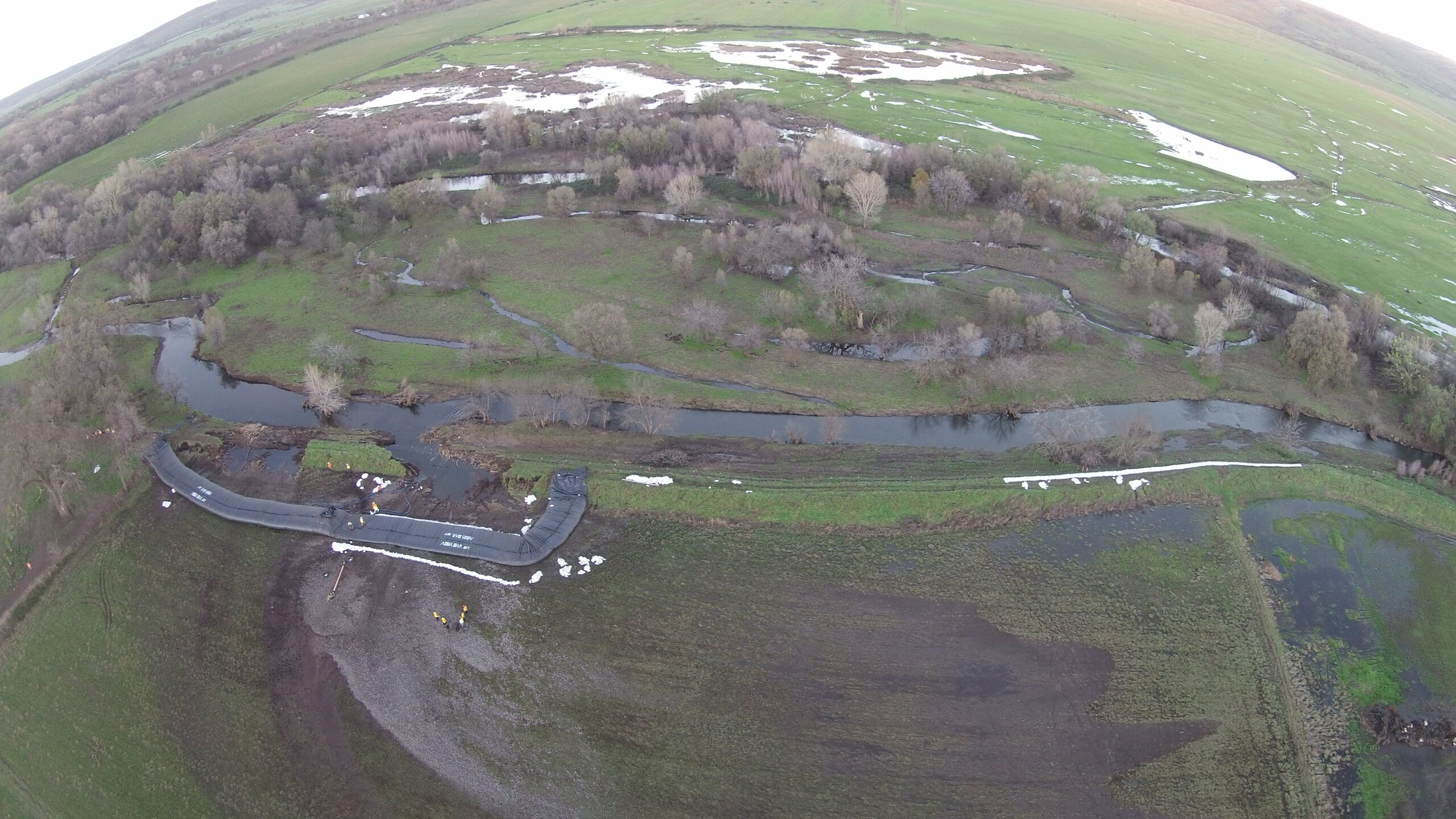
In this photo we can see some of the extent of flooding that occurred due to the levee breach.
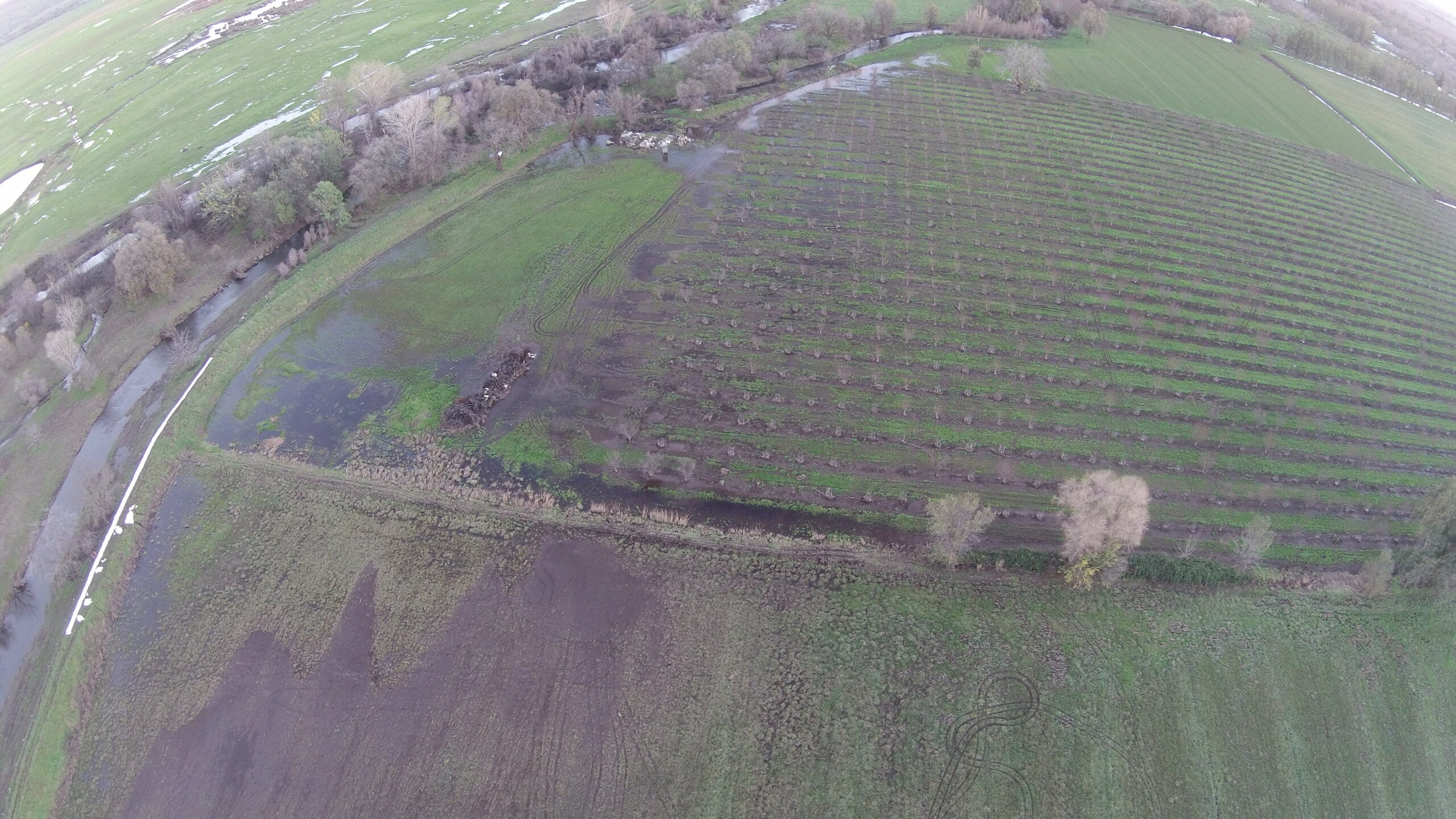
All the land that was flooded when the levee was breached.
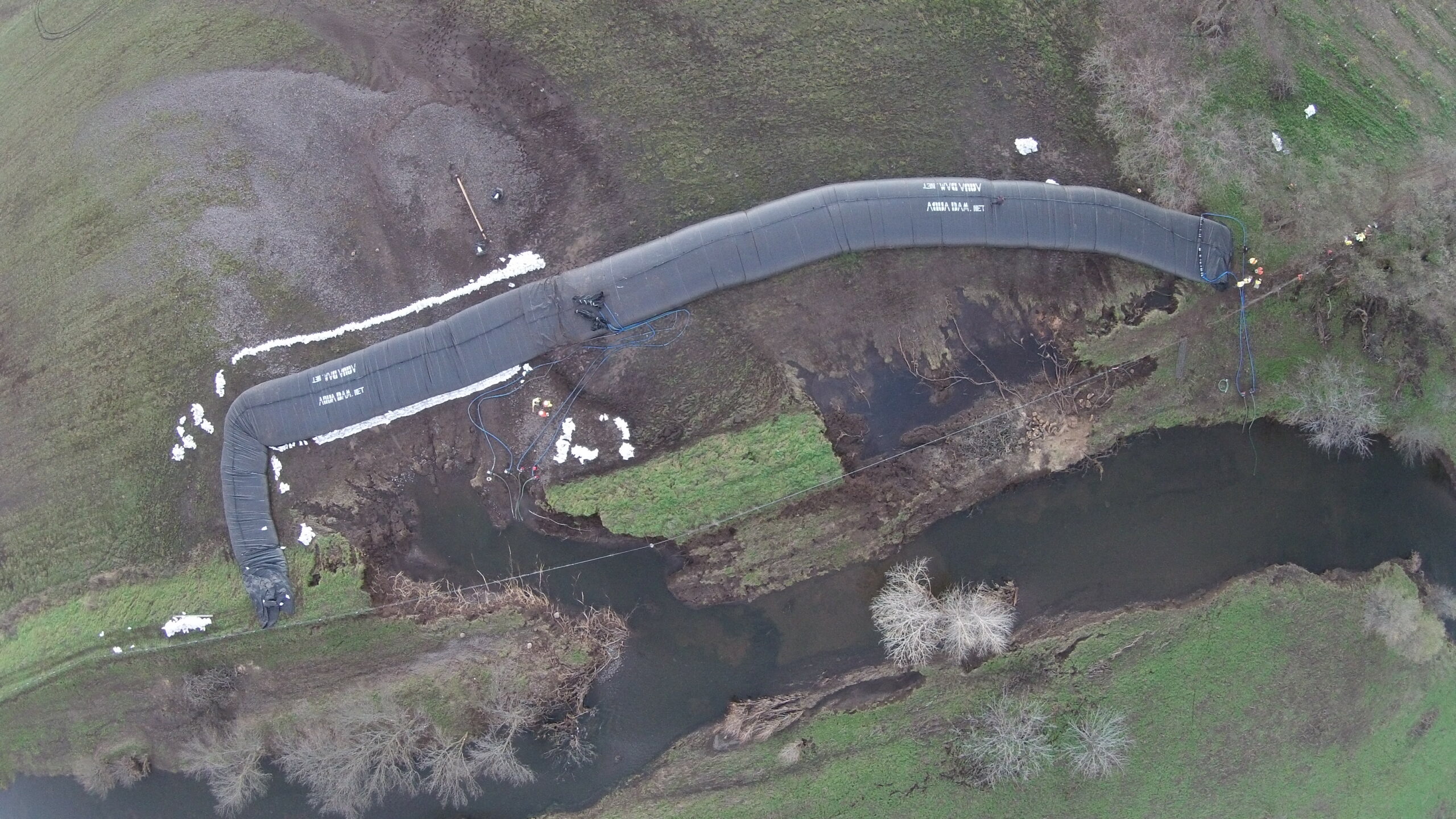
Aerial of the entire job site and AquaDam.
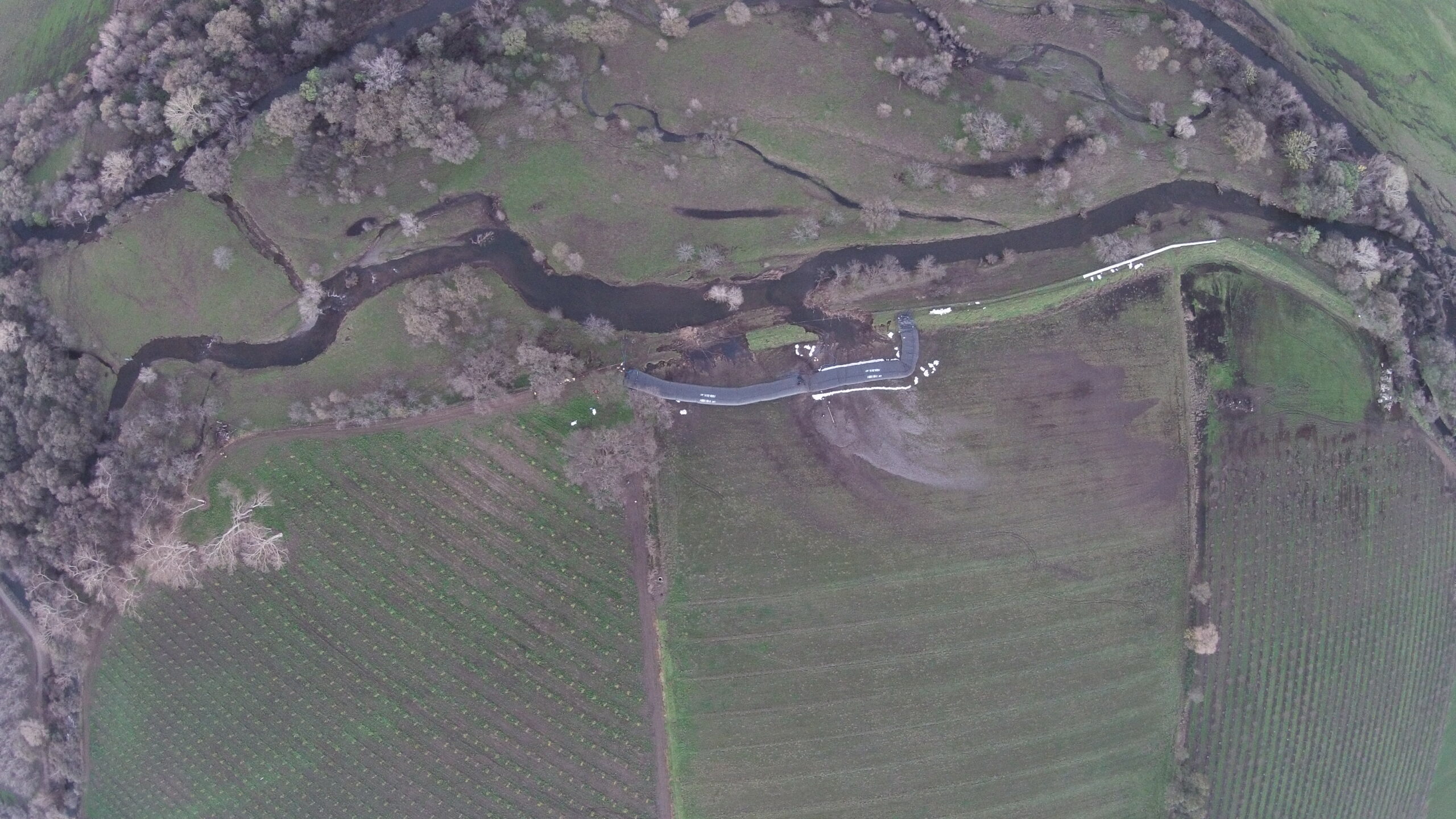
A much higher aerial photo of the project.
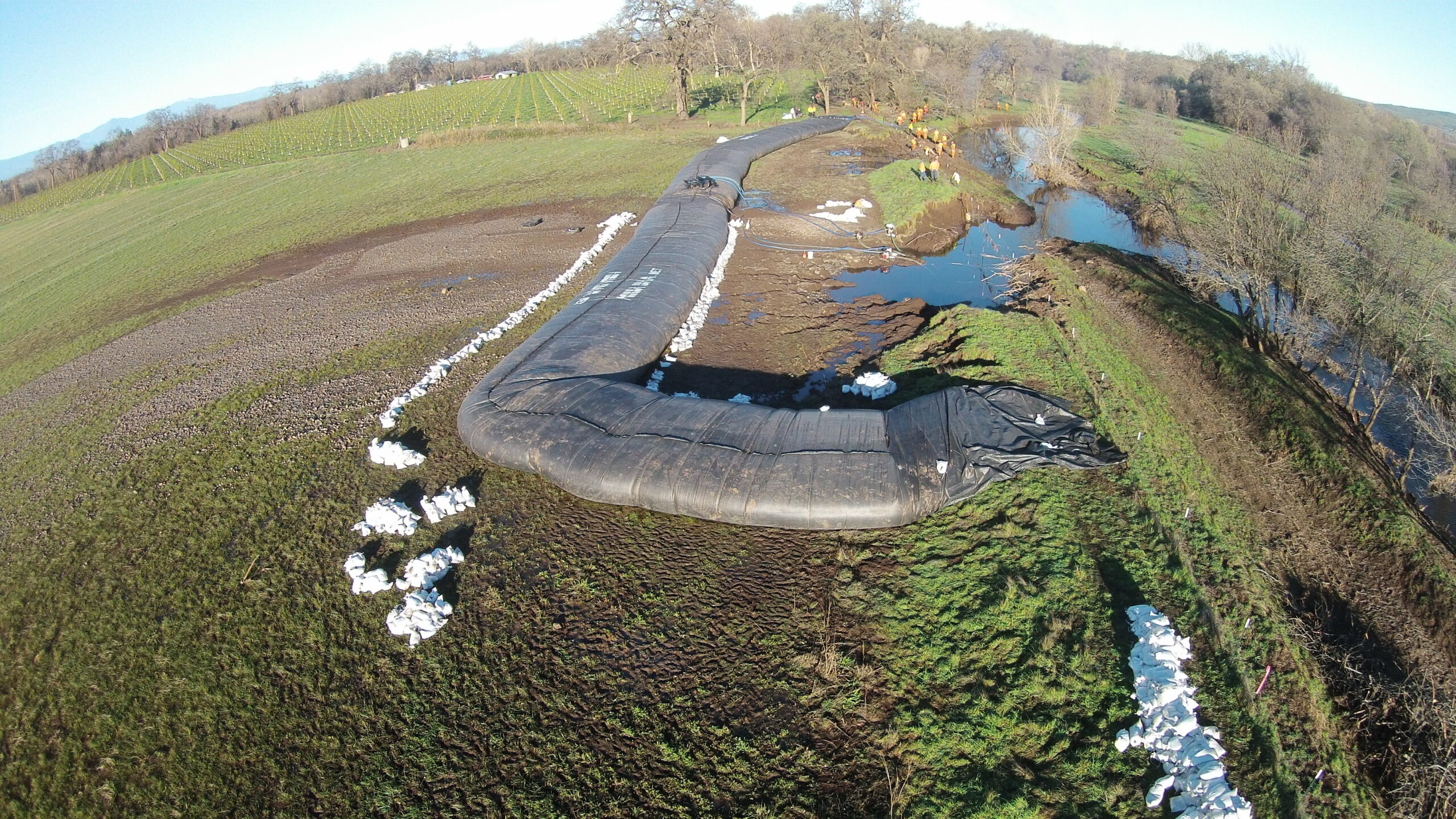
The second AquaDam® has almost completed filling.
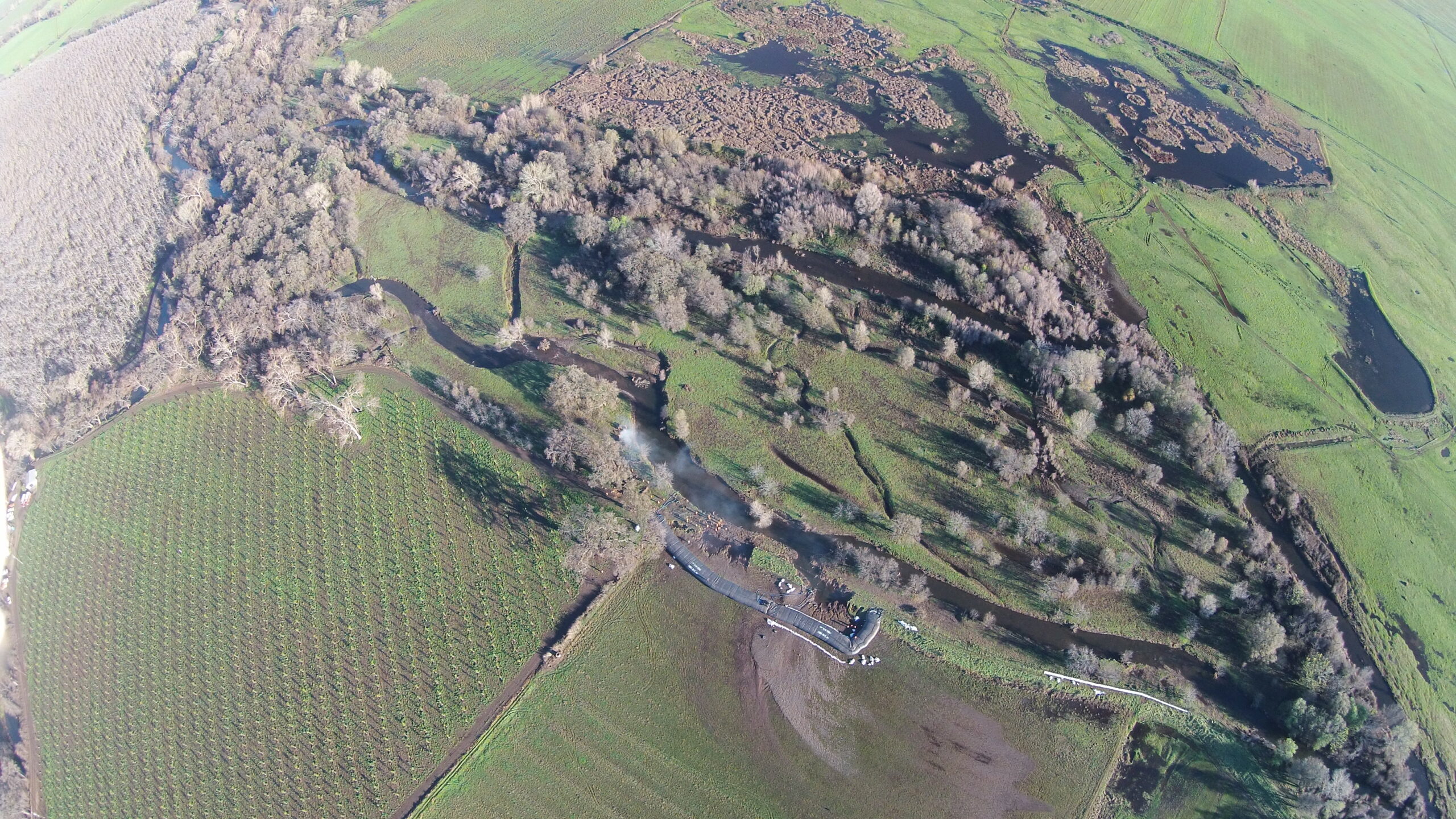
A great shot showing both Antelope Creek and Butler Slough.
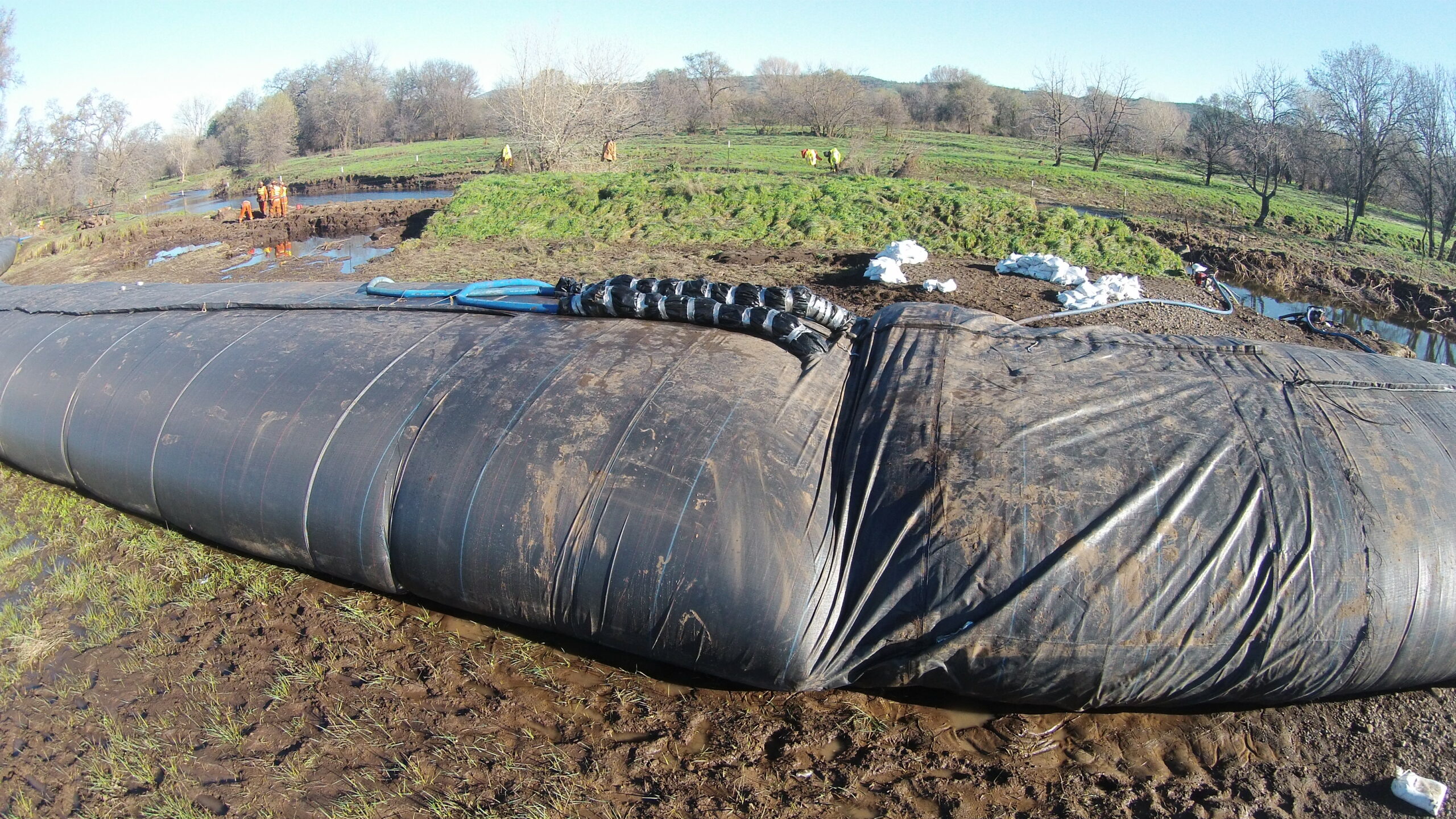
A side view of the connection collar add-on. This addition of extra of material allows for a better connection between the two AquaDams and helps keep them together.
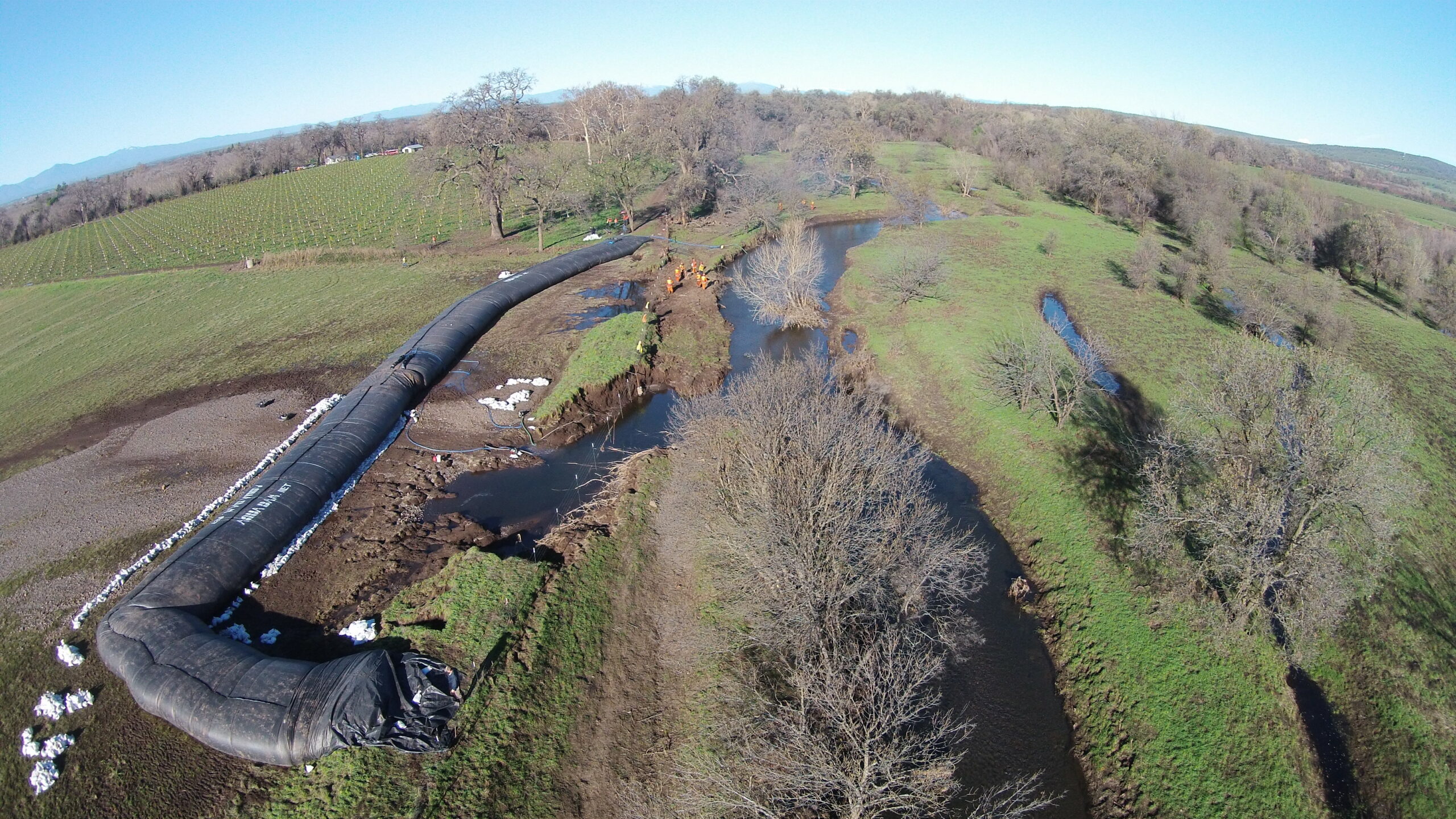
Both AquaDams have now been completely filled with water.
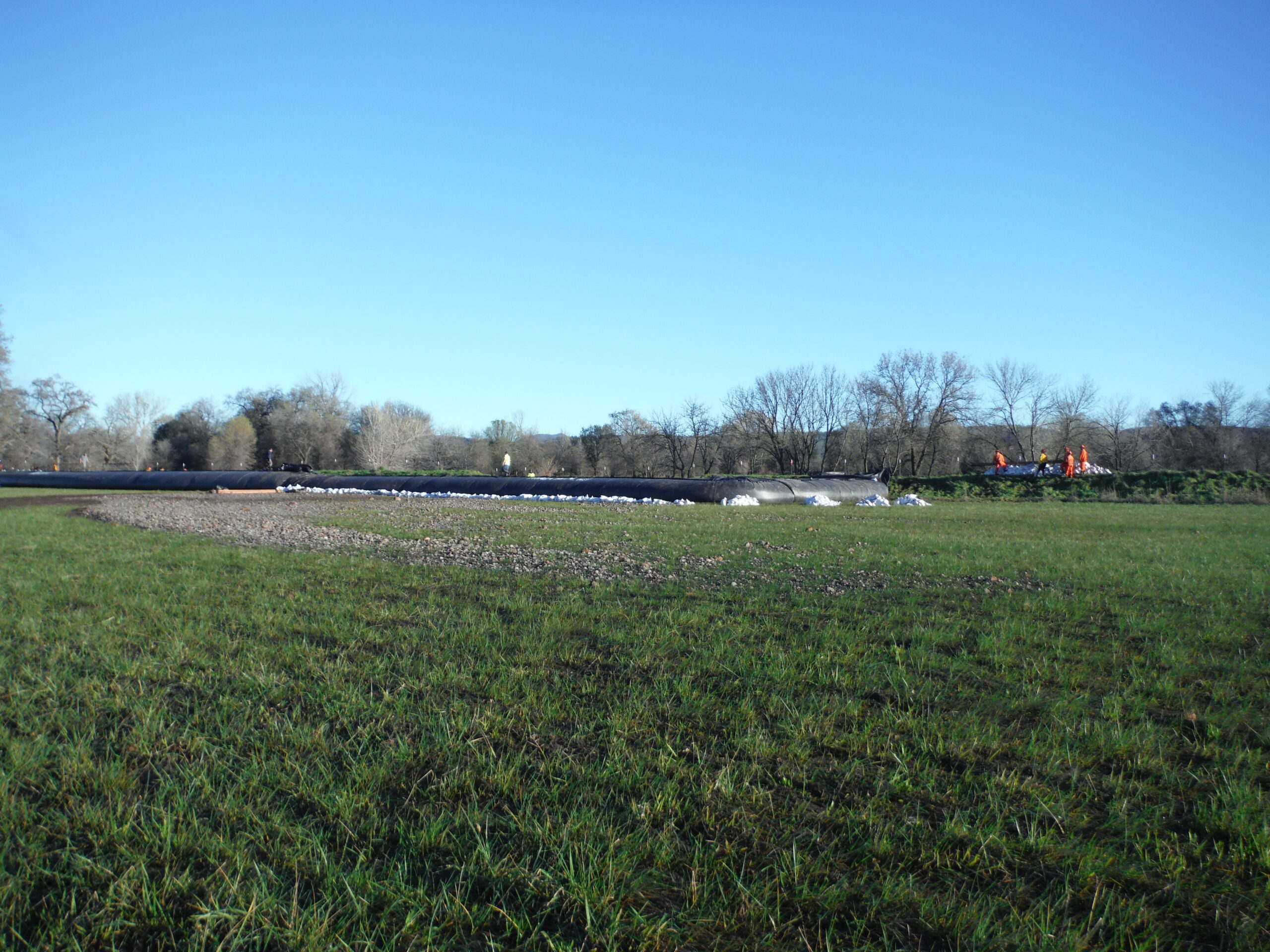
A photo taken from the ground, looking upstream at AquaDam® cofferdam system.
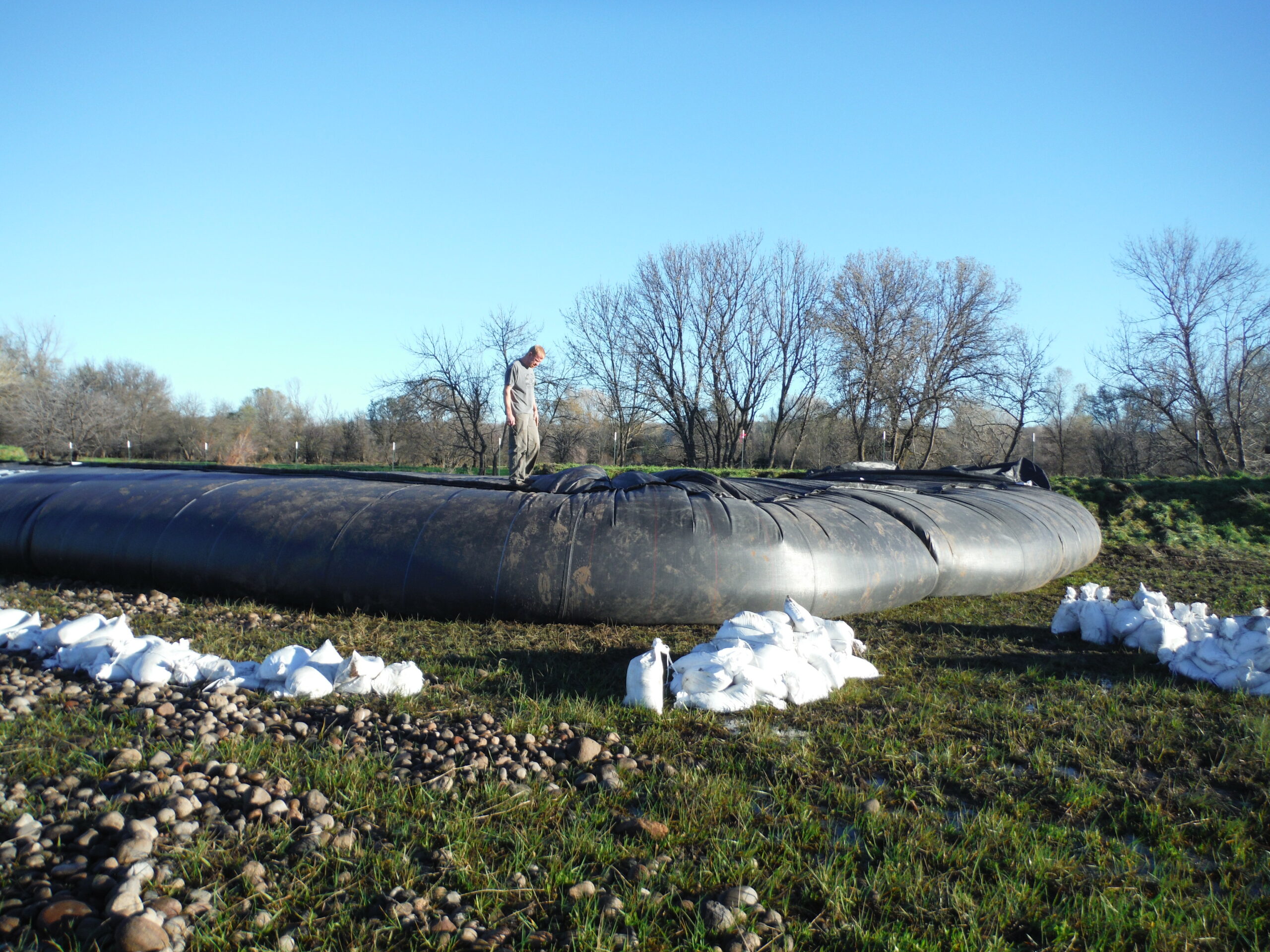
A worker is inspecting the turn in the second AquaDam.
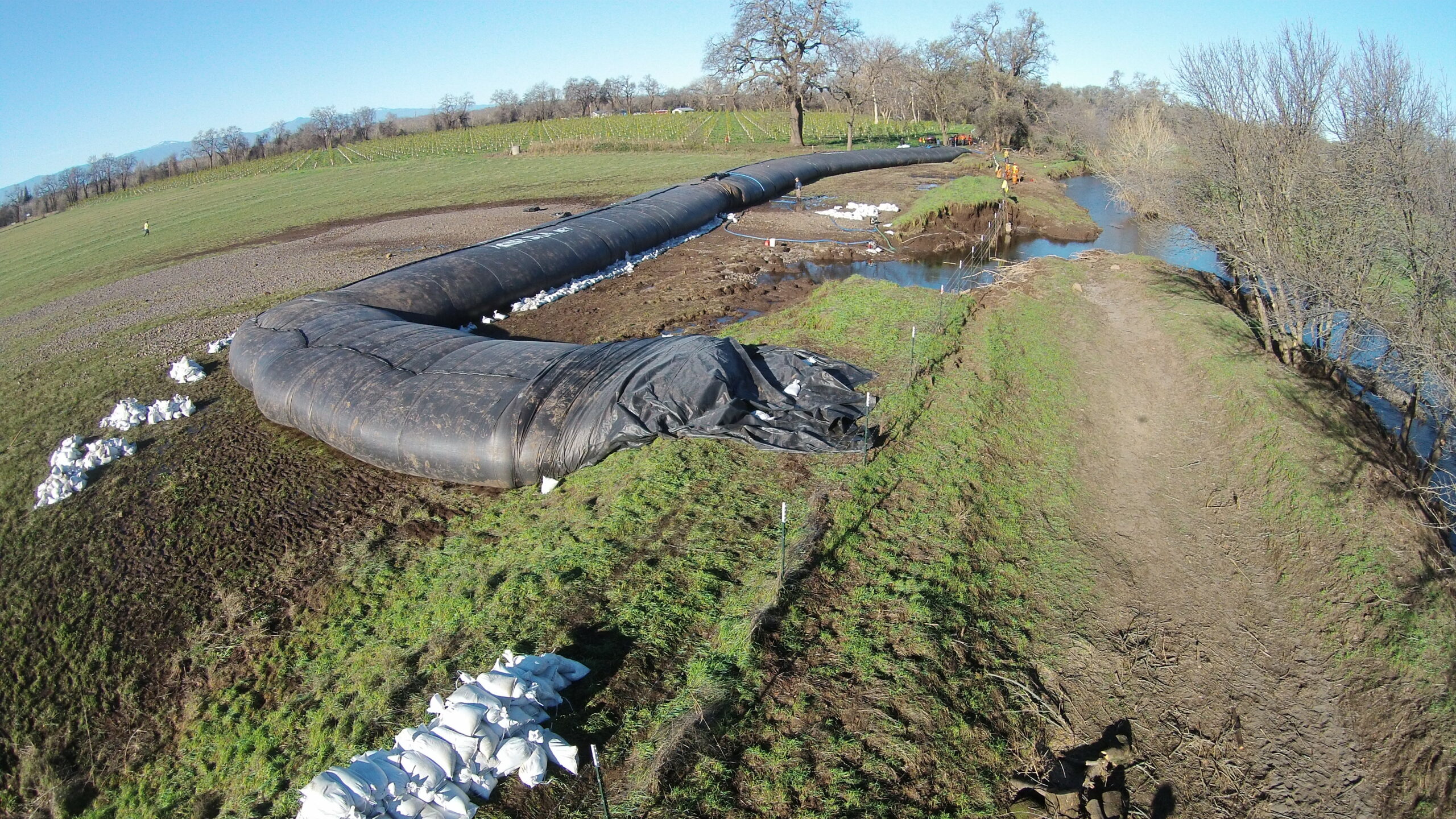
After the AquaDams are fully filled, the fill-tubes will need to be crimped off and taped so that no water will be able to flow back out of them.
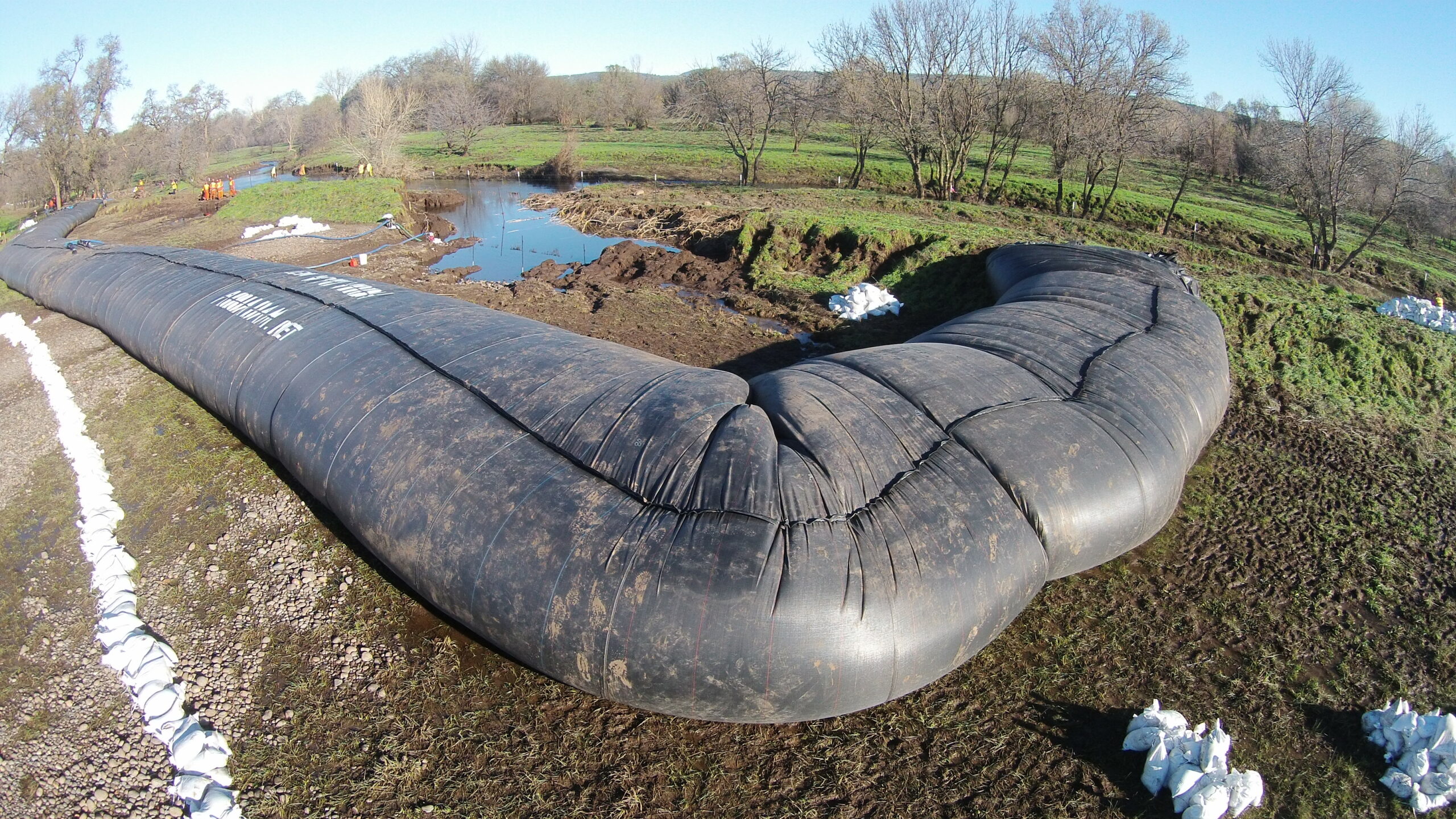
The tail end of the second AquaDam® dead headed perfectly to the ending bank (levee).
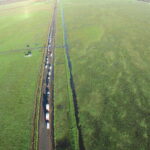
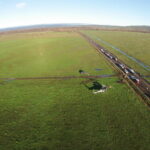
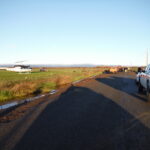
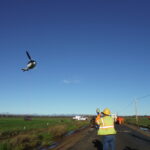
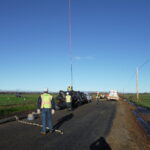
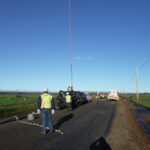
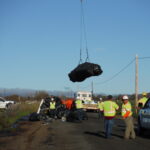
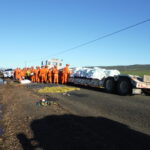
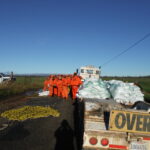
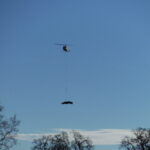
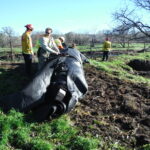
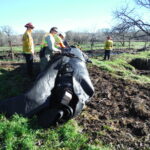
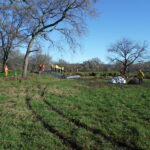
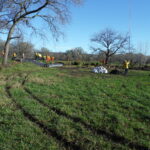
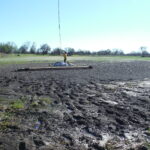
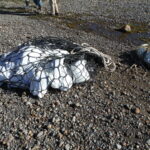
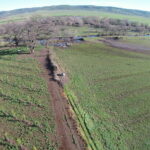
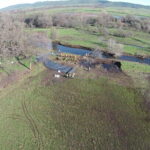
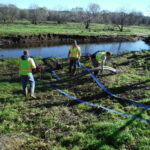
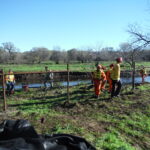
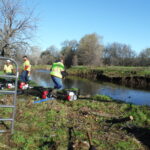
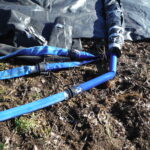
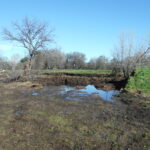
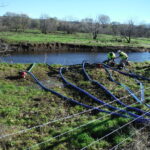
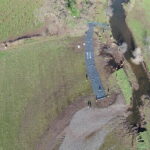
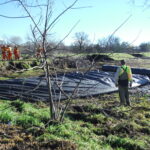
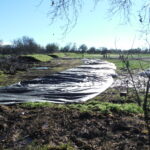
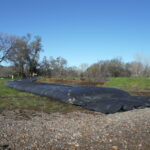
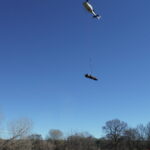
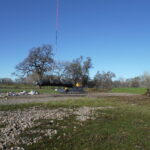
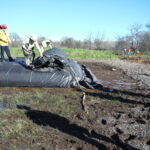
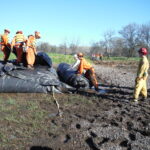
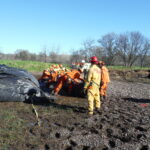
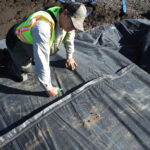
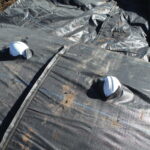
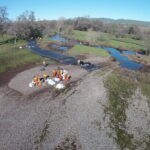
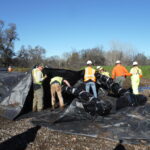
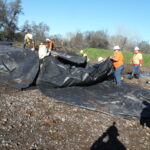
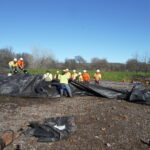
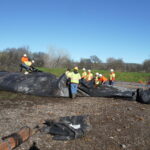
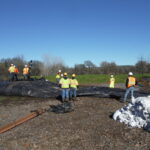
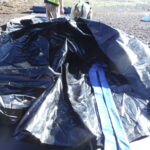
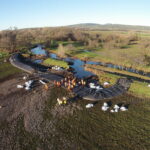
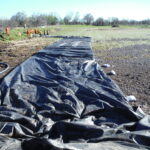
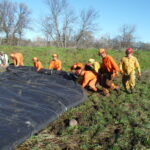
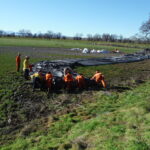
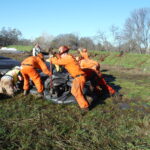
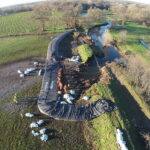
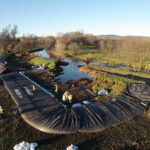
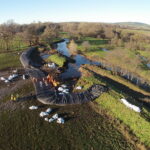
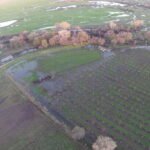
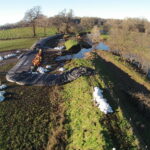
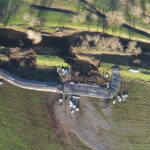
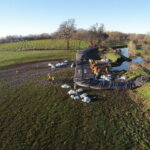
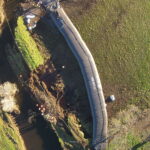

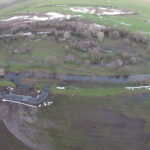
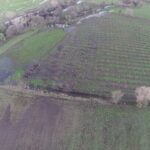
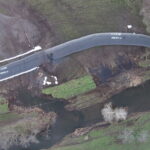
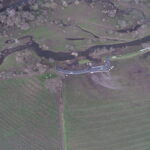
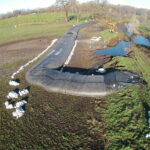
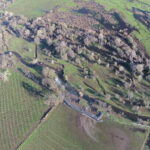
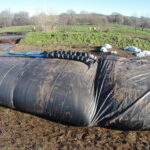
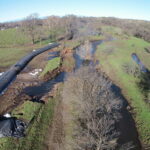
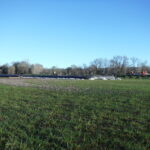
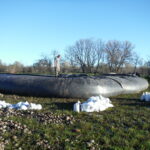
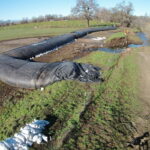
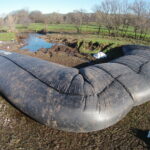
Two 8ft tall 17ft wide (fully filled) 200ft long AquaDams used in an “L” shape configuration, Butler Slough, River Diversion, Levee Breach Isolation
